
FREE AND FREAKY SINCE 1971 | DECEMBER 23, 2021 NOW OPEN
how do you make room for the possibility for hope?
ARTS & CULTURE
20 Books Another year of literary excellence from writers who speak Chicago
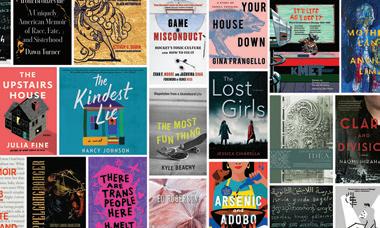
33 Reid | Playing Chicago theaters reopened—and several found innovative new leaders.
34 Dance Performers returned onstage, and asked probing questions offstage.
FILM
CITY LIFE
04 Street View This stylish cello player prefers to avoid the basic.
FOOD & DRINK
06 Marathon The great sluggish restaurant comeback of 2021
NEWS & POLITICS
08 Joravsky | Politics Wirtz, Reinsdorf, and Ricketts battle Bluhm to see which mogul the mayor and council love the most.
10 Isaacs | Culture Thompson Center survival is glad tidings, but about that atrium plan . . .
24 Rhodes | Book Review
Michael J. O’Loughlin’s book reveals compassion and activism by some in the Catholic Church during the height of the HIV/AIDS epidemic.
26 Collo-Julin | Help 2021 was a mixed bag for culture makers.
THEATER
30 Brush Fire The sketch and improv world remains chaotic, but there’s promising new growth.
Labor A narrowly averted strike in Hollywood brought attention to the punishing long hours in the film and television industry.
With Great Power Encanto is all about community and the MCU should follow suit.
Movies of Note The Matrix Resurrections is a breath of fresh air in a time when reboots are a dime a dozen, Nightmare Alley is a mesmerizing film of characters haunted by memory and regret, and The Tragedy of Macbeth more than earns its existence.
Paugam, City Pop evangelist and DJ 46 Shows and Records of Note Previews of concerts including Equip, Boy Harsher, and Lydia Loveless, plus reviews of releases by the O’My’s, Anatomy of Habit, Dave Rempis & Avreeayl Ra, and more 50 Early Warnings Rescheduled concerts and other updated listings

Gossip Wolf Maggie Kubley of Celine Neon drops a video about a private kind of self-care, crosscountry noise-punk collaboration Recent Ancestors release a selftitled EP, and Neph keeps winning over underground hip-hop heads.
TO CONTACT ANY READER EMPLOYEE, E-MAIL: (FIRST INITIAL)(LAST NAME) @CHICAGOREADER.COM
PUBLISHER AND PRESIDENT TRACY BAIM PUBLISHER AND EDITOR IN CHIEF KAREN HAWKINS EDITOR IN CHIEF SUJAY KUMAR
PRODUCTION MANAGER KIRK WILLIAMSON
SENIOR GRAPHIC DESIGNER AMBER HUFF
MUSIC EDITOR PHILIP MONTORO
THEATER AND DANCE EDITOR KERRY REID
CULTURE EDITOR SALEM COLLO-JULIN
ASSOCIATE EDITOR JAMIE LUDWIG
SENIOR WRITERS LEOR GALIL, DEANNA ISAACS, BEN JORAVSKY, MIKE SULA
STAFF WRITERS ADAM M. RHODES, KATIE PROUT, KELLY GARCIA
AUDIENCE ENGAGEMENT MANAGER YASMIN ZACARIA MIKHAIEL
EDITORIAL ASSOCIATES TARYN ALLEN, JANAYA GREENE LISTINGS COORDINATOR MICCO CAPORALE
VICE PRESIDENT OF OPERATIONS
ANN SCHOLHAMER
DIRECTOR OF DIGITAL JOHN DUNLEVY
STRATEGIC INNOVATION DIRECTOR MARIAH NEUROTH
DEVELOPMENT AND MARKETING ASSOCIATE CHINYERE FARR-DOUGLAS
MEDIA PARTNERSHIPS COORDINATOR YAZMIN DOMINGUEZ
EXECUTIVE ASSISTANT SANDRA L. KLEIN SPECIAL PROJECTS ASSOCIATE SHAWNEE DAY CIMA SUPPORT SPECIALIST SAVANNAH HUGUELEY
OPINION
ADVERTISING 312-392-2970, ADS@CHICAGOREADER.COM CLASSIFIEDS: CLASSIFIED-ADS@CHICAGOREADER.COM
VICE PRESIDENT OF SALES AMY MATHENY SALES DIRECTOR AMBER NETTLES
MUSIC & NIGHTLIFE
12 Garcia | News A divide between two murals in Pilsen makes neighbors ask: Who has the right to make art in a public space?

14 Prout | Housing Caught in a systemic cycle of incarceration, addiction, and homelessness,

32 Review The Play That Goes Wrong falls apart at Broadway Playhouse.

42 Galil | Listen The pandemic continues to play havoc with live shows and tip the playing field toward monolithic corporations, but Chicagoans still put out so many great records that nobody could keep up with them all.
44 Chicagoans of Note Van
A NOTE FROM AN EDITOR
WELL, CRAP. LIKE the unsatisfying feeling of a winter’s day without snow on the ground, so go our hopes for a 2022 free from worry about COVID-19’s ever-evolving hold on our health, livelihoods, and sense of community. The bitch is back, and even though her new drag name is Omicron (shout-out to Futurama fans who remember that Omicron Persei 8 is the name of Emperor Lrrr’s planet; apologies to everyone else), we all know that our tasks ahead are the same as they were in March of 2020: mask up, avoid large crowds, get the vaccine plus the bonus tracks. I spoke to Nick Wylie at Public Media Institute this week about all the ups and downs of life as a cultural producer in the wake of Omicron’s debut, and he gave me some food for thought: not the most pleasant sit-
uation but there’s some positive work happening with the help of foundations thinking in the right direction. And writer Adam Morgan graced us for the second year in a row with his picks for the best Chicago-linked books that were published this year. Yes, even in the face of total uncertainty and moments of hopelessness, the written word must still prevail. If you’re reading this, I can only assume that you are like me and still believe in the power of publishing, dear Reader reader. I thank you from the bottom of my heart for giving all of us a reason to keep writing, reporting, and bringing you the best of Chicago’s stories, despite whatever the virus has planned.
SALEM COLLO-JULIN, CULTURE EDITOR
SALES TEAM LENI MANAA-HOPPENWORTH, TIM OGDEN, TED PIEKARZ, WILL ROGERS, LISA SOLOMON DIGITAL SALES ASSOCIATE AYANA ROLLING
NATIONAL ADVERTISING VOICE MEDIA GROUP 1-888-278-9866 VMGADVERTISING.COM JOE LARKIN AND SUE BELAIR
DISTRIBUTION CONCERNS distributionissues@chicagoreader.com 312-392-2970

CHICAGO READER L3C
BOARD PRESIDENT DOROTHY R. LEAVELL TREASURER EILEEN RHODES AT-LARGE SLADJANA VUCKOVIC
READER INSTITUTE FOR COMMUNITY JOURNALISM, INC. CHAIRWOMAN EILEEN RHODES
TREASURER CAROL BELL
DIRECTORS ALISON CUDDY, VANESSA FERNANDEZ, KIM L. HUNT, JACKIE KAPLAN-PERKINS, DOROTHY R. LEAVELL, SLADJANA VUCKOVIC
READER (ISSN 1096-6919) IS PUBLISHED BIWEEKLY BY CHICAGO READER L3C 2930 S. MICHIGAN, SUITE 102 CHICAGO, IL 60616 312-392-2934, CHICAGOREADER.COM
COPYRIGHT © 2021 CHICAGO READER PERIODICAL POSTAGE PAID AT CHICAGO, IL
ALL RIGHTS RESERVED. CHICAGO READER, READER, AND REVERSED R: REGISTERED TRADEMARKS ®
2 CHICAGO READER - DECEMBER 23, 2021 ll
50
51 Savage
CLASSIFIEDS 52 Jobs 53 Apartments & Spaces 53 Matches THIS WEEK
READER
Love Dan Savage offers advice to a lover of bondage who doesn’t think straight people are freaky enough.
CHICAGO
| DECEMBER 23, 2021 | VOLUME 51, NUMBER 6
IN THIS ISSUE ON THE COVER: ILLUSTRATION BY JOI FULTON. FOR MORE OF FULTON’S WORK, GO TO JOIFULTON.COM.
Now you can have Grandma’s cookies every day.
AARP advocates for multigenerational housing in your community.
Chicago’s new Additional Dwelling Unit ordinances give aging adults more choices on how and where they live. They allow people to convert attics, basements, and backyards into additional living spaces so people can live with their family as they get older. We support multigenerational housing and are proud that these options are available to five zones in Chicago hopefully more soon. As your wise friend and fierce defender, AARP is always in your corner working to help you keep your family together as loved ones grow older. Find out how to update your home at makeroomforfamily.org

DECEMBER 23, 2021 - CHICAGO READER 3
T:9.75" T:9.875"
CITY LIFE


Street View
More is more






This stylish cello player prefers to avoid the basic.
By ISA GIALLORENZO








“Iwill go to a place and prefer to be overdressed. It’s just nice to have fun with things like that,” says 23-year-old Ari Scott, a cello player who’s finishing her master’s degree in music performance at DePaul. “I love to dress up for recitals. It’s a great excuse to go all out and wear a ball gown or something,” she says.


Scott fondly remembers a performance where she sported a black-and-blue iridescent skirt and crop-top ensemble, with flower appliqués. “[I played] this very dramatic, moody [20th-century Russian composer Sergei] Prokofiev piece. [The outfit] was so layered and flowy. It was gorgeous!”
Scott needs to spread out her legs while playing the cello, so she often favors big poofy skirts for her gigs. But even on a bike on a cold weekday morning, Scott avoided the basic. On the way to meet her friends for tea, she dressed like she meant it: clad in an ethereal monochrome white look, sprinkled with all kinds of textures. “I pretty much did it on the fly,” she says. “I really like flu y things!” v @chicagolooks

4 CHICAGO READER - DECEMBER 23, 2021 ll
Ari Scott was photographed in early December.
Best of Chicago 2021 Arts & Culture Music & Nightlife City Life Food & Drink Buy Local Cannabis Sports & Recreation BONUS ROUND OF NOMINATIONS OPEN NOW! chicagoreader.com/best CELEBRATE THE THINGS YOU LOVE IN THE CITY YOU LOVE WITH THE PAPER THAT LOVES YOU! sponsored in part by presented by NOMINATE YOUR FAVORITES IN THESE CATEGORIES! NOMINATE YOUR FAVORITES IN THESE CATEGORIES!
ISA GIALLORENZO
We envision a racially just and equitable society as the full inclusion of all people into a society in which everyone can participate, thrive and prosper. In an equitable society, everyone, regardless of the circumstance of birth or upbringing, is treated justly and fairly by its institutions and systems. We ask for your support to make this vision a reality.





















































DECEMBER 23, 2021 - CHICAGO READER 5 PLAY TODAY PLAY TODAY
Gi Smart.
Anthony
Bryce
Greg
Kara Rich
Denise
PARK-RIVERFOREST CommunityFoundation Visit oprfcf.org to learn more. chicagoreader.com/50 It’s the party of the half-century and you’re invited. Give us a birthday shout-out by sharing some of your fondest memories of the Reader. pleaserecyclethispaper
OAK
THE YEAR IN FOOD
The great sluggish restaurant comeback of 2021
It’s a marathon, not a sprint.
By MIKE SULA
When anyone asks me what my favorite new restaurant of 2021 was, I full-on embrace my bias and say Monday Night Foodball, the Reader’s weekly guest chef pop-up at the Kedzie Inn in Irving Park. I’ve hosted these pop-ups nearly every Monday since late August, for which we in-

vite many of the nimble, underground virtual restaurants I’ve covered since the dawn of the pandemic. And I haven’t really shut up about them since then. Chefs get to flex novel ideas and realize their wildest inspirations, cooking to order in an actual dining room with living guests—and they keep all the money from the
food they sell. There’s no split with the bar, which benefits from its own booze sales on nights when otherwise it would be closed.
For me, I get to indulge in the fantasy of opening a new restaurant every week with none of the financial risk or hard work. I do “work” the Foodballs, though. If you’ve come
through I probably greeted you at the door, or served your food, or wiped up your dribbles after you left. I’m not quitting my day job (nor my radical fungi farm), but it’s fun. And it’s given me a few enlightening firsthand glimpses of what workers in the trenches of the restaurant industry have to deal with day-to-day.
One-o pop-ups are in some ways like opening nights at brick-and-mortar restaurants. If you’re a seasoned diner, you go in with adjusted expectations. You’re among the first to try something new and exciting, but you also know the chef is working in a new kitchen, and sometimes there are hiccups. Only amateurs get mad at this. But shout-out anyway to the hangry old dude in October, tired of waiting for his chicken sandwich, who went out of his way to tell me he’d be tipping the kitchen—but not me.
Here’s a tip: it’s probably not your server’s fault.
Another: I’m not in it for the tips. If you tip me anything, I’m just going to give it to the kitchen. Just tip the kitchen!
Anyhow, MNF has only cemented my belief that the traditional hospitality industry structure needs to continue to evolve; to be more inclusive, diverse, equitable, and open to change. In 2021 I tried to focus as much as I could on subjects that embodied that, whether it was Mona Sang, the city’s first and only Cambodian caterer, or Pablo Soto, our first and only Chilean empanadero, or Nemanja Milunovic, whose Kiosk Balkan Street Food ghost kitchen was in the running for my second-favorite restaurant of the year.
Kiosk, by the way, was the sad, sole example of a restaurant I wrote about that did not survive its first year (there’s usually a few). Shortly after I wrote about him in October, Milunovic closed down after the sudden passing of his mother. But let me be the first to tell you we haven’t seen the last of him. More on that next year.
Meantime, there were plenty of edible
6 CHICAGO READER - DECEMBER 23, 2021 ll
Ricardo Blake of St. Bess Jerk MATT SCHWERIN FOR CHICAGO READER
Search the Reader’s online database of thousands of Chicago-area restaurants at chicagoreader.com/food
thrills to be had outside the brick-and-mortars in 2021, from the wild ferments of Vargo Brother and Overgrown Orchard, to the ephemeral beauty of Maa Maa Dei’s seasonal pastries, to Ăn Vặt Cô Béo’s lawless universe of Vietnamese snacks. I can’t wait to buy fresh pasta from Gemma Foods whenever I want. It was a thrill to watch people like these adapt and thrive amid the lingering pandemic.







Despite all that, there was plenty of good brick-and-mortar news, or in one case, steel shipping container news, when Bobby and Brooklyn Morelli of Bronzeville’s Hot Dog Box

served up the feel-good, father-daughter sausage story of the year.

I almost bookended the year with reviews of two new Malaysian restaurants: Kapitan and HD Cuisine, which underscore an ongoing boomlet in the food of the larger Malay Archipelago. To that you can add Joe Fontelera’s

Pinoy Boonie Foods in the reascendant Revival Food Hall, Forest Park’s Thai sweet shop Habrae, and Waroeng, the midwest’s one-stop shop for Indonesian groceries.
I may be trying to subconsciously manifest a Trinidadian drift after last week’s Foodball with Trini Zaddy, and earlier this summer with


the return of Darryl Hicks and his Cafe Trinidad ghost kitchen. I’d love to see Hicks do for roti what Ricardo Blake is doing with St. Bess Jerk.

What’s a year in review without regrets? I regret all the places I loved but failed to write about until now. Among them: the French-Canadian pleasures of Dear Margaret; Big Jones’s New Year’s Day fried chicken brunch; the paradigm-shifting brisket at Soul & Smoke; chicken parm at the Moonwalker; and the fried bologna sandwich at Big Kids.

There was lots more, for sure, in a year that turned out not to be the roaring restaurant comeback we’d all hoped for. With Omicron closing restaurants again, it’s only the latest stark reminder that we’re not out of this yet. A better way to look at it is we’re still coming back. Best yet, my favorite restaurant is coming back too. There are lots of amazing chefs lining up for the next season of Monday Night Foodball. I’ll announce them after the new year right here at the Reader v

DECEMBER 23, 2021 - CHICAGO READER 7
@MikeSula
Natalie Vu of Ăn Vặt Cô Béo JEFF MARINI FOR CHICAGO READER
POLITICS
The year of the mogul
Wirtz, Reinsdorf, and Ricketts battle Bluhm to see which mogul the mayor and council love the most.
By BEN JORAVSKY
With 2021 coming to an end, it’s clear that this has been the year of the mogul.
I know what you’re thinking. You’re thinking: every year is the year of the mogul around here.
Good point. Certainly, last year was. In 2020, Ken Griffin, the hedge fund billionaire who is the richest man in the state, funded commercials that convinced a majority of voters to vote against their interests and for his interests.
That was the referendum on the Fair Tax, which would have raised taxes on the richest of the rich, like Gri n, to help pay for services for the rest of us. That is, had so many of the rest of us not been brainwashed by Griffin’s commercials. Not sure I’ll ever completely get over that.
I’ve got moguls on my mind since the City Council hearing where four of them showed up to plead for the opportunity to make even more money than they already have.
Specifically, it was three moguls against one vying for council support for opposing propositions.
On one side was a power-packed squad featuring Jerry Reinsdorf, Rocky Wirtz, and Tom “Boo” Ricketts, who, respectively, are the owners of the White Sox and Bulls, the Blackhawks, and the Cubs.
For the record, Tom Ricketts’s middle name is not Boo. It’s just that I can’t help but boo when I hear the Ricketts name, on account of their deep and abiding love for Donald Trump.
I know I’m not alone, as this is a city that voted overwhelmingly against Trump. It’s like the Ricketts are going out of their way to torment us.
On the other side was Neil Bluhm, who has made a fortune running various gambling establishments—including a casino in Des Plaines.
Here was the issue they brought to the City Council . . .
Reinsdorf, Wirtz, and Ricketts want the
right to operate sportsbooks at the United Center, Sox park, and Wrigley Field.

Bluhm doesn want them to. Why? His stated reason is that he thinks competing sportsbooks would take away millions of dollars that Chicago could make from the casino that one of these days it will get around to building.
And he says he cares so much about the people of Chicago getting every nickel they can from the casino.
Reinsdorf wasn’t buying it. “What is perplexing is that Neil Bluhm, who does not want our buildings to have sportsbooks, met with us on several occasions seeking to operate sportsbooks in our buildings. And that was long after the casino was approved for Chicago.”
In other words, Bluhm doesn’t really care about diverting millions from Chicago’s casino so long as the diversion is going to businesses he owns. At least, that’s according to Reinsdorf.
Bluhm did not respond to Reinsdorf’s comments.
In the aftermath, I had a decision to make— which mogul’s side was I on? Tough decision.
You’d think I’d go with Reinsdorf. As he owns the Bulls, my favorite team in the sports world.
But I already subsidize his operation by continually purchasing Bulls hats. I buy so many Bulls hats that the salespeople at Lids have taken to calling me Imelda. Apparently, I am to Bulls hats what Imelda Marcos was to shoes—a compulsive hoarder.
So I’m actually leaning toward Bluhm, who makes a fairly legitimate point, even if it is self-serving.
The Chicago casino was intended to fortify police and fire pensions, both of which are treacherously underfunded at the moment.
So the mayor and aldermen haven’t even figured out where Chicago’s casino will go— much less built it—and they’ve already obligated the money they’ll raise there.
I’m second to none in my support for retired police and firefighters.
And the most logical solution to fortify those pensions is to raise taxes on the richest moguls in the state.
But, as I already mentioned, the voters of Illinois, largely brainwashed by commercials funded by Ken Gri n, voted down the Fair Tax.
So we’re going to take care of retired cops and firefighters by squeezing the suckers who think they can beat casinos, even though the systems are set up to make sure they lose.
Bluhm argues that if you let gamblers bet at the United Center or Wrigley or Sox park, there will be fewer suckers to squeeze at the casino.
It sounds like a compelling argument—even if it’s not been supported with objective studies. And I give him credit for pointing out that there are collateral consequences to the development deals our city makes.
That is—if you spend money in one place, you run the risk of undercutting an operation down the street. So you may wind up with fewer tax dollars overall.
The most obvious example of this is on the north side, where the city decided to underwrite the Lincoln Yards development with a $1.3 billion TIF handout.
Essentially, the handout may make it easier for Sterling Bay to lower their rents and attract tenants. Meanwhile, competing property owners throughout the area struggle to find tenants. And if you don’t believe me that it’s a struggle, I urge you to take a drive along Clybourn Avenue sometime and see all the vacant storefronts.
The mayor and the aldermen never tell you that there’s a downside to doling out TIF goodies. It’s as though they believe in TIF magic. Hey, maybe we should put Bluhm in charge of the TIF program. Well, it’s a thought.
Back to the moguls. Eventually the City Council, at Mayor Lightfoot’s urging, tried to satisfy both sides.
They voted to allow Reinsdorf, Wirtz, and Ricketts to operate their sportsbooks (they will also allow sportsbooks at Soldier Field and Wintrust Arena).
But they slapped a two percent tax on betting at the sportsbooks. That will raise roughly $400,000 to $500,000 a year—which won’t do much to help retired cops and firefighters. But it may make Bluhm feel that the city cares about his feelings.
There you go, Chicago. You’re now free to throw away your money at sportsbooks. Lucky you.
Happy New Year, everybody! May 2022 be the year where your mayor and aldermen treat you like a mogul. v
8 CHICAGO READER - DECEMBER 23, 2021 ll
NEWS & POLITICS
Moguls are the hands-down winners of the council’s sportsbooks bonanza. BRIAN P GIELCZYK / SHUTTERSTOCK
@bennyjshow
Dear Chicago Taxpayers STOP LORD LIGHTFOOT
Many Chicago Employees have proudly and professionally served the citizens. We are helping you at your worst and your best. We are providing for you in the dead of winter and the blistering heat. Twenty-four hours a day, three hundred and sixty-five days a year. Many Chicago Workers are hurt, severely injured, permanently disabled, and even die.
An employee’s reward is the denial of claims, harassment, and retaliation. Chicago weaponizes the Inspector General and multi-million dollar law firms drag claims on for years and decades. Many disabled workers live in cars under bridges, are homeless, and eat out of dumpsters. Chicago employees are unable to claim social security and unemployment when injured. Unions fail to fight for these employees.
The COVID-19 pandemic caused massive injuries to Chicago City Employees. Some unions gave a 79-cent cloth mask to last until the ordeal ended. The City denies these claims. No PPE. Employee records are changed to different medical diagnoses. FOIA requests are denied for no reason. Illinois Department of Labor refuses to enforce safety rules.


Proud employees want to make their own decisions on the Vaccine; they have earned the right. Private Workers Compensation records are shared between departments. Workers still have Constitutionally protected rights, and they should be observed.

Signed: Patrick McDonough (Chicago Clout), Robert Starbuck, Ronald Bober, & Thomas T. Morris































Help us fight: https://givesendgo.com/G2CMJ










This ad is paid by Patrick McDonough of ChicagoClout.com and Thomas T. Morris










DECEMBER 23, 2021 - CHICAGO READER 9
are
to launch our 50th Anniversary Reader Merchandise.
your Reader merchandise and show your
for
free
Store Shop the Reader chicagoreader.com/50 PAID ADVERTISING
We
excited
Get
support
Chicago's
and freaky independent source for local journalism since 1971.
CULTURE
Thompson Center survival is glad tidings

But about that atrium plan . . .
By DEANNA ISAACS
Everybody knows, especially at this season of the year, it’s a bad idea to look a gift horse in the mouth.
But what if he opens it? What if he flashes you a great big horsey smile? And you just can’t look away fast enough?
I’m asking because we got a wonderful gift last week, when Governor J.B. Pritzker announced the winning proposal for the purchase of the James R. Thompson Center.
Over the last year, as the fate of the building hung in the balance and its vaunted architect, Helmut Jahn, met a violent accidental death, the Thompson Center’s been a subject of concern. It’s not COVID, climate change, or guns on the street, but the sale was a close call. Only two proposals were submitted. The bid not chosen, it turns out, would have demolished the 1.2-million-square-foot, 36-year-young building and replaced it with a two-plus-million-square-foot tower.
But Chicago has a forest of imposing skyscrapers, and nothing else like this squat concoction of glass and steel that looks from the outside like a spaceship docked in the heart of the Loop, and reveals, on the inside, the city’s most vertiginous and spectacular atrium.
The National Trust for Historic Preservation calls it “Chicago’s foremost example of grandly scaled Postmodernism”; it’s the building that put Jahn on the international map, and the inspiration for his famous Sony Center in Berlin.
If the alternate proposal had been chosen— poof! Once again, in the city whose claim to fame is its architecture, a landmark (not yet landmarked!) would have vanished. It was a nail-biter for preservationists and anyone who cares about Chicago’s future.
So the announcement that the Pritzker administration, which had been acting like it couldn’t wait to dump this “oversized, outdat-
ed, and expensive” behemoth, had selected a proposal that will save the building was joyful tidings.
JRTC Holdings, an entity created by Chicago-based developer Michael W. Reschke (his Prime Group developed projects like the Citadel Center and 77 W. Wacker), will purchase and redevelop the building; the architect on the job will be Helmut Jahn’s own firm, JAHN. And some state o ces will remain there—the state has committed to purchase about 30 percent of the renovated space. That’s an arguably good thing, because Jahn designed the largely transparent structure to embody the ideal of open and accessible government; the conical cap on its skylit atrium is a nod to traditional government center domed design, in particular, the massive Federal Building that once stood at Dearborn and Adams.
A lot of big numbers were thrown around. The developer will pay $70 million to buy the
building, and is planning to spend roughly $280 million on the renovation. The state will pay $148 million for its space, but, according to Pritzker, will save $800 million over time, including $20 million a year for the next 30 years in operating costs and rent for other offices it’s been leasing. If anyone explained why the state was estimating repair costs at $325 million (ballooning to $525 million by 2026), but the developer can gut and redo it for $280 million, I haven’t heard it.
But no one in the preservation camp is quibbling about money right now; with the deal slated to close this summer, eye on the prize is the watchword. “We’re thrilled that Prime Group has stepped up to the plate,” is what Landmarks Illinois’s director of advocacy Lisa DiChiera told me. “We have this victory and we need to embrace it.” Preservation Chicago executive director Ward Miller echoed her sentiments. “We’d like to see the building landmarked,” Miller told me, but “Let’s take a moment to celebrate.”
Miller notes that since the Thompson Center was built on the site of the Sherman House, there’s precedent for a hotel as part of the project, and that there could be financial incentives in the form of tax credits for preservation of important interior details.

But just a word about the teeth revealed in that big horsey smile. In what we can see of the interior in the renderings displayed last week, the atrium looks like it’s been whitewashed, wiping away not only the often-derided coral and aqua color scheme, but the quality that actually makes the space spectacular—its dynamic, latticework pattern of steel, glass, and light. Stepping from the flat plane of the Thompson Center plaza into that swirling grid, with its towering profusion of detail, is a mind-bending visual shock.
The interior rendering, on the other hand, looks heavy, sterile, and static. Dabs of greenery won’t fix that, but maybe JAHN will. v
@DeannaIsaacs
10 CHICAGO READER - DECEMBER 23, 2021 ll NEWS & POLITICS
Current interior atrium of the James R. Thompson Center; rendering of the proposed new atrium WIKIMEDIA COMMONS/COURTESY JAHN ARCHITECTURE, INC.
BULL HO N N
Love & Nappyness provides hair care and confidence
Istarted growing my hair when I was in college at Northern Illinois University. The school had a really strong Black presence, but because it was a PWI (predominantly white institution), Black people were sometimes—for lack of better words—treated like shit by the school, and especially by the white students.
There were a lot of programs that were created and implemented to help young Black folks, Black men specifically, to present a certain way in order to be ready for a professional setting. When I first got to Northern, I’d go to class dressed up in button-up shirts and slacks. Then, in my second-to-last year, I was like, “Yo, This is not comfortable. It doesn’t fully match who I am.” So I started wearing hoodies and sweats to class like I should’ve been the whole time. I also started growing my hair—I haven’t cut it since around February of 2015.
The idea that Black men have to look a certain way to be taken seriously is a problem. It’s profiling. It causes a lot of problems to say, “In order to be taken seriously at your job, you gotta have waves, you gotta have a fade, you gotta have nice hair.” What if the guy with dreads is just as smart and even better at the job than the dude with the haircut? That’s what I wanted to embrace: the presentation doesn’t matter, it’s who the person is.
The term “nappy,” in the Black community, is not positive. At that time my hair was in a nice, organized nappy fro, so I was like, “Yeah, my hair is nappy. I’m not about to present myself the way standards say I should, but I am going to be confident.” Nappy Talk was a full album of shittalking and championing myself and how much I love my natural real self, inside and out. The hair was just a metaphor for that.
Hip-hop culture is Black culture. What you see in the music is what’s actually happening on the ground when it comes to hair, and more and more people are letting their hair grow naturally. In a sense, it’s a form of rebellion, but the idea of a rebellion feels intentional. In some ways that’s the intent behind it, but in other ways, the intent is not to rebel—it’s to be yourself. And to call it a rebellion gives too much credit to the people that we might be rebelling against.
My generation is championing this idea, through music, of being yourself and saying “fuck the establishment.” And [younger people] now are living it. I’m doing a residency at a school right now and the students’ hair is
so diverse. None of them have perms, none of them come to school with their hair pressed. They all have braids, dreads, or wear it in a fro—guys and girls. I think the [younger people] are doing a really good job when it comes to presenting themselves, and not allowing society to tell them how to do it. The bigger issue is an issue of self love. The conversations that are important to be having with young people, especially in Chicago, is like navigating self-love, and navigating living in a city that has the amount of issues our city has.
The thing that’s dope about Love & Nappyness is that it doesn’t just benefit young people, but also people transitioning from incarceration. I’m very glad people embrace and understand the idea that giving people these products could help people enhance their self-image and help them get jobs. But the bigger thing is that the work of Ignite and St. Leonard’s is so important. It’s not just about giving them the products, but doing the Long Hair Don’t Care show, where we can raise money for their causes and give them a platform to talk about their work. I’ll always be happy to do the product drive, but what’s just as important is, “How can we support Ignite and St. Leonard’s and other charities in the city?” That to me is the beautiful thing. I fuck with the press and I fuck with the people, but when I go to St. Leonard’s or I go to Ignite and drop these boxes o and they talk to me about how their residents respond to it—or I get to meet their residents—that’s when I know we must be doing something right.
Matt Muse is a Chicago hip-hop artist and activist. In 2019, he founded the Love & Nappyness Hair Care Drive, an initiative that fosters self-love and wellness through natural hair care and community support. In its third year, Love & Nappyness, which is named a er the title of Muse’s 2019 album, benefited St. Leonard’s Ministries, a nonprofit organization that empowers formerly incarcerated individuals, and Ignite, an organization that supports youth experiencing homelessness. The drive, which aims to collect sealed and unused natural hair care, skincare, and personal hygiene products, ran through December 17, culminating with a benefit concert at Metro that evening. The Long Hair Don’t Care show featured performances by Muse, theMIND, and headliner Jamila Woods.

Bull Horn is an avenue to give wings to the stories that matter most. This series, from Red Bull in partnership with the Chicago Reader, invites guest writers, artists, activists, and community members to share their ideas and amplify timely, crucial topics they feel are important now.

because we are ours, no matter the distance
By
sadness is the species of knowing; all mirth, sunshine, cotton candy pink and sticky mouth, pretty horses, dragon carousel, blinding sun, carefree sunday, sister arm hanging round brother neck, easy, must come to an end. race to the bumper cars, easy, must come to an end. the day of our neighborhood carnival we suspend belief in each other’s worst qualities for the physics
that pins us to a spinning ride blurred red like a dark room. days of green hallway and hot august, destiny’s child singles, homecomings with shoes woodchip-full, summer dusk its own universe. must come to an end. the creature of closeness, the I-go-where-you-go, the watchful eye over your catcher’s mitt, the synchronized spice girls’ choreo, the near-breaking under your mean but letting our blood bind us tight like glue, the blind idolatry, all eventually succumb to something. joy is the species of not knowing; all distance, puberty, fubu jean and cam’ron verse, budding bookworm and high achiever, growing up and growing in, takes childhood maxims and turns them to halves. truth: if blood was thinner than water I might have drowned. but our blood scraped the same sidewalks. our blood split 50/50 like gummy bears and popsicles. still hugging us tight to our matchstick kin.
Ola Faleti (b. 1992) is a Chicago-based creative. Her work has appeared in Interim, Jet Fuel Review, Hypertext Magazine, and elsewhere. She’s currently the creative nonfiction editor for Vagabond City Lit. Learn more at olafaleti.com.
Poem curated by Natasha Mijares: Natasha is an artist, writer, curator, and educator. Her debut collection of poetry, violent wave, is forthcoming from PANK Books. She received her MFA in Writing from The School of the Art Institute of Chicago. She has exhibited at various international and national galleries. Her work has appeared in Gravity of the Thing, Hypertext Review, Calamity, Vinyl Poetry, and more.
A biweekly series curated by the Chicago Reader and sponsored by the Poetry Foundation.
FREE online programming from the Poetry Foundation







Learn more about resources and opportunities at PoetryFoundation.org

DECEMBER 23, 2021 - CHICAGO READER 11
Matt Muse, as told to Jamie Ludwig
PHOTO COURTESY PAUL ARAKI ELLIOTT
Ola Faleti
Open Door Reading Series: Kofi Antwi, Jesse K Baer, Louise Akers, & Tariq Shah Highlighting outstanding Midwest writers and poetic partnerships Thursday, January 13, 2022, 7:00 PM
Crack in the wall
By KELLY GARCIA
Rafael “Rafa” Rojas loved graffiti, especially bubble lettering. As a young artist who grew up in Pilsen, he was eager to learn about the fundamentals of letter structure and color theory. His art decorated the walls of Pilsen, Little Village, and Logan Square, and inside the galleries at the Chicago Cultural Center, Galerie F, Chicago Truborn, and Young Chicago Authors.
Rojas also went by Roswel, his gra ti name. He graduated from Benito Juarez Community Academy and the Yollocalli Arts Reach program, funded by the National Museum of Mexican Art.
“He became pretty popular not just for his gra ti art, but because of his yeti street art character,” said gra ti artist Kane One, who was also Roswel’s mentor. “It’s a part of the iconography of his identity.” His pine-treeshaped character in flaming colors, Kane says, was similar to a self-portrait.
In August, Roswel’s health began deteriorating rapidly from complications related to the COVID-19 virus. He passed away at 28 years old on August 3. To honor him, a group of young artists from the gra ti collective he was a part of organized a mural project with tributes to Roswel painted throughout the city. One of the spots they chose was along the wall of murals on 16th Street in Pilsen that hadn’t been touched in years.
It was at the same spot 25 years ago that Pilsen artist Oscar Romero painted La Casa del Sol—a mural depicting the Aztec calendar surrounded by Aztec deities. The 60-foot-wide mural was commissioned by the nearby private Catholic school St. Procopius, and it was
one of the first to coat the wall on 16th.
Since then, the Aztec mural has deteriorated. So Roswel’s friends decided, a few weeks after his death, to paint his tribute mural on the left side of the wall, separated from the Aztec calendar by a vertical crack. The tribute stayed up, undisturbed, for two months.
Then the weekend of Thanksgiving, Romero began restoring the Aztec mural. In an interview with the Reader, the 67-year-old said he did this to grant his mother’s last wish before she passed away late last year. He kept putting it o until his friend and spokesperson Julia Rendon—who initially told the Reader she was a ward resident, but later admitted to living in another ward—suggested he restore it to combat the gra ti art in Pilsen. In our conversation, she asked multiple times if I was a real journalist.
In his first attempt to restore the Aztec mural, Romero painted over half of Roswel’s tribute. He told the Reader he didn’t know the significance behind the name. A few of Ros-
wel’s friends noticed and approached Romero about it at the site of the mural.

Roswel’s friends said they politely explained the significance of the tribute and asked Romero if he could move his mural slightly over to make space. Romero insisted on keeping the same spot to honor his mother’s wishes. Roswel’s friends then suggested that Romero save his paint because they were going to restore the tribute. Romero took this as a threat.
That night, Romero’s newly restored Aztec mural was tagged, or drawn over with gra ti art. The next day he restored it. Then it was tagged again. The misunderstanding, Kane One says, is that Roswel’s friends didn’t tag the Aztec mural. He says it was anonymous gra ti artists who were defending the tribute.
Nearby residents came to Romero’s defense. A few people posted about the defaced Aztec mural in the Pilsen neighborhood group on Facebook, with no mention of Roswel’s tribute. The comments under one Facebook post
suggested the taggers had no appreciation for Mexican culture and were gang-a liated. Some threatened the taggers with physical violence.
“This [piece of shit] needs to be violated,” wrote one commenter.
“All taggers are low lives,” wrote another.
Photojournalist Mateo Zapata, who documents his work on Instagram, wrote a post about the situation from Romero’s perspective. “Oscar had no clue who or what he went over,” he wrote. He said Romero wanted to mediate a solution with anyone willing to do that and encouraged his followers to reach out.
The post ignited even more online harassment toward the young Roswel artists. Zapata later apologized for only sharing Romero’s perspective and said he meant no harm.
A few days later, Roswel’s friends went back to restore his tribute, but were harassed by onlookers. One video shows a man in a navy-blue jacket smearing black paint over the Roswel tribute and writing “bitch” across it. In anoth-
12 CHICAGO READER - DECEMBER 23, 2021 ll
&
NEWS
POLITICS
The tribute to Roswel alongside Oscar Romero’s La Casa del Sol mural KELLY GARCIA
NEWS
Who has the right to make art in a public space?
NEWS & POLITICS

er video, Rendon, Romero’s spokesperson, is seen approaching the young artists and asking if they intended to kill her and her children.
For over a week, the public conversation seemed to center on the defacing of the Aztec mural, and was sympathetic to Romero. Kane One said he was determined to correct what he considered a flawed narrative. He said the general sentiment against gra ti art is nothing new—older Mexican muralists like Romero have perpetuated the negative stigma toward the art form and the artists.
The dismissive attitude toward graffiti as an art form with little significance is likely attributed to tough-on-crime laws that penalize such activities with the false notion that it deters crime.
In 1993, former Mayor Richard M. Daley introduced the Graffiti Removal Program, also known as the blaster program, which uses trucks that spray baking soda under high water pressure to remove graffiti. The program still exists today and as of this year costs the city four million dollars. The streets and sanitation department also works closely with police to catch individuals writing gra ti.
Chicago also has a ban on spray paint which was close to being tossed in 2018 by southwest-side aldermen Ed Burke and Matthew O’Shea, who were more concerned with businesses in their ward profiting from the sale of spray paint and issuing large fines for minors caught in possession of it.
“How can we say that we’re a city that supports nurturing young artists and giving them a career path into becoming paid gra ti and street artists,” asked Kane One, “if we still have city laws that don’t allow individuals or organizations to buy spray paint within city limits?”
Since the initial encounter, Roswel’s friends said they haven’t heard directly from Romero. The 25th Ward office and the Pilsen Arts & Community House facilitated a mediation between all parties. Romero was not able to attend since he’s been caring for his wife at the hospital, so instead, Rendon went. After the attempted mediation, Alderman Byron Sigcho-Lopez told the Reader that Rendon continued to harass the young artists.
For now, an ideal resolution for Roswel’s friends is for both murals to coexist. “We don’t
need to like every piece of art in public space,” said Kane One. “But there should be equitable access to making public art for everyone in Chicago.”
Romero told the Reader he wants to maintain peace and harmony. “I think it’s possible for all of us to coexist and still respect each other,” he said.

A couple weeks ago, I walked over to the mural on 16th and Allport. Roswel’s friends were close to fully restoring his tribute mural. The black letters with magenta roots spelling out his gra ti name stood firm. Next to it was Romero’s defaced Aztec mural, separated from Roswel by the crack on the wall. I could hear the familiar sounds of friendship, joy, and laughter. As I approached Roswel’s friends, two passersby snickered. The artists barely paid them any attention. All that seemed to matter was making sure there was enough paint and perfecting the outline of Roswel’s name. v
Léalo en español en chicagoreader.com.
 @_KellyGarcia__
@_KellyGarcia__
The fire burned for three days, killing hundreds, and leaving a thriving city in ruins. Risen from the ashes, Chicago rebuilt as an economic and architectural marvel. But just who benefited from reconstruction efforts?



DECEMBER 23, 2021 - CHICAGO READER 13
Discover the story behind the blaze. Learn more and plan your visit at chicago1817.Org NOW OPEN AT The Chicago History Museum gratefully acknowledges the support of the Chicago Park District on behalf of the people of Chicago. EXHIBITION SPONSORS Established in part by the Elizabeth Morse Charitable Trust and the Elizabeth Morse Genius Charitable Trust, the Exhibition Innovation Fund has provided additional funding for City on Fire: Chicago 1871 EDUCATION SPONSOR The A. Montgomery Ward Foundation, Bank of America, N.A., Co-Trustee SHOPLOCALIN ANDERSONVILLE COOLESTNEIGHBORHOOD IN THE NATION #ALWAYSANDERSONVILLE @avillechamber @avillechamber @andersonville andersonville.org
A bouquet of pharmacy roses
By KATIE PROUT
Idon’t remember the first time I met Sam, but I do remember the flowers he gave me when I went down to Lower Wacker the day after my birthday this year: three roses, two red and one yellow, their petals only just starting to turn. Since spring, I’d been visiting Lower Wacker, a two-mile street that runs under Chicago’s center, to talk to the people who’ve lived for years in the
underground’s dark roar, and knew that every Thursday, in the predawn hours, Sam collects unsold bouquets on their way to the trash from a sympathetic clerk at a Loop Walgreens. In exchange for a donation, as little as five dollars but once as much as 60, he o ers them to drivers and pedestrians on Madison Street. I kept the bouquet in a small vase in my living room until the petals began to fall.
The first time Mia met Sam, they were copping out on the west side. She was 26; he was 30. It wasn’t her first time buying dope at that spot, but no matter how familiar she was with a place, Mia always asked a man, stranger or not, to walk down with her for protection. In exchange, “I’d o er them a bump or a few dollars or whatever,” she tells me over the phone, “and they’d take it.” No one ever did

it for nothing. “Except for Sam. He just broke that whole thing.”
She remembers that now, how he charged her nothing to watch her back. She remembers how good-looking she thought he was, interesting and smart. “He had this childlike innocence about him that was so convincing, while at the same time being a street-hustling dope fiend,” Mia says, “which was kind of wild
14 CHICAGO READER - DECEMBER 23, 2021 ll
“I hate doing what I do,” Sam says. “Like, it’s not fun to panhandle.”
LLOYD DEGRANE FOR CHICAGO READER
in a systemic cycle of incarceration, addiction, and homelessness, how do you make room for the possibility for hope?
Caught
but intriguing.” She couldn’t figure him out. “We started talking, he asked me for my number. Before I knew it, I was his girlfriend, and we were attached at the hip. We didn’t go a day without seeing each other.”
Sam is a thoughtful speaker and an attentive listener. He was born in Naperville; he has a child who is not quite two. Like me, Sam is 34, an age that Mia, 30 and now living in Mississippi with their kid and another from a previous relationship, referred to (not unkindly) as “older millennial.” To protect identities, names and some other personal features have been changed in this story, but Sam is Black (biracial, but “Most of the time, I just say Black. The one-drop rule, you know.”) and has the kind of sweet, sad eyes that compel Holly, a sex worker down the way, to nickname him Lovely. Mia is Black (“Black Black”), matter-of-fact and hilarious. Sometimes their son, Alonso, points at pictures of himself that Mia’s taken on her phone and says “Daddy?” That’s how much he and Sam look alike.
When Sam’s phone bill is paid, he tries to talk to his family every day. Alonso was born six days after Sam’s own birthday: he calls his son “the best belated birthday gift” he’s ever gotten. The last time they saw each other was Tuesday, May 25, 2021, shortly before Alonso and Mia boarded a train back to Mississippi. Sam is precise about this date, down to the minute. In his tent, he shows me the last photo of them together, timestamped on his phone. I see a toddler with Sam’s eyes and black curls, smiling in Sam’s arms in front of Union Station. It’s di cult for Sam to make eye contact with others, but in this picture, his head is up, and he’s beaming.
Monday through Friday, excluding most holidays, Sam’s alarm goes o at 3:30 AM. He hits snooze for 15 minutes. Then he gets up, snorts his wake-up, dresses, and walks up a silent street ramp onto Upper Wacker, seeing the Loop at an hour few Chicago tourists or residents know. Over at his hustle spot, Sam will set up his sign and anything else he might need for panhandling that day. “I hate doing what I do,” he tells me quietly. “Like, it’s not fun to panhandle. It’s the smile on people’s faces, and then they just look down on you. So that’s why I get up early.” He also wakes up early because he’s a Black male, “not old but older. For a person like me, it’s a lot harder” to make money hustling “than other people my age who are white.” At 5 AM,
there’s less competition.
For about an hour the morning is his. He uses storefront WiFi to watch YouTube, catch up on e-mails, and generally get in the right frame of mind to do what he’s gotta do. The first of the city’s day-shift workers start arriving around 5. By 9 or so, Sam’s made enough to a ord the dope he needs to manage his addiction for another 24 hours. If his supplier is around, he’ll walk to him, “get my medication for the day,” and head back to his tent, where he puts his pajamas back on, unwinds, and takes a nap from about noon till early evening. “Wake up again, snort medication, and then eat dinner,” he rattles off, “hang out until about 11, midnight, then back to sleep until I wake up at 3:30.”
Sam takes cash and gift cards, Venmo, and Cash App. The first six months he worked this corner, he didn’t really make much. Panhandling made him supremely anxious, but he stuck with it, and started developing relationships with a few people in particular who passed his way every weekday. The relationships are both complicated and clear. Many regulars give him a dollar or two a day. In exchange, perhaps without the regulars understanding that a transaction has been made, Sam listens. “A lot of those people that stop, they get up, they go to work, and they go home. They don’t have a social circle. Most of them are going through divorces or they’re not married. So I just have to listen to their problems, and over time, I’ve actually gotten pretty close to a couple people.”
Sam’s work requires him to remove himself from himself, for protection and to make room for the emotional energy of others. He greets every person who walks past him; he forces himself to make eye contact. That’s hundreds and hundreds of strangers for four hours every day. For most people, this would be exhausting; for someone diagnosed with social anxiety disorder and PTSD when he was younger, it can be really rough. “I’m definitely not myself. I wouldn’t stand there with a sign saying ‘Good morning, have a good day.’” But he does stand there, in all weather, except sometimes for when he’s dopesick—it’s when he needs money more than ever, but also is least likely to get it, visibly showing signs of withdrawal. “People don’t wanna approach someone that’s looking at the ground, [if] they look dirty, they look angry, they look bloody,” he says, so he works, performing as someone else for the sake of cash and hiding his own self away.
The first time we’re to officially interview, Sam texts me half an hour beforehand to reschedule. “Hey I am so sorry,” he writes. Mark, another young man at the camp, “just woke me up n said my eyes are bloodshot n I feel so out of it.” Sam takes the weekends off from hustling (there are fewer people downtown, fewer folks giving out cash), so we agree to meet the following Sunday, when he’ll be less wiped out. As I’m getting ready to head out the door, a message. Someone higher up the dealing food chain has been shot, and while they survived, it’s reduced the availability of supplies of the street dealer Sam goes to for his medicine. The dealer owes Sam seven bags from a previous deal, but only gives him two. “[T]his’ll get me right but I gotta find a way to get more d today now. This just fucked me pretty bad,” he writes. He’s out of money, out of dope, and starting to sweat.
Here is what happens when you go through opioid withdrawal, according to the people I know who’ve done it. In every story, what each teller repeatedly stresses is that what you’re afraid of isn’t that you won’t be able to get high. What you fear, what you feel with a dreadful grip in your guts, is that you won’t be able to avoid getting mind-rippingly sick. The last time Sam went cold turkey, he threw up blood and ended up hospitalized for seven days, unable to eat, drink, or sleep. What does it mean to not sleep, not at all, for days, terrorized by the stress responses tripping all over your body? What does it feel like when all the intrusive thoughts, all the awful memories, all the little and large agonies of being alive that you’ve been able to keep quiet with drugs are talking to you now, and you can’t go escape them in sleep? You feel like you’re dying, he told me: you hope that you do.
Thanksgiving week, Sam is short on cash. On Wednesday, he has made enough money for the day but is hustling to come up with $30 to make it through Thursday. A couple weeks ago, he got a tablet from some state or federal program. “Might have to take my tablet and sell it to [his supplier] if he’ll take it. Really don’t want to have to do that though, but when it comes to being sick, nothing else matters.”
It wasn’t long after that walk to the spot before Sam and Mia were living together in a tent. “He almost gleefully took me to show me where he hustles, where he laid his head, just like any other guy. They like, show you their friends, show you where they live.” He was proud to take her out to dinner when
he could. “To meet a man,” Mia emphasizes, “who had been, at the time, out here three times longer than me and was still nice. You can’t use being an addict as an excuse to become an asshole. He proved that.”
The streets hadn’t taken the good out of him, Mia says, but tent life wasn’t easy. They both had active addictions, and when they couldn’t get cash, being dopesick in a tent was hell. She laughs a little. “I’m not gonna get into specifics, but you get to know someone when you live with them. He was still a nice human person, but he was capable of doing what everyone else does. He’s complex as hell.”
One day, sitting in their tent, Mia asked Sam if he could get her a pregnancy test. He called one of his regulars, a guy who works at a Chase Bank downtown, and asked if he would buy three pregnancy tests. In a hotel room they sprung for that night, Mia went into the bathroom. All the tests were positive. Sam was ecstatic and terrified, he tells me, “especially because of our position,” but his strongest memory is happiness. In fact, he was so happy he kept one of the positive tests. It stayed in his tent until a couple years ago, when cops sweeping the area threw his tent and everything in it away.
Throughout our phone calls, Mia coughs. Among other health problems, she has severe asthma. One January day in 2019, nine months pregnant, Mia, Sam, and a friend were sitting inside a Jewel—“seating is a privilege for people like us”—when she started having trouble breathing. She remembers someone calling an ambulance, then nothing. Her next memory is of waking up in a hospital room. Sam stood over her with tears in his eyes. He had some news. “First, he assured me the baby is fine— healthy, beautiful, eating, good weight—he looked good ,” Mia says. Second, three days had passed since that ambulance ride from Jewel. And third: she had, at one point, died for about eight minutes.
The first time Sam met his son, he could hear him before he saw him. Mia was still unconscious, on a ventilator after a fluid pocket from her placenta lodged in her lung. She had a heart attack. Because the couple is unmarried, the hospital refused to let Sam see either Mia or their child until Mia’s mother gave permission. For 12 hours, Sam waited alone, his thoughts running to the darkest of places. He’d never had a kid, had never held a kid, and he thought Mia was going to die. And then, a nurse wheeled in a tiny incubator. Whatever was inside was roaring its heart out.
“Hollering,” Sam remembers now, smiling a
DECEMBER 23, 2021 - CHICAGO READER 15
little. “Just yelling. I go up, and I talk to him, and he immediately gets quiet. It’s like, the best feeling. I can’t even—” he stops for a moment, then continues quietly. “It was an amazing feeling, and I was just terrified to death.”
The first time Sam’s biological mother Ellen met the woman who would raise him, she closely watched the way Vera played with a Black child from across a crowded room. The women were at Sunny Ridge, an adoption agency in Bolingbrook, Illinois: Vera as a longtime volunteer in her early 40s who already had several children, Ellen as a 15-year-old, white and worried about what kind of family her biracial baby would be adopted into. Vera and her husband, also white, had fostered dozens of children. She was the matriarch to a large brood of children, including one adopted son. She wasn’t looking to adopt again, but when Ellen walked over and asked if Vera would take her baby, Sam tells me, the older woman said yes.
The first time Vera met Sam, he was six days old. The adoption agency was housed in an old mansion. “I just remember us bounding up the stairs, and there was Sam in the bassinet. It was really just a beautiful occasion for us.” She wants me to understand how sweet Sam was as a child: very kind, and gentle, and shy.” He didn’t like getting his picture taken. He loved math and playing sports.
One time when Sam was in kindergarten, a classmate asked him how come his mom gave him away. That night, Vera was reading to Sam. “He always had this habit,” she recalls now, “it was funny. When he was about to fall asleep, he’d always take my hair and twirl it around his index finger before he kissed me goodnight.” With a lock of her hair ribboned around his finger, Sam asked: “‘Mom, why did my mom give me away?’ I said, ‘Sam, your mom didn’t give you away. She loved you so much. She wanted to make sure that you had somebody who could take care of you well, and that you had a place to live.’ I tried to talk in a five-year-old understanding,” she explains to me.
The next evening, after they finished their book, he had a new question: “Why was my mom homeless?” Ellen wasn’t technically homeless; Vera had forgotten how literal kids could be. By “place to live,” she was trying to clearly explain a complicated notion. At 15, Ellen couldn’t move out of her parents’ house to support herself and her baby, and her parents didn’t want her to raise Sam in their
home.
Sam and Ellen would eventually get in touch during his young adult years, which is how he knows what qualities she was looking for in a mother for him all those years ago. He’s friends with his birth father on Facebook now, too. Down on Lower Wacker, he shows me his results from an Ancestry DNA test Vera gifted him. On his phone screen are the breakdown of percentages, messages from the wide web of extended biological family he’s never met. Together, we look at who he is and who he could be.
Sam loves scented candles, as does everyone else at the camp, so I collect dusty, forgotten pillars from friends to hand out when I can, along with Narcan and rigs (rigs are what some who use drugs call clean needles). At first I would make jokes about not burning their tents down, but then I heard how patronizing that was and stopped. He says they keep him warm, which might be true; I wouldn’t know. I do know that sometimes people raise the stakes of their situation when they ask if I can get them something,
because other people treat them like they deserve nothing unless they’re about to die, and sometimes like they deserve nothing even then. But comfort and pleasure are a matter of life or death, too, a grave one. It’s OK if he just wants to stay warm in his tent and spark a small glow of light.
Most of Sam’s tattoos are from prison, but not his first. It’s a dreamcatcher on his shoulder, meant to catch the nightmares that relentlessly ride in his sleep. He was 18 when he got the tattoo, 14 when he first used heroin, and 12 when he says he was first sexually abused by one of his brothers. In other conversations, Sam reflects on a strict but happy childhood: attentive parents, family vacations, lots of siblings to play with. Like him, this brother was adopted; like him, this brother was Black in their otherwise-white family. He tells me about the abuse over text, along with phone numbers for some of his family. It’s very hard for him to talk about, he says, but he thought I should know before making any phone calls. This brother also abused other family members: Sam says this is what has torn his family apart.
What Sam doesn’t say, Vera does: out of all their siblings, these two brothers were the closest to each other. Where one went, the other followed. The brother, older than Sam by a few years, is also mentally disabled. When Sam started drifting away from him around the time he also started getting caught with drugs, Vera figured it was because Sam had passed his brother in mental and emotional maturity, and was struggling with complicated feelings about having his brother around when his friends were over. She and her husband didn’t know about the abuse until years later, she says. She’s spent the last decade and a half interrogating her memories for clues she missed, mistakes she might’ve made.
A few months ago, I wrote a story for the Reader about my own mental health and what it’s like to try and get treatment while on Medicaid. After reading it, Sam said to me, “I didn’t know you were depressed!” We both laughed. In the story, I wrote about my awful night terrors and the kicking and twitching my body did all night long. “Can I ask you something?” he said. “I have the same thing. How do you make it stop?”
One summer night when Sam was 21, one of his best friends called and asked if he had any cocaine. He didn’t. Margaret, the friend, called back a few times, asking for dope instead. This he did have. Eventually, he agreed to sell two bags—and this is important—to the man she was partying with, not to her. Either way, Margaret and the man came by and picked up the dope, then went back to the man’s house.
Sam was homeless then, but did have a car. The next day, he went out west to buy more dope. On his drive back, he received a text from Vera, asking him if he wanted to meet up for lunch. He and his mom did meet up for lunch occasionally, but something about her phrasing made him worried. He pressed her: this is how Sam found out Margaret was dead, and the cops were at his parents’ home, looking for him.
A “legacy of the 1980s War on Drugs,” drug-induced homicide (DIH) laws hold that the person who distributed drugs to someone who later dies of an overdose is responsible for that death. Illinois’s own law passed in the 1980s. Variations of DIH exist in many states and at the federal level. Frequently, these laws include mandatory minimums: in Illinois, DIH has a mandatory minimum of 15 years. “Essentially, someone pulling out a firearm and killing another person during a bar fight
16 CHICAGO READER - DECEMBER 23, 2021 ll
continued
15
would
from
“Hollering. Just yelling. I go up, and I talk to him, and he immediately gets quiet. It’s like, the best feeling. I can’t even—It was an amazing feeling, and I was just terrified to death.”
—Sam on the birth of his son
serve less time under Illinois law than someone giving their spouse a single ecstasy pill, and the spouse dying from having an allergic reaction to the ecstasy,” wrote Seth McClure, an assistant public defender in Kane County in a 2012 report he authored as a law student. On the phone with me nine years later, McClure says he stands by this statement.
There was only one DIH prosecution in the entire country in the 1980s, and that was for the death of John Belushi. Prosecutions began to rise in the 1990s, rose again in the early 2000s, and exploded in 2013, the same year the CDC calls the start of opioid overdose death’s third wave. Sam was charged with DIH in the 2000s. “They made me out to be some random drug dealer,” he says. Fourteen years later, he still maintains that he didn’t sell to Margaret, but it didn’t matter after that initial interrogation what he said: “I was the last known source.”
Facing 15 years in prison, “there was no trial,” Sam tells me. “I ended up copping out.” He pled guilty to delivery of a controlled substance and was sentenced to four years’ time: he served two.
That evening, shortly before Margaret died but after Sam had dropped them the drugs, the man she was with beat her badly. She collapsed on the floor. He left her body in a car in a library parking lot, where she was found the next day by young boys heading to their baseball league. The autopsy report ruled her death to be drug-induced, but Sam, his lawyers, and his mothers strongly disagreed. Vera believes that Sam should have to face consequences for dealing drugs, but feels like the state made an example out of him. The other man, who is white and the son of a corporate executive, was charged with misdemeanor battery and received probation.
Sam and Margaret had been best friends for years. They went to rehab at the same time as teens; they slept over at each other’s houses, never romantic but always close. “Her parents knew me,” he says. “Feeling like I’m responsible for her death, it’s still hard to deal with.”
Margaret was the second of Sam’s friends to die in three months, though the first friend’s overdose is not connected to him. After he was charged, Sam attempted suicide. He’s been to prison twice now, and there’s a warrant out in

another county for his arrest. His other two charges are nonviolent and essentially criminalize him for being an addict, something research overwhelmingly shows is largely not within the su erer’s control.
Every year Sam is incarcerated is another year Alonso grows up without his father, another year Mia is e ectively a single mother. After the women’s center she was living in with Alonso abruptly closed this spring, Mia moved in with her own mom, who welcomed her back now that she is no longer in active addiction. Mia, caring for two children under ten with her mother’s help, is only able to take on low-paying, part-time work that matches her childcare schedule.
As the number of prosecutions under the drug-induced homicide law rise in Illinois, so do overdose rates. If the prosecutions worked how advocates of the law desire, this wouldn’t happen. Stories feature the testimonies of families who gained an atom of relief in their black hole of grief after someone is prosecuted under these laws. In reality, the implementation of DIH and other addiction-related laws prosecute more people than the individual
charged. Mia didn’t know Sam existed when he was arrested for Margaret’s overdose. Alonso was born ten years after Sam first was incarcerated. If—with the warrant out, it’s unfortunately more of a question of when—Sam goes to prison again, he’s looking at serious time. In this way, a sentence intended to punish Sam punishes his whole family. From his original conviction and jail time, pain and its material consequences—physical illness, psychic disintegration, intergenerational poverty—quietly radiate out.
Awarrant out, and Sam is once again at a crossroads. After years of trying to get housing through city channels, an apartment is on the horizon. “Stable housing,” he tells me, “is really the first step to everything”: safety, a place to detox, a place a therapist already in contact with him can meet for sessions in the privacy of his new home. Maybe, eventually, this apartment can be a place Mia can visit with Alonso and her daughter, a home where they can be a family, together.
It’s hard for Mia and Vera to have hope when,
DECEMBER 23, 2021 - CHICAGO READER 17
Enjoy unmatched value with X nity Mobile Restrictions apply. Not available in all areas. X nity Mobile requires residential post-pay X nity Internet. Line limitations may apply. Equip., intl. and roaming charges, taxes and fees, including reg. recovery fees, and other charges extra, and subj. to change. $25/line/mo. charge applies if X nity TV, Internet or Voice post-pay services not maintained. Pricing subject to change. In times of congestion, your data may be temporarily slower than other tra c. After 20 GB monthly data use, speeds reduced to a maximum of 1.5 Mbps download/750 Kbps upload. A minimum $15.00 charge applies per month, per account for By the Gig lines, regardless of data usage. Charges apply to each GB or partial GB of shared data. No rollover data. Actual savings vary. For X nity Mobile Broadband Disclosures visit: www.x nity.com/mobile/policies/broadband-disclosures. X nity Mobile utilizes the highest ranked network from RootMetrics® 1H 2021 US report. WiFi networks not tested. Results may vary. Award is not endorsement. ©2021 Comcast. All rights reserved. City of Chicago Business License #1337647 Go to x nity.com, call 1-800-x nity, or visit an X nity Store today. Get X nity Internet and X nity Mobile together and save up to $400 a year on your wireless bill. It’s the only wireless network that automatically connects to millions of secure WiFi hotspots and the best LTE everywhere else. Savings compared to weighted average of top 3 carriers based on optimized pricing. X nity Internet required. Reduced speeds after 20 GB of usage/line.
facing his most recent charge, Sam disappeared. It was the height of the pandemic, and the jail he’d spent the last two months waiting in was moving as many people out as possible. “They would’ve kicked me out the first day if I had a house to go to,” Sam says, but he was homeless. His public defender negotiated: while his case was ongoing, Sam could opt into a rehab center instead. Unlike the time spent waiting in jail, his time in rehab would not count toward time served. It wouldn’t be part of his plea. Rehab would, however, get him out of county and away from its creeping COVID19 rates. It would look good to the judge, and it might actually do what rehab is supposed to do—help treat Sam’s addiction. To get out of jail, Sam said yes to rehab, but he never checked in.
I ask Sam why. “Unless I have a paid lawyer, I’m going to prison.” I ask if that’s because this is his third drug-related charge. “Not even,” he continues. “It’s because I’m Black and I have a record. Rehab or no rehab, I’m still going to jail. No matter what.”
His second reason is Alonso and Mia. He wanted to be with them. Sam sends them what money he can, and the day he got out of jail ostensibly to go to rehab, he went to Mia instead with his stimulus check. He was having nightmares in jail about bad things happening to Alonso: It was all he could think about. He wanted to see his son.
And finally, Sam says, “I didn’t want to go to rehab anyway.” He’s been in and out of rehab since he was 15. “I know what needs to be done. But honestly, the way [rehabilitation centers] are formulated these days, they don’t help with the underlying issues. They give you tools and skills to prevent you from picking up in the first place, but they don’t resolve why you want to pick up in the first place—like my PTSD, my issues with my adoption, my child abuse. I need mental health therapy more than anything else.” When he doesn’t use, his nightmares get worse, which is why he started using heroin in the first place.
Until Sam gets clean, and stays clean, Mia can’t make real plans to visit or move back without the paranoia of wondering if he’s high. “As much as I love him, my responsibility is to [the kids],” she says. “They don’t deserve it, and I don’t fuckin’ deserve it, and he doesn’t either, to tell you the truth.” When they talk lately, she has to bring herself back to the past, back to how she thought and behaved when her number one priority was staving o withdrawal. “What occurs to me to do as
common sense, because I’m clean now, is absurd to him. And vice versa,” she says. “I can’t talk about normal things, like what did you have for lunch, or how was your workday, or I can’t wait to see you.” She keeps speaking to “you” and it’s like she’s speaking to Sam, not me. “You’re still in that underworld, and I have to relate to you on that level, because that’s all you understand right now.” It sounds, I sug-
with the shining wood floors Sam had shown me pictures of on his phone wouldn’t be his, wouldn’t ever be the place where he and Mia could begin to be a family in person; the social worker from the nonprofit he was working with told him they’d start again in January. “I don’t have hope anymore” for housing to come through, Sam told me simply. It’s easier that way.
a little about what we were going to do with our respective days. I reached out for a hug, to his surprise, and he accepted. Then we parted ways.
A few weeks ago, someone in my support group for friends and family members of alcoholics said something about leaving room for the “possibility of hope.” I was having a day where I had no hope for my own brother,
—Sam
gest, like their future is not about their love, about how much of it they have or how strong it is. “Thank you!” she says. “It’s about the realities of life.” I start to ask another question, and nearly drown out what Mia says next. Her voice has changed again: she sounds simultaneously very frustrated and very sweet. “I love you!” she says. “But I love you to life, not to death.”
Vera is 74 now. Her husband, Sam’s father, has Alzheimer’s; until a few years ago, he visited Margaret’s grave every few months to say some quiet words. Vera and Sam are not exactly estranged, but it’s been awhile since they’ve spoken on the phone. After two decades of struggle, multiple stints in rehab, 15 psychiatrists, most of his family has stepped back from him. For their own sakes, they can’t give money when he asks, can’t be too closely involved, but in every text, Vera asks me if, the next time I see him, I can give Sam her love. The way she says it makes me think of a small physical gift, like a bouquet of pharmacy roses.
The last time I saw Sam, we met for breakfast at a Corner Bakery in the Loop. The landlord of the building Sam was supposed to move into before Christmas had abruptly decided he had enough tenants whose rent was paid by the Chicago Low-Income Housing Trust Fund. The apartment
It was the first week of December in Chicago, all cold wind and pewter light. After breakfast, we walked the blocks to his supplier; I kept an eye over Sam’s shoulder while he got what he needed. A few days before, an undercover cop had parked for awhile at this spot, watching the supplier, also an addict, count his cash in the open. Each passively watched the other; each knew what the other was here for. On our walk back, we talked about that, plus another spot, recently cleared by the police, where people were starting to trickle back and set up shop. The police had known about that one for awhile too. I wondered out loud what it is that makes them suddenly care.
“When white people complain,” Sam said wearily, then we both laughed. “Wait,” he said, then changed places with me so that he was walking on the outside of the sidewalk, nearest to the street. “I don’t know if you know about that,” he said sheepishly, “it’s kind of old-fashioned.” He explained that a woman is supposed to walk on the inside of the sidewalk, a man on the outside: “One, to show you’re not for sale, and two, if a car goes over the curb or there’s bullets, I can shield you.” I didn’t know that, and don’t usually appreciate when men make gestures like it, but Sam seemed awkward but sincere, and I felt awkward but cared for.
He walked me to my el stop, snorting his bag on the way. I gave him some rigs. We talked
none, and I wasn’t interested in obtaining any. Frankly, I’m still not. His addiction has been the longest and most painful experience of my life, and it doesn’t stop: the volume on it just goes up some days, down some others. Hope, in my experience, can add to that pain. But I like the idea of possibility. Possibility is not hope itself. It’s not letting hope and all the attending visions of a healthy brother or a healthy son, long-lived and loving, come through the door of your heart. Possibility exists in the small empty space where that door is cracked. Today, this hour, I think I can live with that crack.
I shared this idea with Vera on our last call. At this point, we had been on the phone for almost two hours. Like Sam, like Mia, Vera is complicated. She never wanted her son to go to jail, but believed he should have to face the consequences of his choices. She wanted those consequences to help him regain his future, not break it. She grieves terribly for the assaults she suspects—given some behaviors he now has and some guarded words he’s dropped—he endured while incarcerated, though Sam has never confirmed this, but also feels relief when he’s incarcerated, because at least then she knows that he’s alive. She likes the idea of the possibility of hope, she says, and will keep it close at hand. v
18 CHICAGO READER - DECEMBER 23, 2021 ll
@katie_prout continued from 17
“I hate doing what I do. Like, it’s not fun to panhandle. It’s the smile on people’s faces, and then they just look down on you.”
Is ketamine therapy the new treatment for mental health?
paid sponsored content by NeuroMedici
Ketamine
infusion therapy has emerged at the forefront as a treatment option for patients with mental health conditions such as depression, anxiety, PTSD, and more. Ketamine is an FDA-approved anesthetic that’s been widely used around the world for more than five decades. It’s also a medication with fast-acting antidepressant properties that mental health experts have been studying for over 20 years. While ketamine isn’t traditionally the first line of treatment for mental health conditions, it often o ers hope for patients that haven’t responded well to conventional medications.
Ketamine therapy involves administering the medicine through a slow, constant intravenous (IV) drip. It has extremely therapeutic e ects on the regions of your brain a ected
by trauma, mental illness, and stress. Ketamine therapy is considered a catalyst for change and targets many areas in the brain. Past trauma, stress, and untreated depression can slow connections in the brain. Ketamine therapy works by targeting the glutamate system, the brain’s most common excitatory chemical messenger! Glutamate promotes and strengthens synaptic connections, regulating the brain’s ability to process cognitive thoughts, emotions, and habits. Ketamine therapy also works by balancing glutamate and GABA levels, a calming neurotransmitter.
NeuroMedici began o ering ketamine therapy in August of 2020, after seeing the numbers in the mental health crisis spike from the pandemic. We have seen patients transform their lives after using ketamine ther-
apy to end their symptoms of depression, anxiety, PTSD, and more. “It allows patients to feel a new sense of hope for living, they leave feeling refreshed,” says Dr. Consalter, founder of NeuroMedici in Chicago.
We understand that the past two years have taken a mental toll on everyone. If you or a loved one has been searching for a mental health treatment and are struggling to find a treatment that works, ketamine therapy may be right for you. The first step is booking your free initial assessment with NeuroMedici to tour the space, speak with the doctor, and decide whether ketamine therapy is a good fit for you. If Dr. Consalter
This sponsored content is paid for by NeuroMedici Healthcare by Dr. Consalter.
thinks ketamine therapy is a good route for you, you can book your series of infusions and begin your healing journey! Ketamine therapy has a 70 percent success rate in patient symptom remission, meaning 70 percent of patients end their treatment plan feeling completely better.
NeuroMedici is having a special discount for first-time patients for the entire month of January, as we think this is a great time to give yourself the mental reset you’ve been looking for. If you are interested in learning more about ketamine therapy or the other services we o er, visit our website at Neuromedici.com or call our o ce at (773) 227-2687.
Since 1999, Dr. Consalter has always been dedicated to providing compassionate, personalized, one-on-one medical care to each and every one of his patients. 2381 N. Milwaukee Avenue, Chicago, IL 60647 | (773) 227-2687 | www.neuromedici.com| drconsalter.com | Appointment only

DECEMBER 23, 2021 - CHICAGO READER 19
Erenaissance will ever start to ebb. No city can keep this up forever, right? But just like last year and the year before, dozens of new fiction, nonfiction, and poetry books by Chicagoans garnered national acclaim in 2021. In no particular order, here are my favorite Chicago books of the year—12 books with a strong focus on the city, and eight more by local poets and writers.

Clark and Division by Naomi Hirahara (Soho Press)
Set in 1944, Hirahara’s historical mystery stars a 20-year-old woman named Aki Ito, whose family is released from a concentration camp for Japanese Americans and sent to live in Chicago, where her older sister Rose was sent a few years ago. But when they arrive in the Japanese American neighborhood around Clark and Division, Rose has just been killed
suicide, but Aki knows Rose would never kill herself, and searches for the truth.
Three Girls From Bronzeville: A Uniquely American Memoir of Race, Fate, and Sisterhood by Dawn Turner (Simon & Schuster)
After covering race and politics as a journalist for more than two decades, Turner left the Chicago Tribune in 2015 to work on her books. Her new memoir about growing up in Bronzeville with her sisters in the 1970s is an instant classic in a long line of brilliant books set in the neighborhood. Three Girls From Bronzeville belongs on shelves right next to books by icons of that era, like Gwendolyn Brooks, Richard Wright, and Ida B. Wells, and won the 2021 Chicago Review of Books Award for Best Nonfiction. (Disclosure: I founded the Chicago Review of Books in 2016 and remain one of more than a dozen award judges.)
accused of murdering, and calls Marti to work together on solving two mysteries in one.
Refugee High: Coming of Age in America by Elly Fishman (The New Press)
In January 2017, former Chicago magazine editor Elly Fishman joined more than a thousand people at O’Hare to protest Trump’s travel ban on Muslim-majority countries. That experience led Fishman to Sullivan High School in Rogers Park, which has one of the largest populations of refugee students in America. Based on more than a year of on-the-ground reportage, Refugee High is a stunning and heart-wrenching work of nonfiction in the vein of Eve L. Ewing’s Ghosts in the Schoolyard
Louis Sullivan’s Idea by Tim Samuelson, edited and designed by Chris Ware (University of Minnesota Press)
This detailed visual exploration of Chicago architect Louis Sullivan’s late period is one of the most beautiful books I’ve ever held. Designed and edited by Chris Ware, the Oak Park cartoonist best known for his graphic Jimmy Corrigan: , it’s a gorgeous
respondence—some of which has never been published before. An absolutely essential book
Doppelgangbanger by Cortney Lamar Charleston (Haymarket Books)
After a widely acclaimed debut collection and fellowships from Cave Canem and the Poetry Foundation, Cortney Lamar Charleston’s new poetry collection, Doppelgangbanger, examines his experience growing up between the south side of Chicago and the south and west suburbs in the 90s, where he “ . . . grew up too fast. / As we dark ones tend to do. / As we have to. Do.” It’s a remarkable meditation on masculinity, race, family, and community.
W-3 by Bette Howland (A Public Space Books)
In 1968, Saul Bellow returned home to find an unconscious woman next to a bottle of sleeping pills in his Hyde Park apartment. Her name was Bette Howland, a part-time librarian he’d met at a writers’ conference eight years ear-
20 CHICAGO READER - DECEMBER 23, 2021 ll
lier. At the time, suicide was illegal in Illinois, so Howland was sent to the psychiatric ward at the University of Chicago Medical Center for treatment. The books she wrote during the following decade warranted both MacArthur and Guggenheim fellowships. But her books fell out of print and out of mind until 2015, when Brigid Hughes—the former Paris Review editor—discovered a $1 copy of her memoir at the Housing Works Bookstore in SoHo. That memoir, W-3 , about her experience in the psychiatric ward, was republished this year with a new introduction by Yiyun Li, and it’s as brilliant as anything Bellow ever wrote.
Asked What Has Changed by Ed Roberson (Wesleyan University Press)
Now 81 years old, Ed Roberson lives in a Bronzeville high-rise with views of Lake Michigan and the Chicago skyline. Many of the poems in his latest collection are based on his observations looking out from the windows of his apartment, as well as memories of other natural settings he’s seen on his travels around the world. But do not expect traditional nature poems; Roberson loves to experiment with form, style, and perspective in a way that makes his work utterly unique.
Bronzeville Nights: On the Town in Chicago’s Black Metropolis by Steven C. Dubin (CityFiles Press)
Lonnie Simmons, a legendary south-side jazz organist who was still performing in his 70s, collected dozens of photos and mementos during his time playing Bronzeville clubs in the 1940s and 1950s with the likes of Ella Fitzgerald, Louis Armstrong, Lena Horn, Billie Holiday, and Sammy Davis Jr. Bronzeville Nights is a fascinating visual record of Bronzeville’s midcentury cultural renaissance that publishes Simmons’s artifacts for the first time, with a memorable introduction by the
Pulitzer-winning writer Margo Je erson, who grew up in and around the neighborhood.
It’s Life as I See It: Black Cartoonists in Chicago, 1940-1980 edited by Dan Nadel, essays by Charles Johnson and Ronald Wimberly, cover designed by Kerry James Marshall (New York Review Books)
Chicago’s historic Black press has been widely documented in books like Ethan Michaeli’s The Defender: How the Legendary Black Newspaper Changed America. But It’s Life as I See It is the first book to catalog how the Chicago Defender , the Negro Digest , and other publications showcased the work of pioneering Black cartoonists. There is so much to love here, including science fiction, adventure, Afrofuturism, and humor in the work of Jay Jackson, Morrie Turner, Yaoundé Olu, Turtel Onli, Charles Johnson, and more.
Mother/land by Ananda Lima (Black Lawrence Press)
As the title implies, Lima’s latest poetry book is about motherhood and immigration, and how they impact both people and places. It’s a profound collection full of wisdom thanks to Lima’s singular vision and voice: “My son doesn’t know yet / how dates work . . . I try to make him say them / in Portuguese like I do / with all the words / I can still remember . . .”
Never Come Morning by Nelson Algren (Seven Stories Press)
Algren is best known for his essay Chicago: City on the Make , as well as his novel The Man With the Golden Arm , adapted into an Oscar-nominated movie starring Frank Sinatra in 1955. But Never Come Morning , newly republished this year with introductions by Richard Wright and Kurt Vonnegut, was the closest thing Algren ever wrote to a romance novel. It’s about a Polish baseball-pitcher-turned-boxer and his girlfriend on the northwest side, and it’s got plenty of great descriptions of Chicago (and Cook County Jail).
The Upstairs House by Julia Fine (Harper Books)
Fine’s second novel is about a Logan Square woman named Megan Weiler who believes her newborn daughter is being haunted by the ghosts of Margaret Wise Brown—author of the classic (and creepy) children’s book Good-
night Moon—and Brown’s lover, a failed poet who adopted the masculine name of Michael Strange. Very few books have ever made me gasp out loud, but The Upstairs House has an extremely clever, jump-off-the-page-at-you moment in the early chapters that I’ll never forget.
There Are Trans People Here by H. Melt (Haymarket Books)
“I need to know trans joy exists in order to imagine myself living in the future,” H. Melt told the Reader in an interview earlier this year. Their second poetry collection, There Are Trans People Here , is a celebration of queer identity featuring photos from the Museum of Transgender Hirstory & Art. It finds joy in the past and present while also imagining a future “Where there are / no borders between / who we were and who we are / Becoming.”
The Kindest Lie by Nancy Johnson (William Morrow)
This debut novel from Nancy Johnson, a Northwestern alum and former television journalist, opens in Chicago just after Obama’s inauguration. Ruth Tuttle is a successful Black engineer who isn’t ready to have a child with her husband because she’s still grieving the loss of a baby she had to give up for adoption when she was a teenager. To answer questions about her past, Ruth returns to the struggling Indiana factory town where she grew up and discovers a shocking family secret. The Kindest Lie will make an excellent Netflix adaptation one day.
Blow Your House Down: A Story of Family, Feminism, and Treason by Gina Frangello (Counterpoint Press)
“I’ve come to think of this past summer as a season of death,” writes Frangello—who has taught at nearly every Chicago university with a writing program—near the beginning of her memoir. Blow Your House Down is a vivid and intimate account of some of the most di cult days of her life: the death of a close friend and the disintegration of her marriage, which leads to a love a air, a double life, and eventually a reckoning with her family and her identity. Frangello is such a gifted writer, and her intelligence and empathy shine on every page.
The Most Fun Thing: Dispatches from a Skateboard Life by Kyle Beachy (Grand Central Publishing)
While teaching creative writing at Roosevelt University, Beachy was trying to write a novel about skateboarding when he decided to try essays instead. The result of that experiment, The Most Fun Thing, is indeed a very fun thing to read, even for someone with only a limited understanding of skateboarding. But it also captures Chicago in a really compelling way, not unlike Jessica Hopper’s memoir, Night Moves
Game Misconduct: Hockey’s Toxic Culture and How to Fix It by Evan F. Moore and Jashvina Shah (Triumph Books)
Chicago has become very familiar with hockey scandals courtesy of the Blackhawks, but Moore and Shah’s book, Game Misconduct , argues that it’s just one symptom of a pervasive problem with the sport today, including “racism, homophobia, xenophobia, bullying, sexism, and violence on and o the ice,” that goes all the way from the NHL down to the college and junior levels. It’s an eye-opening call to action for fans, players, coaches, the media, and everyone else who loves hockey.
Arsenic and Adobo by Mia P. Manansala (Berkley)
The first installment in a new cozy mystery series from Chicago library worker Manansala, Arsenic and Adobo is about Lila Macapagal, a barista who returns to her hometown in the suburbs to help save her aunt’s restaurant. But then her ex-boyfriend, a food critic, is found dead and Lila’s life “quickly swerves from a Nora Ephron romp to an Agatha Christie case.” Best of all, there’s already a second book in the series, Homicide and Halo-Halo, forthcoming in February 2022.
Wolf Lamb Bomb by Aviya Kushner (Orison Books)
Aviya Kushner’s debut poetry collection, which won this year’s Chicago Review of Books Award for Best Poetry, is a haunting retelling of the Book of Isaiah that spans New York, Jerusalem, and Chicago, where a late-night walk down Wellington Avenue leads to one of the most memorable passages: “And as the wind winds / down and the bartender yells last call / I wonder if anyone is really in or if all of us / are always out, out, out, wanderers like / an unwanted prophet, an old man raving.” v
DECEMBER 23, 2021 - CHICAGO READER 21
@adamm0rgan
Chicago writers and publishers were prolifi c this year. PHOTO COLLAGE BY AMBER HUFF; INDIVIDUAL BOOK
COVER PHOTOS COURTESY THE PUBLISHERS
A few years ago, thinking it might make for a cool piece of memorabilia, Chicagoan Horace Nowell bought a vintage 1990s Chicago Tribune newspaper box on Craigslist. It ended up needing some refurbishment, so Nowell, ever a fan of DIY projects, fixed it up himself. Not long after, he did the same for an old Hoy box. As it turns out, giving a second life to Chicago news racks sits at a perfect intersection of Nowell’s interests and identities, and he’s turned that into a small business aptly named Windy City Racks.

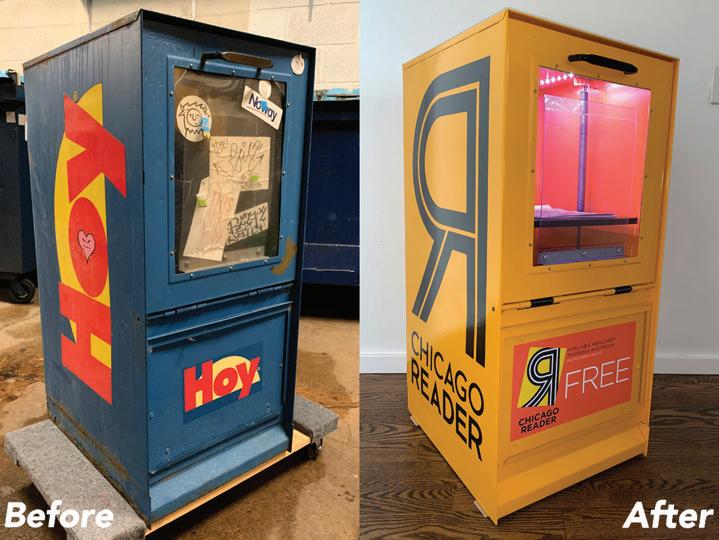
Nowell is a lifelong Chicago resident, whose educational opportunities (De La Salle Institute in Bronzeville, Loyola University in Rogers Park, and now DePaul University in Lincoln Park) and natural curiosities have allowed him to get to know all corners of the city. In particular, he grew up exploring the ever-changing industrial landscapes on the north side (with factories like Finkl Steel and Morton Salt), fed his burgeoning interests in urban photography and graffiti, especially local staples like the el and newspaper boxes.
Nowell has been an avid consumer of local news since childhood, when he devoured the Chicago Sun-Times comics section in the mornings before school; he still gets that paper delivered, along with the weekend Tribune, and seeks out print copies of South Side Weekly and the Reader whenever possible. For the nostalgia of it, he far prefers interacting with tangible print newspapers rather than digital media. That appreciation for the nostalgic certainly transfers into his work at Windy City Racks.
“Newspaper boxes fit a narrative similar to, say, telephone booths in the early-2000s—once-ubiquitous parts of the urban setting are now rapidly, and quietly, disappearing overnight. Restoring these newspaper racks is a way of preserving a piece of history for others to enjoy.”
It’s true—one project turned into a hobby, which only continues to grow. Nowell challenged himself with a complicated RedEye total refurbishment, and he’s gearing up to fix a 1980s Sun-Times box in 2022. Windy City Racks was even involved with the Reader’s recent 50th anniversary celebration, restoring one of the iconic yellow vintage Reader boxes.

“I recall many of the newspaper boxes having bright and vivid colors depending on the publication, and it added a splash of color to what could otherwise be a mundane sidewalk,” Nowell notes. “I really appreciate how much of an integral part they contributed to the urban land-
scape for many decades, and upcycling newspaper boxes in this manner pays homage to the importance of local journalism, print media, and urban city life overall. It’s great to give these pieces of history a ‘new lease on life’ through this form of adaptive reuse—instead of ending up in a scrap yard, they’re now in people’s homes as unique pieces of art: becoming record player stands, bar carts, plant stands, display shelves, and more.” Instagram:
22 CHICAGO READER - DECEMBER 23, 2021 ll
@Windy_City_Racks Facebook: @Windycityracks E-mail: windycityracks@gmail.com SHIRIN DALY
HORACE NOWELL
HORACE NOWELL


DECEMBER 23, 2021 - CHICAGO READER 23
ARTS & CULTURE
BOOK REVIEW
Hidden no more
Michael J. O’Loughlin’s new book reveals compassion and activism by some in
the Catholic Church during the height of the American HIV/AIDS epidemic.
BY ADAM M. RHODES
One of my favorite passages in Chicago journalist Michael J. O’Loughlin’s new book, Hidden Mercy: AIDS, Catholics, and the Untold Stories of Compassion in the Face of Fear, opens like an old-school joke. A nun named Sister Carol Baltosiewich is sitting in a New York City gay bar and eyeing the men around her, when she learns some are gallivanting o to a bathhouse.
It’s a humorous paradox that O’Loughlin himself acknowledges with a laugh, but is just one of the fascinating stories he publishes in Hidden Mercy, his first book. The story of the very real Sister Carol’s visit to that gay bar doesn’t end in a punch line—it sets the tone for more stories from her and others of alltoo-rare compassion, particularly in the face of great personal risk.
Amid a backdrop of the Catholic Church’s crackdown on LGBTQ+ issues—from opposing civil rights bills, filing suits to overturn unemployment protections, and exiling LGBTQ+ priests and parishioners—the people at the heart of O’Loughlin’s book challenged one of the world’s most influential institutions to help people dying of AIDS. At the same time, they challenged engrained ideas about who is welcome in the Catholic Church, and what it means to minister to those in need.
HIDDEN MERCY: AIDS, CATHOLICS, AND THE UNTOLD STORIES OF COMPASSION IN THE FACE OF FEAR

By Michael J. O’Loughlin; hardcover edition $28.99 from Broadleaf Books.
“I came across a number of individuals who approached it in di erent ways,” O’Loughlin tells the Reader . “Some people completely left because they thought it was not a healthy space for them. Others sort of stepped in and out of the religious space over the course of their lives. And some people said, “No, we’re gonna stay and fight when we need to, and ignore all the crap when we don’t feel like listening to it.’”
Professionally, O’Loughlin has made a career out of chronicling the tensions between
the Catholic Church and the LGBTQ+ community. He is currently a national correspondent for America Media, and previously covered U.S. Catholicism for the Boston Globe. He also hosts the podcast, Plague: Untold Stories of AIDS and the Catholic Church. His book builds o that body of work, and the extraordinary amount of research is evident. Along with extensive archives O’Loughlin pored over for this book, he says he also had to contend with the challenges of finding people from the 1980s still living with the virus, but soon tapped into an unknown network of sources.
“A lot of the people I interviewed said they hadn’t talked about these stories in decades, that people seem to have moved on from the AIDS crisis as it became sort of a condition you can live with,” he says.
Locally, O’Loughlin writes about Father Jim Noone, a Catholic priest who worked with children at the now mostly demolished Cabrini-Green housing project in Chicago—named in part after Mother Frances Cabrini, the first U.S citizen to be canonized by the Catholic Church. He led a small congregation, focused much of his ministry on those living with HIV, and was at one time the leader of the Association of Chicago Priests.
Father Jim, as he’s called in the book, was just one of a number of priests that died of complications related to AIDS. O’Loughlin writes that Father Jim passed away in January 1991, years into an open crisis among priests dying of the virus.
Another priest that O’Loughlin writes about, Father Michael Peterson, shared his own secret fight with the disease in a letter to every bishop in the country. Father Mike’s 1987 funeral illustrated the church’s often conflicting public and private stances on how to interact with people living with HIV.
Punctuating the stories of tragic losses and the church’s private hand-wringing over public pressure and a silent HIV epidemic of its own are people like Sister Carol and Sister Mary Ellen, Father William Hart McNichols, and Michael Harank: people called to minister
24 CHICAGO READER - DECEMBER 23, 2021 ll
BROADLEAF BOOKS
COURTESY
ARTS & CULTURE

























and help care for those rejected by families, neighbors, and the government. They opened homes to care for AIDS patients, cradled men as they wept over their lovers, and tried to find meaning behind protests that other church leaders condemned. In their own ways, they helped.
But O’Loughlin himself is a character in his book as well, and he weaves the histories alongside his own story of reconciling his Catholic faith and sexuality. He writes personally about the cognitive dissonance his sometimes dueling identities cause, and even his own considerations of leaving the faith. But like many of the figures central to his writing, he stays and pushes for a more inclusive Catholic Church.




In Hidden Mercy , O’Loughlin also adds crucial context to stories already in the queer canon that fills in part of our history, and o ers more complete versions of some of our greatest moments.





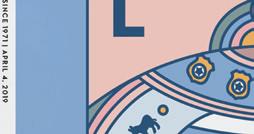
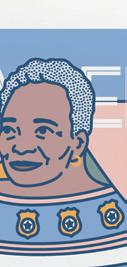












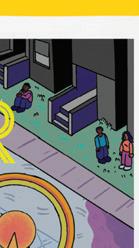













Of the infamous December 1989 ACT UP protest at St. Patrick’s Cathedral in New York, Sean Strub acts as a central subject, illustrating the very personal anger that burned inside many of the activists. Strub, a long-term survivor of HIV himself, now leads The Sero Project, an organization that aims to overturn laws that criminalize the exposure of HIV across the country.
But during the infamous St. Patrick’s protest, Strub was a member of ACT UP who was just one of a number of the activist group’s membership who were either raised or practicing Catholics. ACT UP’s anger toward the Catholic Church in particular has long been seen as an external force, but O’Loughlin’s writing shows that for some, a personal love for the church was indeed mixed with that righteous anger.
The book also brings to the fore a man now known to many as a leader in the fight against COVID-19, but one who cut his teeth fighting HIV/AIDS: Dr. Anthony Fauci.













O’Loughlin again broadens the mythos around Fauci to touch on how his devout Catholic upbringing brought him to the position as the head of the National Institute of Allergy and Infectious Diseases in 1984 and one of the foremost medical professionals fighting against a disease that the leaders in his faith would happily see eradicate the gay men it largely a icted.
“When you’re dealing with a disease, the people who are su ering most from the community, you’ve got to listen to what it is that


















they have to say about their experiences,” Fauci told O’Loughlin for the book. In the book, Fauci speaks plainly about his shock and anger at the church’s actions during the crisis.

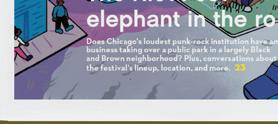


Stories of the AIDS crisis are almost exclusively of the tragic sort, and for obvious reasons. As O’Loughlin writes, over a 15-year period, a number greater than the population of Pittsburgh had died of the virus. People dying of the virus were left to die by friends, separated from lovers by hospital red tape, and ignored for years by a government that saw no issue in their extermination.
But alongside these stories, O’Loughlin manages to provide some semblance of hope that the past was not as dark as we may have thought. He tells the Reader that the book isn’t an e ort to revise the history of the church, but to paint a picture of its individual membership that is more complete.
“I hope I was able to set context that a lot of church leaders were contributing to the overall societal stigma against both people with HIV and the LGBT community in the 1980s,” O’Loughlin says. “But these people I find compelling, and it’s because they were willing to do good work, in spite of that, knowing that it would put them and their vocations at risk.”

To bring his subject into the modern era, O’Loughlin notes progressive comments by Pope Francis to illustrate progress and a continued tension in the church. In a recent New York Times op-ed, O’Loughlin writes about a letter he sent to Pope Francis about the book, and the reply blessing his subjects’ work that he never expected to receive.
“I’m not under any illusions that a letter, even one signed by the pope, will heal the wounds some Catholics imparted decades ago. Or that this might finally be the moment when Francis changes church teaching on homosexuality,” O’Loughlin writes, adding later that “Christians are called to have hope, and so for now, I still do.”
As O’Loughlin writes in the early pages of the book, queer history isn’t passed on in traditional ways. We learn about our history not around the dinner table, but from our surviving elders, from lovers, friends, activists, and people on the front lines of our liberation. Each new story helps complete us, adding to our collective memory and healing us from so many e orts to erase us. So what a true gift it is to have received this compassionate history from O’Loughlin. v
DECEMBER 23, 2021 - CHICAGO READER 25
@byadamrhodes Providing arts coverage in Chicago since 1971. www.chicagoreader.com
THE YEAR IN CULTURE
‘We would like to help’
2021 was a mixed bag for culture makers.
By SALEM COLLO-JULIN
We started with a bang. In January, a mob of supporters of the last presidential administration attacked the United States Capitol building in D.C., grabbing lecterns, posting selfies, and leaving a trail of confusion and “released on own recognizance” privilege in their wake. And it’s possible 2021 will end with a whimper. The new Omicron variant is quickly taking over (as of this writing it’s been found in more than half of new COVID-19 cases nationwide) and as the numbers rise, the steady reopening of cultural spaces in Chicago that we witnessed this year is clunking down to an unplanned stop.
Chicago-based cultural theorist and professor Lauren Berlant, who passed away at the end of June after a long battle with cancer, wrote in their acclaimed 2011 book Cruel Optimism about the potential of our collective imagination working in response to capitalism in troubled times like these. Berlant posited that we express our fantasies of resistance “in regimes of exhausted practical sovereignty,
lateral agency, and sometimes, counterabsorption in episodic refreshment, for example in sex, or spacing out, or food that is not for thought.”
We saw many arts organizations band together in 2020 to respond to institutional racism in a way that we haven’t in recent memory, but did it work? And with a more localized perspective: in Chicago, what exactly is the work that our cultural scenes have to continuously be engaged in to reset the wrong?
Everyone who decided to engage in art in 2021 didn’t automatically charge themselves with completing these arduous tasks, although to our collective credit, Chicago art communities really did band together to work on mutual aid support for marginalized neighborhoods over the last year.
One example was the near-weekly supply drives that Humboldt Park’s Read/Write Library engaged in; their north-side resident-heavy audience was called upon to help provide money, water bottles, and snacks to be redistributed at places like Hyde Park’s Brave Space Alliance, and Read/Write Library’s pa-
trons packed the space with donations.
The library itself is facing a tough haul over the next few weeks as its landlord has decided to raise the rent, and soon the ten-year-old organization will find itself trying to build community with a new set of neighbors.
Public Media Institute, the nonprofit entity that hosts art and other cultural programming largely at Bridgeport’s Co-Prosperity Sphere, was also no stranger to the roller-coaster rides that were the regimes of exhausted practical sovereignty in Chicago art this year.


I spoke with PMI’s managing director Nick Wylie about some of the challenges the organization dealt with in 2021.
Salem Collo-Julin: Can you give me a sense of how the audiences were for your programming this year? Did people show up?
Nick Wylie: We started the year with appointment-only viewings at Co-Prosperity, and are ending it by shutting down a gift-filled art shop (Buddy at Chicago Cultural Center) during the week of Christmas . . . we’ve tried
everything in between.
Two weekends ago, we hosted sold-out performances at Co-Prosperity three nights in a row. We hadn’t been allowed the space to be that packed in two years. Everyone was required to show proof of vaccination. It was before Omicron hit Chicago.
Some people came back for all three nights. I forgot what shows like that felt like.
Then, that Sunday, a sta member was exposed to COVID-19 at an o -site gathering and tested positive. Less than two weeks later we feel like we are in a totally di erent place. (Our sta member is doing OK and was vaxxed as well as got their booster).
What are the biggest challenges that the venue faced this year?
The biggest challenge this year were performers, organizers, and a single sta member who did not take vaccination seriously. Not getting vaccinated and making excuses for anti-vax folks who they wanted us to work with made for di cult friction.
26 CHICAGO READER - DECEMBER 23, 2021 ll
We ended up giving up a city grant of over $20,000 because the organizers didn’t want to go forward without unvaccinated musicians included, playing horns into crowds. We tried listening to their arguments, but after having had so many friends and community members get sick, seeing so many deaths, no argument for working with the unvaccinated made sense.
Some of these relationships have not yet recovered from these . . . disagreements. Hopefully we’ll heal.





PMI seems to have done pretty well funding-wise this year, but were there any financial streams that dried up or disappeared?













The Shuttered Venues Operator Grant and other federal funds have been giant nightmares, and we are still on the hook to pay some of them back.




Media funding is on a big downward trend for us, with the exception of the McCormick Foundation’s generous project funding, which might unfortunately end next year, it seems. We need to figure out what to do to keep [Lumpen Radio] healthy and active, in the absence of these streams. Especially of concern is the fate of the multilingual radio program Communities Amplified without this support.
There are bright points, though. The Reva and David Logan Foundation helped us distribute so much PPE, so many diapers, sanitary products, and other necessities, via our Community Kitchen project at the peak of the pandemic, and they have now assessed our current situation, dependence on foundations, and have challenged us to raise $50,000 from individual donors; if we do, they’ll match it. We don’t have any big rich check writers in our community, so we are inching toward this one small donation at a time.
In general there is a new generation of funders who really get to know an organization’s needs and the sector’s needs and are able to suggest and collaborate on significant funding.













Among those that I think are doing heroic

work, with amazing new(ish) grant o cers or programs, include the Joyce, Logan, Walder, and Builders foundations. City and federal grants have been less nimble, and could obviously be better sta ed to deal with the need.
The city has o ered us free space for Buddy and our current exhibition “Successful Failures,” but to be honest those have both been money-losing projects, as cool as they are. We just need to find a way to keep it sustainable.

What do you think 2022 is going to bring for both art and Chicago?

The standard answer is “hybrid programming”—stuff that’s both livestreamed and live. This is a cool dream but I think only the most-resourced projects will be able to do that well. We’re all going to have to have sta check patrons for vaccine cards, so there will have to be sta ng at doors and front desks, even at free shows.
We may not keep bars open, so that income goes away, and ticket sales will stay way down, so even breaking even (let alone hiring a bunch of tech sta to record and broadcast) sounds like a big lift for artist-run projects like ours.
But we are working to continue to learn from other folks who have been managing. Recently, in collaboration with the Experimental Sound Studio in a project funded by Arts Work Fund, we wrapped an interview series with artists in conversation with engineers who did interesting livestream projects over the past two years. Those should drop in January on Lumpen TV (viewable via Twitch) and ESS’s website, and they’ll be followed by a digital and physical publication containing guides, tips, and reflections from livestreamers.
We’ll also see more radio on TV, we hope. The Yollocalli youth just did some rad anti-capitalist Christmas programming on Lumpen Radio and Lumpen TV last Saturday, and it was amazing.





More people getting the means of livestreaming and jumping on various platforms is inevitable, COVID-19 or no, but I think another scary summer will get more converts to finally join the world of the stream.









Also I think we can probably expect climate change.
That is a joke because I don’t want to cry anymore. But yes, speaking of funders, I think they may start to look at whether saving the earth seems like something they’d like to enlist culture’s help in. We would like to help. v












































































DECEMBER 23, 2021 - CHICAGO READER 27
@hollo
“One of the top 10 picks for the holiday season.”--Chicago Tribune November 26th - January 2nd 8 p.m. Fridays, 8 p.m. Saturdays, 2 p.m. Sundays Greenhouse Theater Center 2257 N. Lincoln Ave., Chicago Box Office: 773-404-7336 CELEBRATE2022WITHSINGING, DANCINGANDFULLORCHESTRA A DancersfromFirstStateBalletTheatre StraussSymphonyofAmerica featuringtheChicagoPhilharmonic AlastairWillis, conductor(London) MicaëlaOeste, soprano(Berlin) NormanReinhardt, tenor(Vienna) ORCHESTRAHALLSYMPHONYCENTER salutetovienna.com/chicago SUNDAY,DEC26•2:30PM
Work on display at “Successful Failures,” on view at the Chicago Cultural Center through February. COURTESY PUBLIC MEDIA INSTITUTE
Discover the magic of







SPAIN AT CHRISTMAS




For the second year in a row, people across the world are celebrating the holiday season in the throes of a global pandemic. Unlike last time, though, vaccinations offer hope to many seeking a sense of adventure and a break from the mundane. Whether you’re daydreaming about next year’s destination holiday, looking to drop everything and take a vacation, or just hoping to bring a bit of culture to your at-home festivities: Consider Spain.

With incredible cultures, must-see architecture, and exceptional food, a trip to Spain should be on everyone’s bucket list. Spain has nature, history, shopping — truly something for people of all ages and interests.
With COVID restrictions, it’s a bit more difficult than it would otherwise be to book a last-minute trip, but in most cases it’s not impossible. It takes a bit of research, depending on whether you’re traveling from outside the EU or inside the EU, and if you’re coming via land or sea. With the situation changing every day, stay updated before, during, and a er your trip by visiting travelsafe.spain.info/en/. But if you’re able to, lean into your impulsive side and ring in 2022 in Spain.
ere are town and city squares across the country where people go to count down and celebrate together, the most famous of which is Puerta del Sol in the capital city of Madrid. You’ll find confetti, music, costumes, and thousands of excited people toasting in the New Year. e parties extend for hours into the morning, in the streets, at bars and clubs, and at special events for locals and tourists alike. To cap off what will surely be one of the most memorable New Year’s celebrations of your life, end the night— that is, the wee hours of the morning—by stopping at a 24/7 chocolatería for churros and hot chocolate.
Christmas season in Spain culminates on January 6, e Epiphany ( ree Kings Day), when gi s are exchanged. On the evening of January 5, ree Kings parades take place throughout the mainland and the islands of Spain, in cities large and small, with processions ranging from simple to elaborate, in which the Kings may arrive dramatically by sea, by horseback, by helicopter, or on a float. In the middle of the night, the ree Kings deliver gi s to homes, where turrón, polvorones, and glasses of cava are o en le out for them. e oldest parade, established in 1885, occurs in Alcoy, near the eastern coast of Spain.
28 CHICAGO READER - DECEMBER 23, 2021 ll
PAID SPONSORED CONTENT
Festivals, food, and lights all aglow
“Spain is so full of joy and life around the holidays, but of course the beautiful country has much to offer all year round.”
All images courtesy of Turespaña
It starts with a children’s parade called Les Pastoretes (“the little shepherds”), where kids dressed as shepherds parade with their flocks on the Sunday prior to January 6. On January 4, the Royal Envoy announces the arrival of Melchior, Caspar, and Balthazar, reading a proclamation throughout town. He is accompanied by les burretes, small donkeys that carry letterboxes in which children place letters to the ree Kings.
If leaving in time for the new year doesn’t seem feasible, start planning your trip for next Christmas. e build-up to the holidays is one of the best parts in Spain—cities across the country have incomparable displays of holiday lights and a wealth of activities to partake in.

Visit Plaza Mayor in Madrid, and see thousands of lights created by artists and designers. Walk around the Plaza de España and see glowing trees and nativity scenes, and don’t forget to stop at the Metropolis Building to see the Giant Christmas Ball. Like Madrid, Barcelona is transformed during the holidays, with lights and Christmas markets—like the one at Santa Llúcia, a tradition since 1786—across the city. Málaga, Spain, is also becoming an iconic location to celebrate the holiday. See the lights at Calle Larios or hit the theater for a flamenco or classical music show. From Vigo to Valencia to Zaragoza, the list goes on and on. You’ll find no shortage of places to shop for gi s and souvenirs, ice skate, take photos, and feel truly immersed in the holiday season.
Looking to bring a bit of Spain into your home for the holidays, rather than traveling? Teach the little ones in your life about the ree Wise Men, and play Spanish music throughout the season. Try your hand at some Spanish cooking, and make foods commonly found on the holiday table in Spain: Ibérico ham, seafood, stuffed turkey, turrón, marzipan, Epiphany cake, and more.
Spain is so full of joy and life around the holidays, but of course the beautiful country has much to offer all year round. Escape the cold weather of January with a trip to the Canary Islands; check out Carnival or the fiesta of the Wedding of Isabel de Segura in February; March brings cherry blossoms and the fiesta of Las Fallas, with enormous papier-mâché monuments called ninots; don’t miss the flamenco and festivities in April at the Feria de Abril in Seville; visit in May, also called the month of flowers; in June, celebrate midsummer and music festivals; the world-famous fiesta of San Fermín takes place in July; the warm weather of August is perfect for sunbathing and scuba diving; September has the San Sebastian International Film Festival; the vineyards and wineries are can’t miss in October; November brings leafy forests and cozy autumn foods; and then you’re back to December, where the Christmas atmosphere is truly like no other.
FIVE MOST POPULAR CHRISTMAS TRADITIONS IN SPAIN


Christmas is perhaps the most traditional, familyoriented celebration in the whole world, and in Spain it lasts until January 6. Visiting the country between the middle of December and the start of the new year is a time that’s always full of lovely moments for sharing.
1.“El Gordo” Christmas lottery e Christmas time festivities kick-start in Spain on December 22 with the National Christmas Lottery. e first prize is popularly known as “El Gordo.” Participation is massive and the draw is closely followed throughout the morning. e prize money is very well spread out and the winners usually celebrate their glory in the street.
2. Meals bursting with Christmas flavors and lots of sweet treats

Christmas is a time for lavish meals with family and friends. On Christmas Eve, restaurants and hotels offer extraordinary menus. e meals normally include several starters, for example, Ibérico ham, seafood and delicious cheeses, followed by dishes such as soups, roast meat, fish or stuffed turkey. And to finish, sweet treats and desserts: turrón, marzipan, Spanish sweets, shortbread, and naturally, Epiphany cake are all delicacies not to be missed. You can learn more about Christmas food in Spain in this article.
3. Colorful Christmas lights e festive lights in Spain are a delight for children and adults alike. Cities like Madrid, Barcelona, Malaga, and Vigo have perhaps been the most eye-catching in recent years, but from the end of November, it is usual for all towns and cities to light up their streets with colors and Christmas motifs.
4. e 12 most festive grapes
of the
year is tradition promises luck and an original way to see in the New Year. It consists of eating 12 grapes as the clock strikes midnight on New Year’s Eve. e idea is to eat one grape for each clock chime at midnight. You can follow the chimes of the famous Puerta del Sol clock in Madrid on television, live at the Puerta del Sol, or in the iconic landmark where this tradition is celebrated in your destination.

5. A magical night full of excitement
On the night of January 5th, going into the 6th the ree Wise Men arrive from the east and bring presents to all the children. It is traditional for every child to write a letter to the wise men, telling them how they have behaved all year and requesting gi s. Special mailboxes are placed in shopping centers and leisure spaces for posting these letters and the “royal pages” make frequent appearances to collect them. On the a ernoon of January 5, the wise men (Melchior, Caspar, and Balthazar) arrive in all the cities in processions and parades through the streets. A er an early night (and waiting excitedly for the morning to arrive), children finally get to open their presents.
DECEMBER 23, 2021 - CHICAGO READER 29
Go to spain.info to learn more or plan your trip. #ChristmasInSpain
¡Feliz Navidad!
PAID SPONSORED CONTENT
Paid for by Tourist Office of Spain in Chicago
THE YEAR IN IMPROV AND SKETCH

Brush fire
The sketch and improv world remains chaotic, but there’s promising growth.
By WANJIKU KAIRU
What hit harder, the racism or the pandemic?
When the world shut down, theater performances came to a halt. No one was laughing about anything. Improvisers couldn’t perform, and theaters across the city lost big money. Alongside COVID-19, the improv community had a great awakening regarding mistreatment of BIPOC talent. Major theaters retroactively diversified leadership roles, but these actions make me wonder whether they are doing so because they aren’t racist, or because they don’t want to be seen as racist. Who’s to say?
Reopening and closing amid the pandemic Live comedy in Chicago is synonymous with the Second City. Off the Sedgwick Brown Line stop in Old Town, Second City went through big changes in 2020 when performers demanded the theater correct its racial disparities. In response, the theater quickly and consecutively placed two African Americans into the executive producer role. The Second City has continued e orts to hire BIPOC sta , performers, and leadership. Despite this, now that they’re back for live performances, the theater’s marketing is steered toward one type of audience member. Ticket prices can reach $80 a seat, a steep price to pay to watch a few jokers crack wise. Clearly the bottom line is the dollar sign, and white
a uent audience members are preferred.
On the south side in Hyde Park, the Revival has been known for promoting BIPOC talent. While they are still operating at a steady pace, the mission at Revival to cultivate diverse talent has also remained consistent. In regard to talent and audience diversity, Revival owner John Stoops says, “Racial matters have prompted our community to consider who attends and teaches the classes, performs and directs the shows, and sta s the theaters. It’s long overdue. There has always been chatter around the issue, but it has only been chatter. Now, there’s real consideration to make this art form one that engages all Chicagoans who care to engage with it. I can only speak on behalf of a south-side theater that charges $10-$15 for shows and has prioritized diversity from the beginning. We are fi nancially and geographically accessible to people.”
Located off the Belmont Red Line stop in one of Chicago’s largest LGBTQ+ communities, the Annoyance Theatre also works to promote comedy education accessibility. Executive producer Jennifer Estlin states, “We’re making more opportunities for people who may be challenged fi nancially. Because of the pandemic and trying to keep theater alive, I had to get politically involved.”
Estlin is on the board of Chicago Independent Venue League (CIVL), and an active
member of National Independent Venue Association (NIVA). Estlin continues, “NIVA and CIVL have been pivotal in saving Chicago’s nightlife, with venues on the verge of extinction. CIVL is also a crucial voice as an advocate for indie venues, compared to big-name producers that aren’t invested in keeping our venues alive.”
Across from the most luxurious Whole Foods in the city rests the remains of iO theater, plagued for years with claims of ignoring racist and sexist conditions (classic double whammy). Longtime owner of iO, Charna Halpern, closed the doors in 2020 before the significant institutional changes demanded by BIPOC performers were made, noting that the closing was the result of the theater struggling to pay property taxes amid the pandemic. (I guess that’s karma.) Anyway, this summer two real estate executives with no experience as comedy producers purchased iO and were rumored to be reaching out to old sta to rehire them. What a vicious cycle.
Just outside of the city, Laugh Out Loud theater in Schaumburg works diligently to hold their community together virtually. Owner Lillie Frances says, “We’re very resilient. We held the LOL cast and crew together by doing giveaways. There were people who were out of work and we gave out $100 in free groceries. Then other people who worked with LOL contacted asking to donate $100. They gave away things people needed and it was amazing to feel we’re going to be OK.”
Some theaters were not able to escape the e ects of COVID. ComedySportz, also located o the Belmont Red Line stop, became a nomadic group in winter of 2021, continuing to focus on digital content. They now perform at the Den Theater on Milwaukee Avenue in Wicker Park. Less fortunate theaters like the Playground were forced to close, and have not been able to make a return.
What’s improv without improvisers?
In the height of the pandemic, improvisers who had spent years making a name for themselves made a swift exodus out of the city. Those who stayed continued to hone their craft through more creative ways. Keeping active in the community, improviser Kayla Pulley adapted to Zoomprov when virtual became the new live stage.
Pulley recalls, “Zoomprov stressed me out. It was hard if you didn’t have the right setup. It’s an amazing thing that does exist but it was a beast I couldn’t handle. It’s tough because you don’t hear people laughing. At fi rst, I couldn’t do Zoomprov. Maybe the trauma made it hard. In the live stand-up world I feel like a target, because I usually am. Comedians who are underprepared have used me as a Black prop. In Zoom stand-up I felt safe, because that discrimination wasn’t happening to me.”
Another talented performer with a focus on musical improv, Mo Phillips-Spotts faced similar challenges pre-pandemic.
“I went to a musical theater audition and walking in I was the only Black person,” recalls Phillips-Spotts. “I felt unwanted, like I shouldn’t be there. It wasn’t a good feeling, and didn’t set me up for success. You need diverse voices to have a good show. The fun of the world is meeting diverse people, and seeing how they interact. We’re learning about each other all the time and we just need it. You don’t want to be the only one in the room. Unless you’re the plant in Little Shop of Horrors.”
Phillips-Spotts adds, “I bloomed doing Zoomprov because it was so freeing. I was making choices that I thought the scene needed. Since reopening, I was able to transfer that over into live performance. Before, I was very conscious of audience reactions. I caught myself thinking, ‘Is this funny?’ The best shows were when I didn’t ask those questions.”
The pandemic changed the way improvisers interacted with their audience and gave Pulley and Phillips-Spotts virtual stages to have conversations with their audience. Mick Napier, founder and artistic director of the Annoyance and a longtime improv director and teacher around town, notes concerns regarding the barriers created while teaching virtual classes.
“If you’re not in the same room with the other performer it’s more di cult to form a relationship,” says Napier. “Object and environment work go out the window. It’s a more presentational medium, with a lot of talking heads. The sketch and improv scene is going to change. We’re going to attempt to evolve more.”
While virtual shows were a real struggle, ultimately the pandemic shifted what performers are required to do. On the technological end, freelance producer Emily Weinstein reflects on transitioning to virtual
30 CHICAGO READER - DECEMBER 23, 2021 ll
The cast of Second City’s Together at Last is diverse, but ticket prices are steep. TIMOTHY M. SCHMIDT
productions.










“Everything felt more DIY. Virtual shows took a lot of preparation. Comedic timing is so important, but between learning the tech, testing bandwidth, and getting updates, it could be frustrating. It was a good alternative given what everyone had to work with. We would send performers kits with iPhones, they were recording full-on videos. Performers did their own audio levels, lighting, hair and makeup, wardrobe, and media management.”
Director Emily Barber makes it clear that the most important part of performances are the performers. “In the past, sketch comedy had taken on a unified voice. YouTube was the pre-TikTok where you have an unbiased audience judging material for the characters and people created. Sketch comedy has evolved into something much richer because you’re starting to see different perspectives. The people who are being brave are creating the conversation and audiences are flocking to it. People are afraid to be brave because they are trying to relearn what their bravery was for.”
“We’re living in a TikTok world, social media impacts the way sketch writing is occurring,” says teacher and director Jonald Reyes. “We have these timed videos at one minute, and a lot of the younger improvisers are trying to get laughs in a short time frame while making references to TikTok. If you’re not on top of your TikTok and someone is pitching a scene that has a meme reference or video ‘everyone should know,’ the jokes go over your head. Now we have to do more research to fi gure out where the joke is coming from. That makes it more difficult for audiences to catch up on.”
Barber says, “There is a renaissance of laughing to keep from crying. As fun as improv and sketch are, the more real you are, the more surprising it can be. One of the greatest challenges is people are afraid to be funny. It’s a combination of our previous political climate, the civil rights movements that have happened, and a lot of self-reflection that is going on with people.”
It’s clear that talent should be cared for. As Barber puts it, “Performers are the ones getting butts in seats.” You can’t have butts in seats without butts on stage, and some theaters in the improv community are proving more dedicated to harboring culturally diverse students, performers, and audience members.






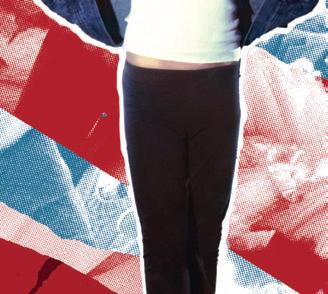


At the Revival, Stoops has found success pairing teachers throughout the country

with classes tailored to their specific focus. Students all over the world are able to take classes like hip-hop improv, slam poetry, and spoken word. They even offered late-night comedy show writing classes with a current late-night writer who knows the intricacies of that space.
Estlin and Napier at the Annoyance are preparing to launch a comprehensive conservatory program to uplift performers. The 24-week program will not only be aimed at training performers in acting, writing, and improv, but also website and portfolio development, making contacts with agents, and resume training. Estlin’s goal is to meet students where they are, while connecting them to their ultimate vision of personal success. In addition to this, the Annoyance will begin presenting shows by seasoned performers. Going back to the way the theater began, they plan to have shows generated by a core group of head writers, or an ensemble.



Future of improv










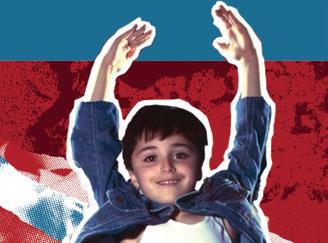

Between COVID and institutional racism, the future of big-city improv stands at a crossroads. Improvisers want to perform in safe spaces. Audiences all over the world are thirsty to see the diversity of the world represented. I believe the future of improv rests within the walls of proactive theaters who focus on their talent fi rst. Envisioning the future of improv, Pulley says, “We are all fools who like to play games. That’s what improv is. It needs to go back to that. To improvisers— try to make yourself money. You don’t need to go to these late-night shows getting paid in PBRs. I see improv going towards POC voices that weren’t as present before.”
As LOL owner Frances puts it, “What happened in the community was almost like a brush fi re. It clears the way for other vegetation to grow. I think we’re going to see in three years’ time a lot of new improv theaters springing up, smaller improv theaters to replace the ones that have closed. That’s ultimately a good thing.”
Laugh Out Loud, the Revival, and the Annoyance continue e orts to bring improv to communities overlooked by major theaters. This pressure could produce a few diamonds. As long as performers continue to challenge the boundaries of improv, and theater heads make the e ort to incorporate diverse audiences and casts, Chicago will continue to be the comedy mecca of the world. v
DECEMBER 23, 2021 - CHICAGO READER 31
WE ARE BACK! LIVE AND IN-PERSON! MASKS AND PROOF OF VACCINATION REQUIRED. Featuring Unforgettable Music By Sir Elton John! DECEMBER 23, 2021JANUARY 2, 2022 Tickets are 1/2 off for ages 25 and under! 9501 Skokie Blvd, Skokie, IL 60077 www.musictheaterworks.com or (847)673-6300 Tickets are 1/2 off for ages 25 and under!
by Kristie Kahns. 2021–22 SEASON SPONSORS TOO HOT TO HANDEL: THE JAZZ-GOSPEL MESSIAH SPONSORS Dave Samber and Darrell Windle Presenting Sponsors JLC Colmar Foundation Performance Sponsor O cial Hotel Partner The Florian Fund Dance Sponsor Magazine Sponsor THE JAZZ-GOSPEL MESSIAH TOO HOt TOHANDEL January 16 3PM January 15 7:30PM AuditoriumTheatre.org 312.341.2300 50 E Ida B Wells Dr | Chicago, IL GIVE THE GIFT OF INSPIRATION THIS HOLIDAY SEASON! Original concept by Marin Alsop. Arranged by Bob Christianson and Gary Anderson.
@HolyBarbie
Photo
THEATER






















REVIEW























































































































































































Five jokes, two hours






The Play That Goes Wrong falls apart at Broadway Playhouse.







 By IRENE HSIAO
By IRENE HSIAO

For as long as memory serves, the section of 90/94 that passes through downtown Chicago has been under construction without apparent purpose or end. That same incessant will to tear up the very ground upon which we travel from here to there governs The Play That Goes Wrong, written by Henry Lewis, Jonathan Sayer, and Henry Shield and directed by Matt DiCarlo, which begins with a dumb show of stage crew ga -taping pieces of the scenery that won’t stay put and finishes with the destruction and disintegration of the entire set (designed by Nigel Hook). If the purpose of playing is indeed to hold as t’were the mirror up to nature, this bodes badly for commuters.
The premise of the play is a device used tragically in Hamlet and comedically in A Midsummer Night’s Dream : the play within the play. Here all signs point to a humorous intention, yet the result is deeply lamentable: the Cornley University Drama Society, comprised of the worst actors to ever enroll in a fictitious institution of higher education, are presenting The Murder at Haversham Manor. In this crime melodrama, master of aforesaid manor Charles Haversham (Jonathan Harris, played by Joseph Anthony Byrd) is found dead just minutes before the party celebrating his engagement to flapper/femme fatale Florence Colleymore (Sandra Wilkinson, played by Kelly O’Sullivan). But who should wish a rich man in love dead? Could it be his younger brother Cecil (Max Bennett, played by Jarred Webb), who secretly loves Florence? Or his best friend Thomas (Robert Grove, played by Jonah D. Winston), Florence’s overprotective brother with a bad head for finances? Or did the butler Perkins (Dennis Tyde, played by Michael Kurowski) do it?
It hardly matters, as whodunit posthaste becomes less interesting than please, when will it end? There are approximately five jokes in this play, all repeated until each dead horse





has been shot, drawn, quartered, marinated in salt, and made into glue. To spare you the pain of confirmation, here they are: 1. The actors are bad but committed. There are more ways for an actor to be bad than can be enumerated in a review of this length; rest assured that all the ways are workshopped thoroughly. 2. The technician (Trevor Watson, played by Colton Adams) is sleeping in the booth—again. 3. Paint thinner is a poor substitute for sherry;
The Play That Goes Wrong
Through 1/30 : Tue and Thu-Fri 7: 30 PM, Wed 2 and 7: 30 PM, Sat 2 and 8 PM, Sun 2 and 7: 30 PM; also Mon 12/27, 7: 30 PM; Fri 12/24, 2 PM only; Wed 1/ 19, 7: 30 PM only; Sun 1/9, 1/ 16, and 1/23, 2 PM only; no shows Sat 12/25 and 1/1, Broadway Playhouse, 175 E. Chestnut, 800 -775 -2000, broadwayinchicago. com, $ 35 -$ 85


cue lots of explosive expectorations. 4. Unconscious women are hilarious, especially when they repeatedly are shown getting knocked out onstage. 4b. Women are hysterics, need to be medicated, and hate each other. 4c. An hysterical, unconscious woman in her knickers is especially funny. No comment. 5. The set is falling apart, unfortunately never at a pace that brings sweet relief from this preposterous production.
The mechanicals in Midsummer need just minutes to o er Pyramus and Thisbe for our amusement—proving four centuries ago that brevity is the soul of wit. An hour is excess; two hours an excruciation. v
























32 CHICAGO READER - DECEMBER 23, 2021 ll
The Play That Goes Wrong JEREMY DANIEL
@IreneCHsiao R READER RECOMMENDED b ALL AGES F
HEELS WEDNESDAYS @ 7PM OPENING JANUARY 5TH CHICAGOMAGICLOUNGE.COM TICKETS ON SALE NOW! IN MAGIC KAYLA DRESCHER:
THE YEAR IN THEATER
Playing in a pandemic
In 2021, Chicago theaters reopened—and several found innovative new leaders.
By KERRY REID
By the time this year ends (it is gonna end, right?), Reader critics will, by my count, have reviewed 69 live theater and dance performances. That’s far less than in most years, but a veritable cornucopia after the onstage famine that began in March 2020. But just when we think it’s safe to go back to the theater, Omicron might be pulling us out.
Last weekend, a rolling series of announcements of canceled performances hit my inbox and social media feeds as (fully vaxxed) members of the cast and crew of shows—ranging from the Jo rey’s The Nutcracker (which canceled two days of performances) to Lookingglass’s Her Honor Jane Byrne (which called o its entire last weekend)—came down with breakthrough cases of COVID-19. New York productions are getting it in the teeth even worse; the Rockettes won’t be kicking up a storm in Radio City Music Hall’s Christmas
show anymore this season, and several other Broadway shows have announced at least temporary closings due to COVID infections.
As with so many other things related to this ungodly timeline, we’ll just have to wait and see what effect this latest variant will have on the performing arts. So far, no company with plans to open in January has announced that they’re canceling or postponing shows. At the shows I’ve attended since July, house sta has been diligent about checking vax cards against IDs and enforcing the mask mandates. The League of Chicago Theatres put out unified protocols in August to help protect patrons and artists. But the rise in breakthrough cases among artists is troubling, even if the cases are mild. (You know the drill: get vaxxed/boosted, wear a mask, practice social distancing as much as possible.)
At least before the latest wave, though,
going back to theater felt good. Weird, but good; I had to relearn the art of preshow chitchat, and realized how much that’s part of the live experience. I suspect that digital content won’t be going away anytime soon; reports suggest that, while the revenues aren’t anywhere near equal to live ticket sales, the reach of digital means theaters can access audiences that normally wouldn’t be able to see their work. Several Chicago productions this past fall, like Court’s Othello, o ered a ticketed streaming option in addition to in-person seating.
So it’s hard to say what will happen in 2022, and my crystal ball is in the pawnshop. (I’m the person who thought we’d have big problems with people fighting to GET vaccines, so clearly my powers of prognostication are wanting.) But if pressed to point out developments in the past year that do seem to bode well, I’d look at the new generation and models of leadership that have emerged at theaters in the area.
True, some changes this year weren’t so smooth; artistic director Michael Halberstam left Writers Theatre in Glencoe under a cloud of persistent allegations, and Joe Keefe, executive director of Metropolis Performing Arts Centre in Arlington Heights, also resigned following public accusations of inappropriate behavior. Neither organization has named replacements as of yet.
With the announcement that Robert Falls is departing the Goodman in summer 2022, the ranks of the “old guard” artistic directors grow ever slimmer, with Barbara Gaines at Chicago Shakespeare, Charles Newell at Court, and B.J. Jones at Northlight remaining. (Northlight finally made major strides in their long-awaited plans to move back to Evanston this year.) Meantime, a wave of new leaders took over; Ken-Matt Martin at Victory Gardens, Lanise Antoine Shelley at the House, Marti Lyons at Remy Bumppo, and Ericka Ratcli at Congo Square among them.
But in addition to new blood, at least three companies this year announced shared duties in the top position.
Audrey Francis and Glenn Davis took over from Anna D. Shapiro as co-artistic directors at Steppenwolf, just in time for Steppenwolf to open its fancy new theater/education cen-

ter. Lorena Diaz and Wendy Mateo are the fi rst women to head up Teatro Vista, bringing with them not only a long resume in comedy, but also experience in digital production. (Steppenwolf’s Davis and playwright Tarell Alvin McCraney just announced their own digital production company, Chatham Grove, has inked a deal with Universal Studio Group subsidiary UCP.) Gift Theatre found a triumvirate of women (Brittany Burch, Emjoy Gavino, and Jennifer Glasse) to lead them into their next chapter, which includes the search for a new home in Je erson Park. Prop Thtr is exploring new models of development that are more artist-centered and focused on the needs of di erent communities. The list goes on. (For a look at how sketch and improv artists are adapting, see Wanjiku Kairu’s feature on page 30.)
I look at these announcements as welcome news. Pragmatically, the job of running a theater (or any other enterprise) is never down to one person’s vision, and many hands make light work, etc. But in ideological terms, I’m hoping that this focus on shared leadership represents a breaking down of hierarchy in a time when theater workers themselves are (rightly!) demanding better conditions and greater awareness of institutional racism, sexism, and classism. Actors’ Equity unveiled an “open access” policy to make it easier for actors to join the union, and IATSE (whose members include theater stage workers) showed their strength in the film industry by threatening a strike if working conditions weren’t improved.
Meantime, if you’re going to live shows, please be safe and respectful of the rules (most ushers are volunteers, and they don’t need people getting nasty with them in a pandemic). But also remember the wisdom of Lily Tomlin’s Trudy, the “bag lady” from The Search for Signs of Intelligent Life in the Universe who took her space alien friends to a show: “I forgot to tell them to watch the play; they’d been watching the audience. Yeah, to see a group of strangers sitting together in the dark, laughing and crying about the same things, just knocked ‘em out. They said, ‘Trudy, the play was soup, the audience, art.’” v
DECEMBER 23, 2021 - CHICAGO READER 33
@kerryreid
Audrey Francis and Glenn Davis took over as the new co-artistic directors for Steppenwolf. FRANK ISHMAN
THE YEAR IN DANCE
The collective quest
Performers returned onstage, and asked probing questions offstage.
By IRENE HSIAO
Two events occurred toward the close of 2020 that suggested that life and art as we knew it (for better or for worse) might have a fighting chance of existing in 2021: the election in November and the emergency use authorization of COVID-19 vaccines in December. But more briefly than the duration of most resolutions, the first glint of hope fizzled fast on January 6.
Members of the dance community convened just a day later on Zoom for “Dance in Chicago 2021: Collecting. Hibernating. Emerging.” Organized by Chicago Dancemakers Forum, Chicago Dancers United, The Dance Center of Columbia College Chicago, Harris Theater for Music and Dance, High Concept Labs, Links Hall, Museum of Contemporary Art Chicago, Pivot Arts, and See Chicago Dance, the event these institutions “peer-produced” to share resources with artists became a public discussion in which artists questioned institutions about what is being shared—and by and for whom. The conversation was tense at times and the
grievances expressed were not new. Perhaps most worth remembering is the courage to speak and the courage to listen.
Lockdown was a day and a time and a place; vaccination a perpetually shifting oasis in our ever unattainable halcyon utopia. Briefly a synonym for freedom, once a fantasy, then a reality, then reality: for many, imagined illness was worse than a disease killing family, friends, neighbors, and frontline workers (12,306 dead in Cook County, 806,335 in the country, 5,372,362 in the world at time of writing). (Why should vaccination have been different from any other solution that has ever been presented to humans for our collective benefit? And who is profiting from our collective distrust?)
While independent artists have been creating every day of this pandemic, in 2021, larger organizations followed. In late spring, Pivot Arts presented a hybrid festival, indoor and outdoor, in-person and online, with performances by Ishti Collective and Danielle Ross, one together with the audience onstage at the
Edge Theater, the other inside the lobby and on the sidewalk outside, that acknowledged an altered relationship to theatrical spaces.
In the summer, dancing returned to Chicago parks and public spaces through programs produced by DCASE and See Chicago Dance. The largest of these outdoor performances, Dance for Life, produced by Chicago Dancers United, was presented at Pritzker Pavilion in Millennium Park on a warm night in late August to an audience comprised not only of donors, but also to fellow dancers and members of the public who, for the fi rst time in 30 years, could attend for free. The atmosphere was jubilant, with friends and colleagues mingling again after long distancing, and Chicagoans gathering again to witness the art that lives in this city—a necessary reminder that, while dancers can and will and must and do show up for each other, for the city of Chicago to show up for dancers, the city must be included in the dance.
As theaters reopened for performances, Hubbard Street Dance Chicago and the
Jo rey Ballet presented their fi rst live performances in over a year in early autumn to exhilarated audiences at the Harris Theater and the Lyric Opera. Both companies observed generous intermissions—for audiences grown unaccustomed to gathering in large numbers indoors in person, a necessary reintroduction to the essence of live performance: each other.
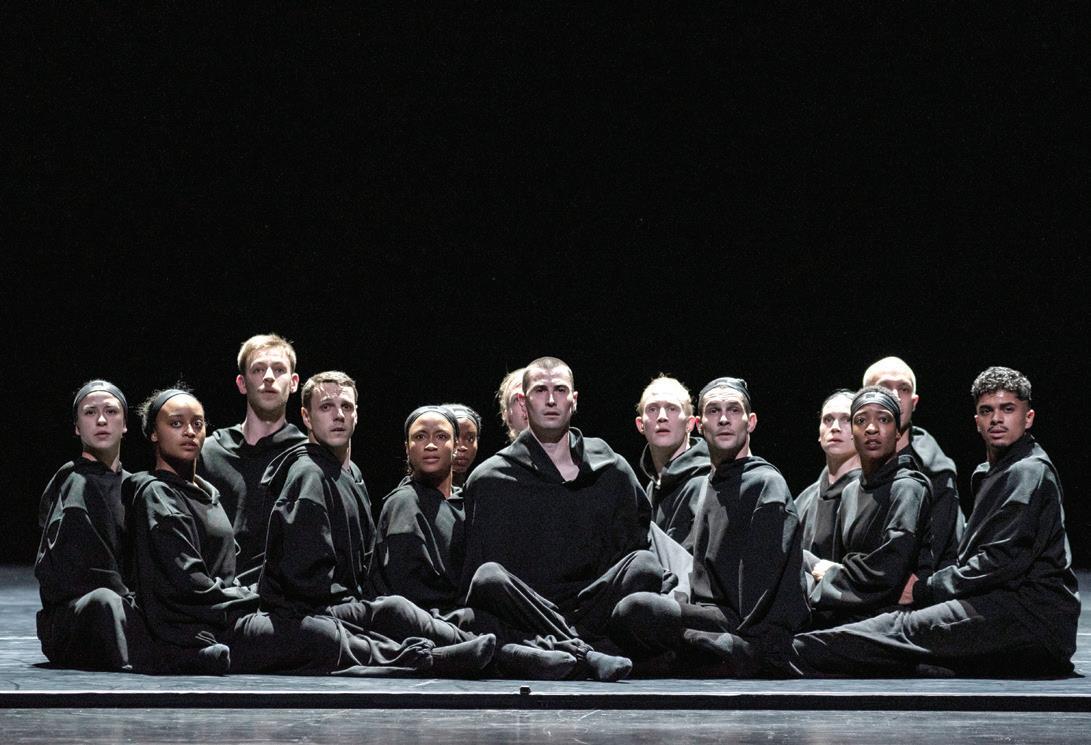
Online presentations have continued throughout, as necessary exploration and the continuity of living art to exist as we do, somewhere between the world and imagination.
We began the year with theaters dark, and they are darkening once more as cold weather and new variants combine to produce breakthrough infections and performance cancellations. At the largest scale, the Jo rey Ballet canceled three Nutcracker performances on December 17 and 18 at the Lyric Opera House, which seats 3,276. They resumed performances December 19 in masks, committed to fi nishing a run scheduled through December 26.
The fatigue of 2021 is that of the second part of trilogies—the part where we wander through a desert, meeting strangers and di culties for reasons we cannot yet comprehend. The moment lacks the novelty of fresh adventure, the urgency of fi nal battle. We are mired in the slog part of our collective quest, and we don’t get to give up now.
There’s a section in Nora Sharp’s The Real Dance: A Micro Reality TV Show (full disclosure: I appear in it) in which Jenn Freeman says, “Dance is hard . . . It’s hard right now. I’m like, I don’t even know if I like . . . dancing! . . . I’m searching for this particular feeling . . . it’s like catching the holy ghost . . . I can’t even remember when I last had that feeling. It’s been over a year.” But Freeman transmits that feeling in her dancing despite not sensing its being.
Just one question for all of us as we move into 2022: what does it mean to really be present for each other? v
34 CHICAGO READER - DECEMBER 23, 2021 ll
@IreneCHsiao
The ensemble of Aszure Barton’s BUSK , presented by Hubbard Street Dance Chicago in November MICHELLE REID
LABOR AND LOCALS
Streaming and dreaming
A narrowly averted strike in Hollywood brought attention to the punishing long hours in the film and television industry. What does it mean for the future of the growing industry in Chicago?
By JENNIFER BAMBERG
Last month, the International Alliance of Theatrical Stage Employees, or IATSE, voted to ratify a contract with the Alliance of Motion Picture and Television Producers (AMPTP), narrowly avoiding what would have been the largest private-sector strike across the U.S. since 2007. For many workers in the film and television industry here in Chicago, the monthslong contract negotiations, the uprising in 2020, and the abrupt layo s and work stoppages at the start of the pandemic o ered openings for workers to consider whether the long, grueling hours the film industry is known for are worth it, and whether or not they’re even necessary to make a good film. Ga ers, grips, camera operators, and set designers, like so many others across
the workforce in the U.S., were suddenly able to talk openly about their experiences of feeling drained, depressed, and beaten down by their working conditions—along with the possibility of changing that—for the first time.
Now that the negotiations are over with what some call only incremental changes, IATSE members in Chicago look toward growing their membership and continuing to organize for safer and fairer working conditions. The city is abuzz with plans to expand the film industry—Cinespace’s new corporate owners plan to build 15 new stages on its campus; funding and permitting in City Hall for a new film studio in South Shore continue to move forward; there is a proposal to develop studios at the old Fields warehouses in Avondale; and
the city’s Department of Cultural A airs and Special Events (DCASE) recently announced a new film and television workforce development program called “Chicago Made.” And with Netflix’s recent announcement that it will release a new movie a week throughout 2022, Chicago is wise to prepare to meet those demands.

Here’s a brief history of the last 40 years of the film industry in Chicago, reflections from IATSE organizers, and a look toward the future of work for people who are thinking of getting in on the action.
Setting the stage
“[We’re] in a time where labor is having its
moment,” says Margaret Hartmann, an electrician and dimmer board operator in Local 476. Late last summer and fall, social media accounts like @IA_Stories have served as a bullhorn to highlight dangerous and grueling working conditions IATSE members are routinely subjected to—16-hour days for months on end, “walking lunches” (aka no lunch break at all), drowsy driving accidents and deaths. And then Striketober—news coverage of the 12,000 striking John Deere and Kellogg’s workers also helped drum up publicity and support for the IA’s potential strike in Hollywood.
Even though IATSE Studio Mechanics Local 476 in Chicago negotiates their own contract separate from Hollywood’s, showbiz here still would have shut down if LA had gone on strike because art directors, editors, and camera operators are part of three separate national unions that voted on the Hollywood contract as well. No one to point the camera means no filming, and even if the producers had hired nonunion replacements, no self-respecting teamster, makeup artist, or lighting tech would have crossed the picket line. Instead of a strike, however, the Hollywood contract passed via the national union’s electoral college-style delegate system, even though it was rejected by the popular vote. “That’s the contract that sets the tone for all of the smaller ones. It a ects us so much and we have no skin in the game,” says Hartmann.
Peter Kuttner is a retired camera operator. He got in in 1975 and says that the working conditions are worse now than they were 40 years ago. Among other changes, he notes that in the 80s, film crews in Chicago rarely worked overnights because production companies had to pay premium rates for those hours. The 1988 contract cut that perk and made it so that any five days and any eight hours were considered straight pay, even when that includes weekends.
Local 2 stagehands—those who work in live theater, the opera, at the United Center, and other large venues, came long before film and TV. “They’re the mother local,” says recently retired president Bradley Matthys. But out of the five IATSE locals in Chicago, the majority today work on film sets. IATSE Studio Mechanics Local 476 in Chicago represents 38 di erent job titles in the film industry: dolly grips, gaffers, special effects, prop masters,
DECEMBER 23, 2021 - CHICAGO READER 35
CORINNE MUCHA
FILM
lighting technicians, construction, hair and makeup. Sound, paint set design, scenic painters, welders. “We do everything from air conditioning and heating to surface protection, layout board, a bunch of di erent jobs,” says Matthys. Basically, Local 476 covers anything you can find on a film set except for camera and wardrobe.
“In Los Angeles, they’ll have a separate local for each one of those crafts. We have them all in our local. One grip local in LA would be, well, about twice the size of our whole union here. But we’ve been really, really crankin’ the last seven or eight years,” says Matthys.
Local 476 held their most recent union election on December 14. Now in their late 60s, both of the highest ranked o cers are retiring on December 31: Mark Hogan with 15 years under his belt as business agent, and Matthys with nine under his. Hogan will stay on as vice president. “We’ve had a great run,” says Matthys. “And we wanna keep running and get this industry into the billions of dollars.”
“These quality of life issues, the amount of these hours worked, was really big among the millennials this last contract. Big time. Seems like us old timers, we’re just used to it,” he adds.
Some history
The first 50 years of IATSE history in Chicago are fascinating, but there’s just not enough room here to include it all. The mob infiltrated the union in the 1920s soon after it formed, and ruled with a mixture of violence, bribery, and the sort of rank-and-file labor militancy that’s now heavily criminalized and looked down upon by labor leadership. In Chicago in the 70s, Local 110 Projectionists Union famously bombed adult theaters who refused to hire union, and nine of its members were charged for a string of arson attacks on movie theaters across the midwest in the late 90s. That decade saw the near-disappearance of that trade as new technology and the consolidation of movie theater chains into international entertainment conglomerates squeezed projectionists out of their livelihoods. According to Kuttner, though, “I’ve never been in a situation where I would know for sure. Any involvement in 600 or 476 is just gossip and rumor.”
The film and television industry in Chicago has been booming ever since a Toronto-based family business bought and converted a shuttered steel mill in North Lawndale in 2011. But prior to the 1980s, the industry consisted
mainly of advertisements and low budget movies-of-the-week, the original made-for-TV movie.
“The shift had a lot to do with the death of the first Mayor Daley,” says Kuttner, who retired six years ago. Mayor Daley’s prudish censor board rarely allowed scripts to get turned into films during his 21-year reign. “He demanded that the city have script approval. They wanted to read the scripts and if they and maybe even himself felt that the city was not shown in a good light, most particularly the Chicago Police Department, they wouldn’t allow filming here.”
Richard J. Daley died of a heart attack the year after Kuttner got into the original Camera Operators Local 666, which formed in 1929 and later merged with the LA and New York locals in 1996. He credits Mayor Jane Byrne with opening the door to the film industry by allowing The Blues Brothers to tear up the Daley Center and Daley Plaza. Some say it was a gesture of how she felt about her predecessor.
Between 1980 and 2011, Chicago was a smaller market than New York and much smaller than Los Angeles. Production companies would come to Chicago to shoot a feature film for only a few months, or they’d send a unit to Chicago to shoot the cityscape, and then return to LA to shoot everything else on a stage (think Married . . . with Children). At the time, there was Essanay, an equipment rental house and studio, used mostly for commercials and advertisements, and Chicago Studio City near Roosevelt and Central Avenue. The latter can shoot a couple of TV shows and features at the same time, and the former is still pumping out ads.
For big features like John Hughes’s Sixteen Candles and Ferris Bueller’s Day Off, producers would routinely fly out department heads, senior technicians, and gear from LA to run and staff the filming “because they didn’t think Chicago had enough skilled or knowledgeable workers to sta a movie. Isn’t that kinda condescending,” says Michael Parks, a union lighting technician who’s worked in Los Angeles, Chicago, and Saint Louis. IATSE Local 666 eventually came up with a tri-local agreement between LA, Chicago, and New York that for every department head hired from LA, you had to have a department head of the same department from Chicago (or New York), who also had to get paid the same amount as the west coast head. In between those blockbuster films, IATSE members kept busy doing commercial work.
That all started to change around 2006
when a tax credit for the film industry was introduced.
“If you don’t have a decent tax credit in your state, you don’t have a film business,” says Matthys. The tax credit allows studios to reduce the amount they pay to the IRS in taxes and is granted based on the hiring of local Illinois workers. Of the 30 states with tax incentives, Illinois was the first to include diversity clauses—incentives to hire women and people of color along with Illinois residents.
When Cinespace opened in 2011, everything accelerated. IATSE and Cinespace have grown in tandem, according to Matthys. “The relationship between the Mirkopoulos and the Pissios family who brought Cinespace to life here in Chicago has been one of teamwork. We’ve waited a long time to have a facility like this in which to work. I think that’s really, really a big part of the story.”
The bedrock of success at Cinespace was built upon the Dick Wolf shows Chicago Fire, Chicago P.D., and Chicago Med, and has grown to include dozens of other shows and movies.
About Cinespace’s new owners, Texas-based TPG Real Estate Partners, the real estate wing of the private equity firm TPG worth $109 billion, Matthys says that “it’s going to be incredible for the city and state what they’re going to pull o here. To say I was impressed by them would be the understatement of the year.”
Getting into the industry
In mid-December, DCASE opened applications for a job training and placement program called “Chicago Works.” They received nearly 500 applications for just 25 slots. Applications were open for only five days.
DCASE hasn’t announced yet who they selected, but director of the Chicago Film O ce Kwame Amoaku says they’re basing their decision on candidates who already have specific skill sets that are translatable for working in the film industry. “If you can build a house, you can build a set. If you work in a salon or a barbershop, you can be trained to do work in hair and makeup,” says Amoaku.
That tracks with DCASE’s accompanying public media campaign, which will feature di erent sorts of film workers from di erent parts of the city. Amoaku hopes that it will personalize “the blue collar workforce that makes this economic engine go, and [give] people the opportunity to see themselves in some of these positions.”
Amoaku says that training will also equip participants with tips on financial planning,
how to “plan for the unplanned,” and worklife balance. “We want people to understand going into this the type of commitment that is involved, and I’m glad that some of that was highlighted in the IATSE negotiations,” he says.
Cinespace has run a similar training program called CineCares since 2014. Matthys says he estimates that 20 participants have been voted into 476 since going through the program, and TPG Real Estate plans to expand the program in other venues and locations. “CineCares reaches out and looks for [applicants]. They’re looking for people with absolutely no experience in the film industry,” says Kuttner. “What’s exciting about the purchase by the new owners is that they’re going to continue that. And now that means that these kids will be open to programs all over the country, wherever Netflix shoots.”
Twenty-six-year-old Parks has worked in both Chicago and Los Angeles as a chief lighting technician or ga er for the last six years. “I’m a college dropout. I make 45 an hour, I have a retirement plan. I have health care. I can’t make that much money or get benefits that good doing anything else.”
Before getting into the IATSE, Margaret Hartmann worked nonunion in theater and on the Oprah show for ten years; “She was my rent money.” She’d heard about how hard it was to get into the union and stories about rampant sexism in the industry, which intimidated her. The role of the lighting technician on film sets has been dominated by men for as long as the job has existed. But when Hartmann was o ered a job on a movie set and an opportunity to get her union card, she asked herself, “Wait a second. Did you say health insurance? Did you say living wage? I’m down with that.” She ended up joining the union.
She’s been a light board operator since 2014 and now owns her own board that she rents out to shows who need it.
There’s no formal apprenticeship or application process to get into Local 476, but folks who think they have what it takes can call the hall and ask to be put on the permit list. “It’s easier [than in LA] to get started working because it’s a less competitive market and usually there’s a labor shortage,” says Parks.
What it takes to shoot a show
“Movies are usually a lot easier than TV shows,” says Parks. “On TV shows they’ll start airing episodes while you’re still filming a scene, so you cannot get behind.”
36 CHICAGO READER - DECEMBER 23, 2021 ll
FILM continued from 35
“[The] budget in a TV show, it’s two weeks to film an hour-long episode.” Usually, he explains, one minute of a TV show equals one script page, “so you’re shooting six pages a day” for a one-hour show, “which is a lot.” “But on a movie,” he says, “you’ll have days where you film half of a page, an eighth of a page, depending on what it is.”
Parks raved about Steven Soderbergh’s style as a director on The Knick, shot in New York in 2014. For most occupations, a 12-hour shift is a long day, but for IATSE members, it’s a blessing. “For a show that never goes over 12 hours is just so generous. He makes the film he wants to make and doesn’t do it at other people’s expense.”
“This argument that ‘if we made the work conditions better, good movies wouldn’t be possible’ is just a fabrication, right?” he says. “People love to mysticize something that is essentially very mechanical.”
Prepared to strike for rest
Nationwide calls to shorten the workday in the film industry aren’t new. Twenty-five years ago, Brent Hershman was killed in a car accident after a 19-hour day working on the set of Pleasantville. 10,000 IATSE members signed a petition to limit the workday to 14 hours, but nothing changed.
Now, the pandemic seems to have brought things to a head. And it’s not just the film industry. Workers across the country have a completely di erent view of what it means to sell your labor because of COVID. During the contract negotiations over the fall, nearly 90 percent of eligible IATSE members turned out to vote on the strike authorization with more than 98 percent in support. Everyone I spoke to seemed certain that the 12-16-hour days in the film industry will continue to be a major issue three years from now when the next contract comes up.
“It’s exhausting. It kills you,” says Parks on the damaging e ects of insu cient sleep. “You know, we’re making all this money but we have no lives. We never get to see our family. We’re like this ghost to all the people in our personal lives, we get very depressed or very predisposed to being angry because our brains are essentially undergoing neurological damage.”
When Hartmann first got in, she assumed that the long hours wouldn’t bother her so much because she’d worked in theater and knew what it was like. She soon realized, however, “It’s our longest day every day.”
“We just took it as part of the job for many
years,” says Kuttner. “So many people would talk about missed birthdays, missed graduations, Nutcrackers, whatever it is that your kids were involved with. There’s so many breakups.”
“You really needed to have an understanding situation with your partner,” he advises.


In September of 2020, before vaccines were available and members of the public regularly waited hours to get tested for COVID, multiple shows resumed filming again in Chicago. New health and safety roles and infrastructure sprang up to mitigate the risks of COVID with on-site testing for crew members and actors. Shows in Chicago did mandatory testing one to five times per week. This additional logistical and cost dynamic for every day of shooting seemed to be o ered without hesitation. “We became aware of like, oh my god, the money has always been there,” says Parks. “They’ve always had more money to give us.”
During the uprising in the summer of 2020, an informal group of IATSE members in Chicago organized to support the protests, from getting people to and from actions safely, doing jail support, and mutual aid. But “once things got back to work, suddenly everybody’s back to a 12- or 14-hour day, 65-80-hour week. It’s hard to keep the organizing energy going in that environment,” says Hartmann.



The future of film
The new IATSE contract passed in November, giving workers in Los Angeles (and setting the stage for the rest of the country) 54-hour weekends and ten-hour turnarounds—that is, the minimum amount of time between leaving and returning back to work, which includes commuting, sleeping, and whatever else. Fines for producers who don’t give their workers lunch breaks were also increased.
“Most of us didn’t think it was enough,” says Kuttner, “but those who are negotiating for us said that getting that meant the door was open a crack and if it opens the cracks then it’s gonna eventually work all the way open.”
Some say that they feel like even though there was a clause to penalize companies financially for asking crew members to work through lunch, it’ll still happen. “Nothing is too much money for Netflix and Amazon,” says Kuttner.
“There’s no reason why this can’t be a regular job with regular hours, so that you can have a family.” v
DECEMBER 23, 2021 - CHICAGO READER 37
FILM Open & Admitting Patients 24/7/365 In-Network with Major Insurance Providers All Patients & RCA Sta Routinely Tested for COVID-19 Recovery Centers of America (RCA) provides individualized, evidence-based addiction treatment. RCA has eight inpatient facilities located in Massachusetts, New Jersey, Pennsylvania, Maryland, and now St. Charles, Illinois. RCA treatment centers have been named by Newsweek Magazine as the Best Addiction Treatment Centers of 2020 in their states. “You deserve recovery.” KAT C. / RCA ALUMNA Proven Addiction Treatment To learn more visit RecoveryCentersOfAmerica.com 866-407-1399
@j_bambergwrites
THE YEAR IN FILM
No superman is an island
Encanto is all about community and the MCU should follow suit.
By NOAH BERLATSKY
Disney used to be best known for its children’s animation. But over the last decade the House of Mouse has become the House of Hulk. Princesses and neotenous animal companions haven’t vanished. In terms of market share and screen dominance, they’ve been shouldered aside by the thundering pectorals and power beams of the Marvel Cinematic Universe (MCU), with its Iron Men
and various betighted Captains.
Jared Bush and Byron Howard’s Encanto, Disney’s latest animated feature, is both a capitulation to the zeitgeist and a protest against it. The fi lm, which features a family with special magical abilities, merges MCU superhero tropes with Disney’s animated loving heroines to create a kind of cross-genre company hybrid. But Encanto also gives the
superhero genre a good talking (or singing) to, questioning its motives and its morals in the name of more family-oriented Disney fare.
Encanto’s critique of superheroes is in part in line with the MCU’s own e ort to rethink the genre. Since the new wave of superhero films kicked off in the 2000s, it has mostly centered on the heroism and the empowerment of cisgender, heterosexual white men: Superman, Batman, Wolverine, Iron Man, Captain America. But in recent years, the MCU has slowly begun to tell superstories about other people, most notably in 2018’s Black Panther, focused on Black heroes, and 2019’s Captain Marvel , with a woman protagonist.
2021 has been a watershed in the movement toward more inclusivity in the MCU. Of the four MCU fi lms released this year—Black Widow, Shang-Chi and the Legend of the Ten
Rings , Eternals , and Spider-Man: No Way Home, only the last features a white male protagonist. Eternals is the fi rst MCU fi lm to star a woman of color, and Shang-Chi has fewer white actors in major roles than even Black Panther. The MCU’s new Disney+ television shows have also featured women protagonists (in WandaVision and Hawkeye), Black protagonists (in The Falcon and the Winter Soldier) and queer heroes (in Loki ).
These aren’t just cosmetic changes. An MCU in which all the stories are about cishet white men is an MCU in which whiteness and maleness become superpowers in themselves. When Shang-Chi or Black Widow or Sersi get to save the world instead, it challenges the default not-so-super idea that white men are the only ones who have, or should have, power.
Encanto fits neatly beside the newer MCU o erings. Set in a Colombian village, the fi lm

38 CHICAGO READER - DECEMBER 23, 2021 ll
is about the family Madrigal, (almost) all of whom have extraordinary gifts which look a lot like superpowers. Mother Julieta (Angie Cepeda) heals people with her cooking; sister Luisa (Jessica Darrow) has super strength which allows her to carry piles of donkeys on her back; another sister, Isabela (Diane Guerrero), makes flowers grow everywhere. Others in the family can control weather, tell the future, talk to animals, and shape shift. The Latina and Latino heroes use their gifts to help and protect the other villages, in line with that old Spider-Man dictum, “with great power comes great responsibility.”
The one exception is the protagonist Mirabel, voiced by Stephanie Beatriz. Like everyone else in her family, Mirabel was supposed to receive powers at a coming-of-age ceremony. But for some reason, the ceremony didn’t work. Now she’s the one Madrigal without any particular abilities. Worse, when the Madrigals’ magic starts to fade and cracks appear in their magic house, Abuela (María Cecilia Botero), the leader of the Madrigals, blames Mirabel.
If this were an MCU film, Mirabel would gain her own superpowers (Flight? Superspeed? Spreading love and understanding?) and save the day.
Instead, Encanto is about how Mirabel is heroic precisely because she doesn’t have any gift. Luisa with her super strength feels she has to carry every weight, literally and fi guratively, or she won’t be a good person. Perfect Isabela wants to create weird cactuses and vines and prickly things but worries that if she doesn’t just make pretty flowers, no one will love her. With no abilities of her own, Mirabel is the ideal person to teach her family that they don’t need to be powerful and perfect to be valued.

The person who most needs to learn this lesson is Abuela herself. As a young woman with infant triplets, Abuela fled a genocidal attack on her village with her husband. He died giving her time to escape. That’s when she was given her miracle; a candle that burns eternally giving her children and their children magical abilities.
The details of Abuela’s flight and of the



miracle are fuzzy—so much so that it feels more like a dream than a backstory. Trauma and survivor’s guilt become a fantasy of power, invulnerability, and generous sacrifice. Abuela wants her family to be perfect and strong because she still feels afraid and vulnerable. Being a superhero is a painful extension of being a victim.

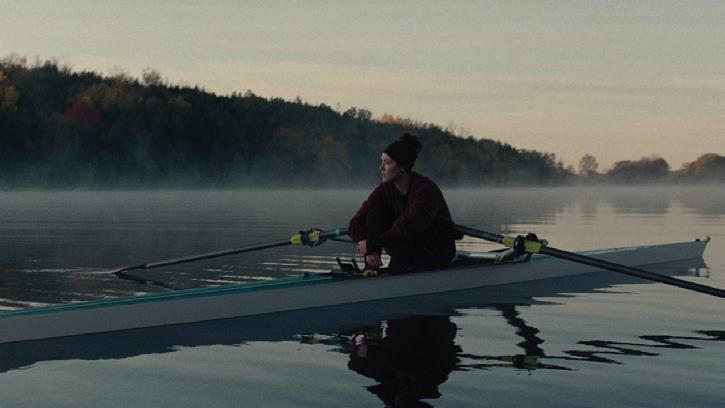
The idea that superheroes are born of trauma is firmly embedded in the genre. Bruce Wayne becomes Batman when his parents are killed in front of him. Spider-Man chooses to become a hero when his actions lead to the death of his uncle. Tony Stark builds his Iron Man suit after being badly injured; his superpowers literally protect his weak heart. Shang-Chi’s mother dies and he’s raised by a cruel father.

To some degree, characters in these stories are empowered by overcoming trauma. But you could also see the trauma as creating or inspiring the empowerment. What doesn’t kill you—whether a radioactive spider bite or the destruction of your home planet—makes you stronger.
In mainstream superhero stories, trauma that leads to strength is generally worth it, narratively. You watch stories about Batman and Iron Man and Shang-Chi because they’re powerful, after all. If they had to su er fi rst to save the world, that’s a reasonable tradeo , right?
Encanto isn’t so sure. In the fi lm, Abuela’s focus on power and abilities and specialness and saving everyone doesn’t heal su ering, but perpetuates it. The magic house was always built on a weak foundation, because trusting in power is a kind of weakness. It’s only when Abuela stops trying to save the villagers and lets them help her that she gets a house solid enough to hold a family together. Real empowerment, Mirabel insists, comes from loving and helping one another, not from magic strength or a magic shield.
Disney has too many fi nancial incentives to take that lesson to heart. But it’s still nice to see the company think about it briefly before the next round of MCU fi lms hit theaters. v @nberlat

DECEMBER 23, 2021 - CHICAGO READER 39
Mirabel Madrigal (voiced by Stephanie Beatriz) in Disney’s Encanto COURTESY DISNEY
SISKELFILMCENTER.ORG DRIVEMY DRIVEMY CAR CAR THETRAGEDY THETRAGEDY OFMACBETH OFMACBETH THENOVICE THENOVICE OPENSDEC.26 NOWPLAYING OPENSJAN.2 164NorthStateStreet Never miss a show again. EARLY WARNINGS chicagoreader.com/early
FILM
NOW PLAYING
RThe Matrix Resurrections


The era of the reboot continues with the fourth installment in the Matrix franchise: Resurrections
Twenty years a er the events of The Matrix Revolutions, Neo (Keanu Reeves) is living an ordinary life under his original identity, Thomas Anderson, having seemingly forgotten everything he learned ever since he first took that red pill. Now, a new group of rebels—and a new Morpheus—come crashing into his life and reopen his mind to the Matrix, which has become even more dangerous since he le it. There’s lots of winking, tongue-incheek moments in this movie with more than enough fan service; Resurrections is not afraid to poke fun at itself. It becomes almost meta in the most magical way as the new Morpheus (played by Yahya Abdul-Mateen II, who once again shows his chameleonlike range) recounts the previous Matrix adventures to Neo, trying to spark his memory. Even better, Neo and Trinity’s (Carrie-Anne Moss) chemistry burns as bright as ever—even if they don’t remember each other right away. Longtime fans may find it too heavy on the exposition, but newcomers will appreciate the context. And even though Laurence Fishburne’s absence is a sore spot that’s never fully
LILLEY R, 148 min. Wide release in theaters and streaming on HBO Max.



R
Nightmare Alley
Nightmare Alley, Guillermo del Toro’s neonoir adaptation of the 1946 novel, has a penchant for shadows and sleaze. The dark and gritty underside of showbiz is on display as Stan Carlisle (Bradley Cooper), a charming carnival barker with a budding dream of someday becoming a famous performer, is dri ing, searching for a path, and struck by recurring nightmares of the death of his father. A er falling for fellow entertainer Molly Cahill (Rooney Mara), Stan and Molly take their show on the road, moving to the big city where Stan teams up with high-profile psychologist Dr. Lilith Ritter (Cate Blanchett) to con a series of high-society socialites with a medium scam, seemingly connecting them to lost loved ones.
Nightmare Alley is a mesmerizing film of characters haunted by memory and regret, from Stan’s nightmares of his father to the longing for the past of the socialites
he cons. Each character is missing and yearning for something that they hope will make them whole. What del Toro so strikingly presents is a morality tale of how the desire to rectify the past can overwhelm our best judgment in the present, leading to disastrous consequences. —ADAM MULLINS-KHATIB R, 150 min. Wide release in theaters.



RThe Tragedy of Macbeth

The first question to ask of any film adaptation of a centuries-old play is, Why? Why again? Why now? The opening of Joel Coen’s The Tragedy of Macbeth made me doubt that the answer was anything more than, Just because. A24’s runaway successes might now make it a place for big-name directors to vent all the kookiness that mainstream production companies won’t tolerate. The first scene of The Tragedy, with Kathryn Hunter croaking and literally contorting her body as all three Weird Sisters, seems like precisely that kind of just-because weirdness. It soon becomes apparent, however, that The Tragedy of Macbeth strikes a unique and disturbing chord. The film presents a beautifully bleak vision of doomed political ambition which ultimately
shows that, even when fascists are incompetent, their ruthlessness creates irredeemable suffering.
Coen’s knack for darkly comical irony brings new life to Shakespeare’s tale of short-lived insurrection. Tight shots, fog-filled landscapes, and the claustrophobic, flat sets make the film’s world narrow, tiny, almost twodimensional. The kingdom for which Denzel Washington’s Macbeth sells his soul is a void, bare of compensation. Washington, silver hair prominent in the film’s gray scale, is perfectly cast as an aging powerhouse drained of power. He rasps through the play’s most famous soliloquy, exhausted as he apprehends the futility of all his crimes and of life itself: a tale told by an idiot, full of sound and fury, signifying nothing.
Even when the villain is vanquished, The Tragedy ends with a world irrevocably broken, proving its title does not merely concern the protagonist. Though you can still play A24 bingo with this film (unnecessary title cards, check; Ralph Ineson appearance, check), The Tragedy of Macbeth more than earns its existence. See it not to feel better about the world but to understand its horrors, its art, and its absurdity. —COLLEEN MORRISSEY R, 105 min. Wide release in theaters. v
40 CHICAGO READER - DECEMBER 23, 2021 ll
Get
this
showtimes and see reviews of everything playing
week at chicagoreader.com/movies
LIVE MUSIC IN URBAN WINE COUNTRY 1200 RANDOLPH STREET, CHICAGO, IL 60607 | 312.733.WINE don’t miss... Coming Soon... Los Lobos New Year’s Eve Run! Avery*Sunshine Tom Papa 1.21 12.30 1.09 1.07 1.08 1.06 Kaleo Wassman of Pepper 1.13 12.31 1.02 MIDNIGHT SUN 1.04 MADDIE POPPE 1.05 PROGNOSIS 1.11 HOT CLUB OF COWTOWN 1.12 ZO! AND TALL BLACK GUY 1.14 THE IGUANAS & KEVIN GORDON 12.26 TERISA GRIFFIN 12.27 FRANK CATALANO & JIMMY CHAMBERLIN OF THE SMASHING PUMPKINS 12.28 THE GUFS 12.29 FREDDIE JACKSON 1.01 TORONZO CANNON & ALTERED FIVE BLUES BAND BLUE YEAR’S DAY 1.15 MAYSA 1.16 BEATLES BRUNCH 1.16 VICTOR GARCIA & THE JUJU EXCHANGE 1.17 CONYA DOSS & FRANK MCCOMB 1.18 GREAT MOMENTS IN VINYL PRESENTS BORN TO RUN 1.19 AN EVENING WITH TC CARSON 1.20 THE PRINCE EXPERIENCE 1.22 RON POPE 1.25 KAKI KING 1.26 ANA POPOVIC 1.29 ANTHONY RODIA 1.30 CHRIS LEE 2.04 NEMR explained, The Matrix Resurrections is a breath of fresh air in a
time when reboots are a dime a dozen. —NOËLLE D.














DECEMBER 23, 2021 - CHICAGO READER 41 THALIA HALL 1807 S. ALLPORT ST. PILSEN, USA | THALIAHALLCHICAGO.COM 2 ◊ 4 2 ◊ 8 2 9 RAILROAD EARTH PINEGROVE 2 10 JAMESTOWN REVIVAL robert ellis presented by 93xrt 1 ◊ 27 FUCKED UP DAVID COMES TO LIFE empath 2 2 STRFKR the undercover dream lovers, das kope 2 ◊ 14 2 ◊ 17 CATE LE BON mega bog YOLA jac ross -last call! 1 ◊ 15 2 12 REBIRTH BRASS BAND CURRENT JOYS dark tea -last call! 1 ◊ 14 NEAL FRANCIS dos santos presented by 93xrt SIGN UP FOR OUR WEEKLY NEWSLETTER! 1 21 EIVØR emily jane white 1 6 1 7 TY SEGALL & FREEDOM BAND presented by CHIRP radio 2 16 TWIN SHADOW A FLY HONEY NEW YEAR 12 30 12 31 1 30 SAMIA LOVING U, THANKING U annie dirusso SOLD OUT COMING SOON TO THALIA HALL 1035 N WESTERN AVE CHICAGO IL WWW.EMPTYBOTTLE.COM 773.276.3600 $5 W/ RSVP CAJUN DANCE PARTY FEAT. THE MID-CITY ACES SAT 01/08 FRI 12/31 EBP EMPTY BOTTLE PRESENTS THU 12/30 THU 01/13 FREE 1/14 @ MUSIC BOX THEATRE: BOY HARSHER “THE RUNNER” FILM SCREENING,1/14: DAYBREAK PRESENTS FROSTBITE, 1/15: THE DODOS, 1/17: OPTIONS (FREE!) , 1/21: BLUE HAWAII, 1/14 @ MUSIC BOX THEATRE: BOY HARSHER “THE RUNNER” FILM SCREENING, 1/30: LYRA PRAMUK, 2/4: LUIS VASQUEZ, 2/5: WE ARE SCIENTISTS, 2/6: A PLACE TO BURY STRANGERS, 2/10: SWEET COBRA, 2/11: THE SPITS, 2/16 @ METRO: LOW, 3/2: CHARLOTTE DOS SANTOS, 3/3: SNAPPED ANKLES, 3/5: RYLEY WALKER + BITCHIN BAJAS NEW ON SALE: 1/28: CLOAKROOM (RECORD RELEASE), 1/29: CAFE RACER, 2/19: ZOMBI, 3/10: SHEER MAG, 3/22 @ GARFIELD PARK CONSERVATORY: FENNESZ, 4/1: OTOBOKE BEAVER WED 01/12 SAT 01/01 FRI 12/31 FREE THU 01/06 FRI 01/07 MON 01/10 BOY HARSHER KONTRAVOID • CLUB MUSIC HARD COUNTRY HONKY TONK WITH THE HOYLE BROTHERS 5PM - FREE BOY HARSHER THE PEN TEST • HIM HUN (DJ SET) @ LOGAN SQUARE AUDITORIUM EMPTY BOTTLE PRESENTS WINDY CITY SOUL CLUB BOY HARSHER PANTERAH • BEAU WANZER (DJ SET) 12PM-FREE HANDMADE MARKET FRENCH POLICE LILAC • VIRGIN MOTHER PUBLIC OPTION 8:30PM 12AM-FREE VARIOUS DISTRACTIONS w/ DJs BEAU WANZER & BLAKE CLARK JUNEGRASS FREE TIMES • LATHES FREE HIDE CLOUD RAT • SPIRIT TRAP COLD BEACHES NORTH BY NORTH • DAISYCHAIN RADKEY HUMAN ERRORS 1245 CHICAGO AVE, EVANSTON, IL EVANSTONSPACE.COM @EVANSTONSPACE DEC 31 WXRT PRESENTS A SPECIAL NYE PARTY W/ POI DOG PONDERING JAN 2 ALBERT LEE JAN 15 WESLEY STACE’S LATE STYLE JAN 20 PETER BRADLEY ADAMS JAN 22 FUNKADESI JAN 23 MS. LISA FISCHER EARLY & LATE SHOWS JAN 12 OLIVER WOOD OF THE WOOD BROTHERS JAN 21 NICHOLAS TREMULIS & THE PRODIGALS JAN 28 BRITTNEY SPENCER WITH ABBEY CONE JAN 29 TIM REYNOLDS & TR3
COVID kept on complicating our relationship with music in 2021
The pandemic continues to play havoc with live shows and tip the field toward monolithic corporations, but Chicagoans still put out so many great records that nobody could keep up with them all.
By LEOR GALIL
In September, a local collective of house DJs threw a party at Podlasie Club, an Avondale Polish bar with a distinctive L-shaped neon sign out front. The members of the Humboldt Arboreal Society usually spin under a tent in Humboldt Park, but for that one-o with veteran local DJ Rahaan, they’d made an exception—in part because a series called Podlasie Pleasure Club, launched in July by Chicago DJs Makamena and Leja Hazer, had helped turn the bar into the city’s best new dance venue.
In October, Podlasie hosted London producer and Night Slugs label head Bok Bok for his first Chicago set in five years. I could track Podlasie’s growth as a dance-music hot spot from the comfort of my home; within weeks of that Bok Bok show, it seemed like every time I opened Instagram I saw a new Podlasie flyer stacked with great local DJs. I’ve even walked past during an event that at any other time I would’ve wanted to attend—but even though the sight of revelers on the sidewalk in front of a club usually promises a fun night out, I’ve yet to venture inside.
Before vaccines were widely available, I told myself I wouldn’t see an indoor concert till the pandemic ended. That hasn’t changed, even though I got my first two doses in the spring and a booster in the fall—the virus that’s caused mass casualties and long-term health issues for millions remains a public health crisis. I love seeing shows, surrounded by dozens if not hundreds of strangers who all adore an artist enough to hang out in a club way past their bedtimes. But cramming myself into an indoor crowd remains a high-risk activity, and I wouldn’t even be able to enjoy it with thoughts of sickness and death careening to-
ward me like stage divers at a Knocked Loose show.
I’ve done everything I can to protect myself from the virus, and I applaud venues that take every safety precaution to mitigate the risks. Vaccination rates in Chicago are decent, but not high enough to completely defang COVID19—and it’s starting to look like Omicron is good enough at infecting vaccinated people that it might soon feel like April 2020 all over again. According to the New York Times , 76 percent of Cook County residents ages 12 and up have been fully vaccinated, though that figure doesn’t factor in boosters (which became available to all residents only recently). Until the threat of the virus ends for everyone, I’d rather stay out of nightclubs and music venues altogether.
I can’t pretend this decision hasn’t had adverse e ects on me. For one thing, it means my professional life is a new source of inner turmoil. Thankfully, I don’t depend on live shows to give me things to write about—for every story I publish, I usually leave three or four ideas on the shelf. And the Reader had already chosen to run concert reviews only sparingly, even before the pandemic—the paper mostly just covers summer festivals and the occasional show notable enough to be worth the trouble. I don’t feel like I’m neglecting my duties by avoiding live music, but it does mean I can’t report on Podlasie with the depth and intimacy I want. And I did fret that I couldn’t provide any personal insight into how it felt to be back in clubs, but plenty of other people could. Tribune critic Howard Reich addressed it in summer 2020, as the Green Mill cautiously reopened.
Reich announced his retirement from the
Trib in January 2021, leaving no music critics on sta at the largest daily newspaper in Chicago. Since his departure, I’ve been the last person in the country’s third-largest city with a full-time job as a newspaper music journalist. Of course, I’m not counting freelancers— Britt Julious and Hannah Edgar (a Reader contributor) provide crucial coverage of the local scene for the Tribune , the Sun-Times has a growing roster of stringers, and the South Side Weekly and the TRiiBE consistently publish must-read music stories. These Days and Sixty Inches From Center, among other outlets, also focus on local arts and culture.
But Chicago needs more journalists on the music beat full-time, because that level of immersion will let them provide a more complete picture of music’s role in our daily lives. More people in the field will also keep me from stressing quite so much about my burden of responsibility—as a music journalist, I feel obligated to do everything I can for Chicagoans, so much so that it’s a relief when I see somebody else cover a story I know I can’t get to.
Ever since Chicago clubs reopened earlier this year, I’ve wrestled with the question of how to support them and the artists who perform in them. I continue to write show previews, even though it’s strange to encourage others to do something I won’t. I absolutely want to support the musicians, and I know that the chaos of the pandemic has hardly let them figure out how to replace their crucial touring income.
Fortunately most local venues have so far managed to escape closure, in part because the Chicago Independent Venue League sprang into action as soon as the pandemic brought live music to a full stop. CIVL formed in 2018 to fight back against the existential threat of Live Nation’s involvement in the Lincoln Yards development (which still isn’t clear), and in the first weeks of the pandemic it also helped provide a blueprint for the National Independent Venue Association. NIVA successfully lobbied Congress about the Save Our Stages Act, which passed in December 2020, but federal support for pandemic-shuttered venues has trickled out slowly; under SOSA more than 14,000 venues applied for a Shuttered Venue Operators Grant loan, but six months after the act became law less than 0.7 percent of applicants had seen the money.
Live Nation remains a threat, and not just in Chicago. Before the pandemic, the multi national corporation was promoting 60 percent of the world’s ticketed events. In March 2021 its stock hit an all-time high, and
as Pitchfork recently reported, its share price continued to climb even after the catastrophe at Astroworld in Houston, a festival it promoted. Live Nation has the financial infrastructure in place to ride out the pandemic, and most independent venues—which together make up just 10 percent of the pie—don’t. That’s not even taking into account the advantage Live Nation derives from owning Ticketmaster (the world’s largest ticketing company), managing more than 500 artists, and throwing huge festivals. Even under normal circumstances, Lollapalooza hurts Chicago’s independent music venues—its promoter, C3, is part of Live Nation’s portfolio, which makes the event a beachhead for the monolithic company in a city that’s thrived largely without it. And because COVID has continued to wreak havoc on touring, those venues are especially vulnerable to Lolla’s distortions of the market.
I can’t blame anyone in the live-music biz for working at or playing Lollapalooza, not after more than a year of financial instability. As Damon Krukowski of dream-pop duo Damon & Naomi recently put it in his great Dada Drummer Almanach newsletter, a festival booking can underwrite an entire tour. But hitting the road is like playing a high-stakes game of Minesweeper, with musicians blindly hoping that their paths are safe, even when they pass through states that refuse to implement or enforce basic COVID safety measures.
I’ve lost track of the number of bands I’ve seen postpone or cancel parts of their tours—and I can’t forget that Eric Wagner, of Chicagoland doom pioneers Trouble, died from COVID-related pneumonia while on tour in Texas. I can’t forget he was unvaccinated either. The government’s hal earted response has made it impossible for most folks in the music business to simply sit out the pandemic, which would of course be safer. If you’ve taken every last precaution and can earn money on the road, or if you can pay an entire sta and keep the lights on at your independent club, why wouldn’t you do it?
I’ve found this year more isolating than 2020. I’ve felt pressure to do my part for public health, but I also know I can’t do much in the face of a mutating virus that’s killed close to a million people in this country alone. It’s hard to find room to grieve and manifest some joy, so I don’t begrudge anyone who buys a ticket to see a musician they love in a time when rejoicing is in short supply. I miss the venues where I’ve sought refuge after a grueling day of work, I miss the people at those spaces who’ve made me feel like part of a communi-
42 CHICAGO READER - DECEMBER 23, 2021 ll
THE
YEAR IN MUSIC
ty, and I miss the way a club’s vibrations can massage my body and get me moving, whether they come from a band, from a set of speakers, or from the people listening. This year I’ve mostly felt that kind of intensity while exercising, which probably makes my favorite 2021 album Turnstile’s Glow On—when I listened to it during my runs, it made me feel like I could burst through a brick wall even when my body told me another block was too far.
I know I would’ve heard more new-to-me music in 2021 if I’d gone to clubs, but I still had a huge surplus—the challenge isn’t discover-


ing it, but rather finding the time and energy to make sense of it all. Sometimes it feels like trying to drink from a fire hose. I kept a running list of albums, EPs, mixtapes, and projects that I’d never heard before, but I only added them if I listened to them in their entirety—I didn’t get through Lil Yachty’s Michigan Boy Boat, so I didn’t mark it down. So far that list is 750 releases long, and a few hundred of them are by Chicagoans. More than three-fourths of the latter came out this year.
I spend a lot of time listening to, thinking about, and researching Chicago music, ob-
viously, so I try to keep an eye on the public response to it: what catches on, what underperforms my expectations, what’s unjustly ignored. For seven years now I’ve put together a year-in-review list of overlooked Chicago releases (the first few focused on hip-hop), an exercise that forces me to reconsider what it means to be “overlooked.” My definition is slippery, but I tend to account for any kind of attention, not just media coverage. For example: In June, Ten City released their first album in 27 years, Judgement, which barely received any attention from the press. But Ten City are

a towering presence in the history of Chicago house, and Judgement was nominated for a Grammy for Best Dance/Electronica Album, which disqualified it from my “overlooked” list. Anything the Reader has covered this year, even in passing, is also ineligible—it’d be silly for me to claim that a release I’ve already recommended didn’t get properly noticed. I need to have overlooked it too!
This is an inexact science, but then again so is “taste.” These are my five favorite overlooked Chicago releases of 2021. I also list five honorable mentions.


Megiapa, Diddies Vol. 1
Asher White, American
History
DECEMBER 23, 2021 - CHICAGO READER 43
overlooked
releases of 2021 Honorable mentions Liam Brigham, Zombies Jamie Paige, Bittersweet The Purple Hotel, The Purple Hotel Sleepwalk, Underneath the Shade Toni, Running on All Fours v @imLeor The Feeders, Kerchoo Lean, scru y powerpop for punks who want to try their hand at ballroom dancing Flex Sinatra, Beyond Measure Flex’s concrete-rumbling baritone shrouds his rail-thin percussion, exacting bass, and glassy synths in a murky atmosphere that’s equally foreboding and alluring. Beth McDonald, Densing Who knew tuba improvisations embellished with electronics could be this enchanting?
These taut, atmospheric Afrofuturistic pop songs came out of a series of beats Megiapa made every day for a week, which makes me wonder what she could do with more time and tools.
Motel
Imaginative, earthy indie-folk brightened with bossa nova flourishes
Leor’s five favorite
Chicago
MUSIC
Van Paugam, City Pop evangelist and DJ
Van Paugam, 36, is a DJ who specializes in the 70s and 80s Japanese jazz, disco, funk, and fusion records collectively known as City Pop. In 2015, he started a YouTube channel that helped renew popular interest in the genre, which in turn allowed him to move his musical activities into the offline world when the channel was shut down. For the past three years, he’s maintained Chicago residencies at the Whistler (Lost in Translation) and Murasaki Sake Lounge (City Pop night), and his passion has introduced him to audiences around the globe.

I’ve always loved oddball music, just stuff that most people wouldn’t listen to. When I was young, it was hard to connect with people online or find communities that fostered love for lesser-known genres. I grew up with Napster and Limewire. Sometimes you’d get lucky and find good music randomly, but mostly you only knew what to look for from word of mouth. Someone would give you a CD or a tape or recommend something.

Being able to play new music for people and see their reaction—that’s always been important to me. As a child, I’d make tapes, recording stuff I heard on the radio. I loved new wave and disco, so when electroclash
by
and a
set by Van Paugam. RSVP required: e-mail tokyo@murasakichicago.com or call 312-266-2280. Fri 12/31, 10 PM, Murasaki Sake Lounge, 211 E. Ontario, $25-$75, 21+
started getting big in the aughts, it was a natural evolution for me. A lot of my friends were in the ballroom scene, so I was taken in by the voguing houses of Miami Beach and started DJing the balls. The ballroom scene is such a welcoming community, and it was all very house based. That’s how I started as a DJ, and I’ve evolved from there.
I moved to Chicago on February 11, 2011. I was 26, and it was my first time seeing snow! I was at a crossroads in Miami, and my roommate at the time was a DJ from Chicago. She was moving back and said, “Hey, why don’t you come with me?” I was going through really hard times, and it was like. . . . How many times
do you get the opportunity to move to an incredible music city where all these genres have their origins? I just packed my stu and left. I had one suitcase and maybe $100. Couldn’t even buy my own ticket—my roommate got it for me. And I just left everything behind.
When I first got here, I lived in Wicker Park, and my old roommate got a little studio by Danny’s Tavern. I went there all the time and experienced how diverse Chicago’s music scene really is. Being an outsider at the time, I didn’t get that many opportunities to DJ, so it was a little rough. But you know, I think when people get to know you and see your love and respect and desire to be active in the community—when there’s that willingness, I think people in Chicago really respond to it. I’ve found nothing but love here.
Around the mid-2010s, I got really into these Internet-based genres called vaporwave and future funk. They were sampling a lot of 70s and 80s Japanese music, often not crediting them, and I was dying to know who’d made these songs. Once I started looking into it, I realized they were all part of this genre I’d never heard of: City Pop.
I started hunting around online and found a lot of these old City Pop records were relatively cheap. I would save up and get them shipped overseas. Really quickly I had about 100 or so records. I started ripping them to MP3s, and then I would make playlists and upload them to YouTube. Not a lot of people were sharing music like that yet. I think I was one of the first, and my channel only had maybe five or ten subscribers at the time. But once I released my first mix, I got a couple thousand followers out of nowhere. The second one? My subscriber count jumped to, like, 20,000. About a year later, I had over 100,000 subscribers.
Tumblr was still big then, and there was a really big pull for, like, sad, sad music. People were getting into emo revival, and future funk and vaporwave were doing this nostalgic kick, especially with a lot of vintage anime GIFs. So I pushed that with my mixes and uploaded them with old anime clips. The music already sounds nostalgic, so when you add on all these
44 CHICAGO READER - DECEMBER 23, 2021 ll
Van Paugam in 2019 and at Murasaki Sake Lounge in 2018 COURTESY VAN PAUGAM
CHICAGOANS OF NOTE
As told to MICCO CAPORALE
“These songs aren’t from my youth—it’s almost like I’m reliving my past through the lens of a different culture and time.”
SHINNENKAI!
Live music
Mika Bridgebook
DJ
sad anime references from the past, like roses falling into water or a girl crying or something—people were like, “Wow, this has a lot of feeling.”
When I started doing the mixes in 2015, I was really struggling with depression. The music helped me work through that. It has this kind of healing quality, even though at the time I didn’t know Japanese. I felt this unconscious need to put the music in specific sequences to let something out. But I only made about ten mixes before my channel got shut down, which was hard at first but forced me into doing live events only, which I’ve done since.


The sound really brings me back to being a kid, hearing 70s and 80s pop music on the radio. It triggers this false sense of nostalgia that I find comforting. These songs aren’t from my youth—it’s almost like I’m reliving my past through the lens of a different culture and time. It has a really mellow, warm vibe—this very sincere aspect that you don’t find in, say, electroclash and indie dance. Those other genres don’t sound hopeful to me in the same way.

Plus I grew up on anime. Thematically, Cowboy Bebop dealt with a lot of issues that, as a child, I had never had to think about. A lot of tragic elements. Things that were melancholy and adult. I really admired Sailor Moon too. A lot of the themes dealt with things like helping friends and just being a good person.

My interest in anime did not grow with me, though. I’m not sure if it was something with the industry, but as I got older, a lot of anime felt less poignant to me, a lot more consumer oriented. Quick thrills instead of really meaningful, introspective things—things that asked bigger questions and provoked you to look deeper into your psyche and open yourself up to unfamiliar situations, that forced you to evolve. When I moved into City Pop, I found myself reconnecting to that.
Getting into City Pop also gave me this opportunity to develop a new kind of origin story for myself. I’ve never really felt like I have my own culture. My mom is Cuban, and my father is French, and I never felt accepted by either culture. I’ve always felt in between, but that created an openness in me to learn about and embrace other people’s cultures. Even though I’m not Japanese and don’t expect to be seen that way, I still feel like this is my chosen culture. I feel a really strong a nity for a lot of the philosophies, aesthetics, and language. I’ve found meaning that’s become a huge part of my worldview.
For example, I got really interested in Shin-
toism. In Shintoism, they can balance two different concepts at the same time without sacrificing the self. At the height of Shintoism, it coexisted with Buddhism, where people were able to balance both as valid belief systems, and I think that’s a lot of why Japanese music is able to be so inspired by other cultures while still remaining Japanese. This is something that I really like about a lot of Japanese philosophy: Everything is valid in its own way. Everything has a specific spirit that merits appreciation and respect. This mentality is so important to me and who I am.
Getting into City Pop inspired me to take Japanese language classes at the Japanese Culture Center. The owner there, Stephen Toyoda, was a DJ in high school. He helped open doors for me, like introducing me to the owner of Murasaki Sake Lounge. At first, Murasaki’s owner was very skeptical, but I was like, “Hey, I have all this Japanese music, I would really love to play it here.” He gave me a tryout on a really busy Saturday night. Been doing a regular night there for three years since. He recommended me to a lot of people too. In the mid-80s, there were around 4,000 Japanese companies in Chicago, so there were businesses and communities that catered to these homesick Japanese employees. A lot of them still exist and really want to be part of Chicago’s culture in a way that’s relevant.
And now there are Japanese DJs picking up on what I’m doing. Sixties Japanese vinyl was a big thing over there, but not so much 70s and 80s. There was a lot of cultural hesitancy towards City Pop, because the Japanese economy crashed going into the 90s. It’s such an optimistic, decadent sound. I don’t think many people in Japan wanted to be reminded of when Japan had money. But since it’s picked up in the West, Japanese people are reconsidering it.
Japanese record labels and shops have caught on that people want City Pop records, so they’ve reissued some of this stuff. But a lot of the original records have skyrocketed in price, which is hard for music lovers like me. I don’t want to play digitally anymore. My nights are for vinyl. But it’s exciting to meet and work with other DJs who have records that I don’t, so the audience gets to experience something new. There’s such a range, and I love collaborating in ways where I get to share that. There’s so much more out there than what I have, and I love expanding listeners’ horizons. v
@micco_caporale

DECEMBER 23, 2021 - CHICAGO READER 45
MUSIC Thoughts on these for print: 12/23 Metro: SOTA Best Coast Inner Wave Liam Kazaar sb: NYE 1/6 Metro: Best Coast Liam Kazaar Dorian Electra Dark Tranquility sb: Derrick Carter/Juan MacLean 1/22 (show prep coming) IE JAN: Best Coast 3730 N. CLARK ST METROCHICAGO.COM @METROCHICAGO FRIDAY JAN 28 / 9PM / 18+ THE BETHS LUNAR VACATION SATURDAY JAN 29 / 8PM / 5+ DORIAN ELECTRA MY AGENDA WORLD TOUR FRIDAY DEC 31 / 9PM / 21+ Metro, smartbar, & Queen! present REFLECTION NYE ‘21 THU DEC 23 / 7:30PM / 18+ 93XRT welcomes JEFF TWEEDY (full band) TENCI SATURDAY JAN 01 DVS1 JUSTIN AULIS LONG JS ALVAREZ SMARTBARCHICAGO.COM 3730 N CLARK ST | 21+ SUNDAY JAN 02 Queen! ft. MICHAEL SERAFINI GARRETT DAVID MADELINE FRIDAY JAN 07 J.PHLIP / STRIZ SATURDAY JAN 08 BOWIE BALL- DAVID BOWIE'S 75TH BDAY SAT JAN 08 SONS OF THE SILENT AGE MICHAEL SHANNON / JASON NARDUCY & FRIENDS PLAY T. REX SAT JAN 22 LIAM KAZAR ERYN ALLEN KANE MOONTYPE FRI JAN 14 INNER WAVE GIRL ULTRA WASHED OUT GIRLS AGAINST BOYS DARK TRANQUILLITY GRACIE ABRAMS JP SAXE MIZ CRACKER LOW SLEIGH BELLS ARIES FAYE WEBSTER ADOY JOYWAVE KAINA FEB 01 FEB 05 FEB 06 FEB 08 FEB 12 FEB 15 FEB 16 FEB 18 FEB 20 FEB 22 MAR 03 MAR 04 MAR 05 WED JAN 19 BEST COAST ROSIE TUCKER Queen! in Metro— DJ HEATHER / MICHAEL SERAFINI GARRETT DAVID smartbar— ARIEL ZETINA / HARRY CROSS JEFF DERRINGER / JUSTIN AULIS LONG PHILLIP STONE / SHAUN J. WRIGHT SEVRON Guest Hosts— VALENTINE ADDAMS SHEEZA WOMAN Resident Hosts— LUCY STOOLE / NICO / JOJO BABY
Recommended and notable shows and releases with critics’ insights for the
PICK OF THE WEEK
Chicago producer Equip builds new worlds from video-game music and vaporwave
ESPRIT 空想 , EQUIP, VITESSE X
Thu 12/30, 9 PM, Schubas, 3159 N. Southport, $25. 18+
CHICAGO PRODUCER KEVIN HEIN had been tinkering with computer music for about seven years when he fell in love with vaporwave in the mid-2010s. Since then, Hein has used the name Equip to release a string of singles, EPs, and odds-and-ends compilations that thread together the glistening 1980s moods of vaporwave with the immersive fantasy ambience of adventure video-game soundtracks. The worlds of vaporwave and gaming soundtracks overlap significantly, in part because figures such as Hein act as crucial connectors. In 2019, for example, Equip dropped a series of dreamlike singles featuring remixes from the likes of R23X, who helps run game-soundtrack label Yetee (“Cemetery Moonglow”); Nonlocal Forecast, a proggy vaporwave-adjacent smooth-jazz undertaking by Fire-Toolz mastermind Angel Marcloid (“Nocturne Catacombs”); and Esprit 空想, a sample-based side project from vaporwave heartthrob George Clanton (“Shadow Dancer”). Hein works with styles that lean heavily on nostalgia, but Equip’s imaginative excursions plumb worlds to which only Hein has the key—the digital harps and pan flutes fluttering through “Cursebreaker Z Lullaby,” on 2020’s self-released Cursebreaker Z, draw me into a universe entirely unfamiliar to me, and like a new map in a video game, it grows more enticing the further I get. —LEOR GALIL

CONCERT PREVIEWS THURSDAY30
Boy Harsher See also Fri 12/31 and Sat 1/1. Kontravoid and Club Music open. 9:30 PM, Empty Bottle, 1035 N. Western, sold out. 21+
Founded in Savannah, Georgia, in 2013, Boy Harsher have grown a cult following for their cryptmeets-dance-floor throb and coldly seductive, echoing vocals, notably on the 2014 favorite “Pain,” which has become a fixture on darkwave and goth playlists. The duo of producer Augustus Miller and vocalist Jae Matthews have since moved to Northampton, Massachusetts, but they’ve kept their stark, romantic aesthetic intact; on 2019’s “Face the Fire” Matthews breathes “It makes me wild” like she’s expiring in the throes of an enervating passion. The past couple of years have brought Boy Harsher some unanticipated challenges: the COVID-19 pandemic prevented them from touring, and in 2020 Matthews was diagnosed with multiple sclerosis. In response, the group moved away from their club roots and toward the film music that’s always been a parallel inspiration. In January, Boy Harsher will release a short horror film titled The Runner , along with a soundtrack on their label, Nude Club. On early single “The Tower’’ they play up their menacing atmospherics, while on “Give Me a Reason” Matthews sighs with a frozen longing worthy of a goth Chris Isaak. Fans need not fear that this shi will rob them of what they love about the duo’s music, though; Miller’s chilled beats still pound underneath, and the sets for their three-night New Year’s stint at the Empty Bottle will surely include plenty of ominous pulsations and ecstatic swaying.
—NOAH BERLATSKY
Equip See Pick of the Week at le . Esprit 空想 headlines; Equip and Vitesse X open. 9 PM, Schubas, 3159 N. Southport, $25. 18+
The Walters 7 PM, House of Blues, 329 N. Dearborn, $20. b
Chicago five-piece the Walters started selfreleasing their delightfully light throwback rock in the mid-2010s, and once I heard it, I assumed they wouldn’t take long to break out of the city’s indie scene. They wove plenty of pop hooks and doo-wop melodies into their effervescent, self-aware spin on classic rock, and 2015’s Young Men went over well in a city already hyped on Twin Peaks and other bands updating those old sounds. The Walters made it to Lollapalooza in 2017 before breaking up later that year, and all the members have since decamped to Los Angeles. Four regrouped as Corduroy, and front man Luke Olson formed the Olson Brothers, who signed a management deal with superproducer Rob Cavallo (who ran the boards for Green Day’s Dookie , Jawbreaker’s Dear You , and the Goo Goo Dolls’ Dizzy Up the Girl , among many other projects). According to Walters rhythm guitarist and vocalist MJ Tirabassi, Olson and his former bandmates began chatting about reuniting about a year and a half ago, but those conversations petered out.
46 CHICAGO READER - DECEMBER 23, 2021 ll
of December 23
week
MUSIC
b ALL AGES F
RANDALL COLE
The Walters’ priorities changed, though, after their languorous 2014 single “I Love You So” found an audience on TikTok late this summer. Labels began calling in October, and the Corduroy members reached out to Olson. “He met up with the other guys,” Tirabassi says. “And we kind of forgot what we were mad at each other for.” They reunited and in November signed to Warner Records, which released a new acoustic version of “I Love You So” that month. (The original version has nearly a quarter billion streams on Spotify.) I was taken in by the sun-kissed charm of “I Love You So” when it first came out, but I don’t particularly care to revisit it through the lens of its TikTok boom, a narrative that basically reduces the song to a recruiting tool for a sketchy social-media giant. Still, it’s helped connect the Walters to a support structure that would’ve made it easier for them keep going when they were independent, and Tirabassi says the band should have new material out next year. “We’re adding some production quality to our live show,” he says. “We have some other people playing with us now, and everything should be a juiced-up version of what it used to be.”
—LEOR GALIL
FRIDAY31
Boy Harsher See Thu 12/30. Pen Test opens and Him Hun DJs. 10 PM, Empty Bottle, 1035 N. Western, sold out. 21+
Lydia Loveless See also Sat 1/1. Andrew Sa opens. 9:30 PM, FitzGerald’s, 6615 Roosevelt, Berwyn, $49. 21+
In August, Lydia Loveless released two songs digitally that deserve a proper vinyl seven-inch treatment. For the B side, I’d pick “You’re Leaving Me,” a moody country torch song with indie-rock sensibilities that demonstrates Loveless’s skill at creating tiny, lethal melodramas with her words (“You write the story for me / It’s the only story I want to read / Even at the part where you say you’re leaving me”). On her 2020 album, Daughter, Loveless’s
biting lyrics and raw, rough electric-guitar sound bolstered her place in the alt-country canon, and her ace songwriting reminded listeners that she’s more than a singer. But “You’re Leaving Me” captures the Ohio native at an entirely new peak. Her voice sounds more mature and syrupy in a way that recalls late-80s soft-mullet-style Reba McEntire— whose 1987 single “The Last One to Know” also told a tale of a woman struggling to understand how her relationship went so wrong. For the A side of my imaginary future Loveless seven-inch, I’d choose the radio-ready “Let’s Make Out,” a breezy, ebullient track with a bouncy chorus and country-rock riffs that contrast nicely with the somber “You’re Leaving Me.” Loveless recently finished a tour through the southern and western U.S. with fellow indie singer Lilly Hiatt, and she’s coming to Berwyn for two New Year’s shows at FitzGerald’s. If you plan on attending the first, be sure to get there on time so you can hear the velvety high tenor of Chicago country crooner Andrew Sa, who opens the night.
—SALEM COLLO-JULIN
Touched By Ghoul Boybrain, Lollygagger, and Heet Deth open. 9 PM, Liar’s Club, 1665 W. Fullerton, $29.50. 21+
Can some people subconsciously sense what the future holds? It’s fun to consider, especially in the context of something as good-natured as the new second album by Chicago art-rockers Touched by Ghoul: it bears the unintentionally prophetic title Cancel the World. Vocalist and guitarist Angela Mullenhour (formerly of Sybris), guitarist Andrea Bauer (formerly of the Reader), bassist Alex Shumard, and drummer Paige Sandlin tracked the record at Electrical Audio in summer 2019, mixed it in January 2020, and a couple months later . . . well, you know what happened. The album follows 2016’s joyfully twisted Murder Circus, which was inspired by slasher flicks—doomed protagonists, corpses, and all. But Cancel the World casts off that narrow focus for a broader mix of sounds and subject matter, rooted in everyday frustrations and experiences (though the unhurried indie jam “Lost at the Costco” does bring to mind a couple real-life horror stories). Punk rip-
per “Better Than Me” is catchy enough to stick in your head for days, and “Yacht Problems’’ embraces the band’s noise-rock foundations. With the world slightly less canceled (at least for now), Touched by Ghoul will ring in 2022 by playing a headlining set at Liar’s Club, giving fans a chance to hear songs from Cancel the World live a er a nearly two-year wait. With any luck they’ll also acknowledge the end of the holiday season by breaking out the hilariously jaded carols from their two-song 2020 EP Christmas Sluts—“Hey Old Man” includes the refrain “Merry Christmas and a big ‘fuck you’ / Silver bells, well fuck them too.” —JAMIE LUDWIG

SATURDAY1
Boy Harsher See Thu 12/30. Panterah open and HIDE DJ. 9:30 PM, Empty Bottle, 1035 N. Western, sold out. 21+
Lydia Loveless See Fri 12/31. Todd May & Jay Gasper open. 8:30 PM, FitzGerald’s, 6615 Roosevelt, Berwyn, $20. 21+
Stöner Dead Feathers and Cloud Cruiser open. 9 PM, Reggies Rock Club, 2109 S. State, $20. 17+
California power trio Stöner are a new band of road-tested musicians. The collective resumé of guitarist and vocalist Brant Bjork, bassist and vocalist Nick Oliveri, and drummer Ryan Gut sprawls across the ranks of stoner-rock royalty: they’ve played in the likes of Kyuss, Queens of the Stone Age, Fu Manchu, and the underrated Hammerface. So if you’re into that sort of music, you know you’re in good hands, and you have a pretty good idea what to expect: heavy, trippy, sun-kissed blues rock made by scruff y-looking desert dwellers. This spring Stöner made their debut via livestream as part of the Live in the Mojave Desert concert series, and on the resulting recording, Live in the Mojave Desert Volume 4, they sound assured and absolutely ready for the big time—even though they’d never
played those songs for an audience before. That audacious start earned Stöner a lot of attention, and whetted fans’ appetites for the band’s first studio album, June’s Stoners Rule (released digitally on Heavy Psych Sounds). The record feels lived-in and comfortable at first listen—it’s easy to imagine that if it were issued on vinyl, decades-old marijuana seeds would fall out of its gatefold sleeve. Opening track “Rad Stays Rad” features sick soloing from Oliveri and a nice slow bluesy groove from the rhythm section, which lets you settle in and get comfortable before the guitar blasts into outer space. As the chorus puts it, “Shit don’t change / Rad stays rad,” and throughout the album Stöner’s commitment to their aesthetic never wavers for a moment; “Own Yer Blues” is lovely stoner rock, and “Evel Never Dies” proves (rather surprisingly) that it’s downright charming to hear a band writing songs about Evel Knievel in 2021. The meandering closing jam, “Tribe/ Fly Girl,” is a throbbing slow burn with poetic lyrics and a climactic cry to heaven that evokes some of Jimi Hendrix’s astral projections. Heavy as it is, Stoners Rule shows that Stöner are also capable of lightness that allows plenty of space for surprises.
 —MONICA KENDRICK
—MONICA KENDRICK
ALBUM REVIEWS
Anatomy of Habit, Even if It Takes a Lifetime Self-released anatomyo abit.bandcamp.com/album/even-if-ittakes-a-lifetime
It’s been ten years since Chicago collective Anatomy of Habit released their first record, and a lot has changed since then. Anchored by front man Mark Solotroff, the band came out of the gate with long, complex, layered songs that blend doomy metal, Swans-style noise rock, bleak postpunk, heavy drones, and hypnotic guitar-looping acrobatics. It’s tempting to call Anatomy of Habit a weirdo-rock supergroup, because past members have spent time in an eclectic mix of bands that includes Tortoise, Wolves in the Throne Room, Cheer-Accident,
DECEMBER 23, 2021 - CHICAGO READER 47
MUSIC
The Walters KRISTINA PEDERSEN
Touched by Ghoul CHRIS HERSHMAN
MUSIC
Find more music listings at chicagoreader.com/musicreviews

the season in Margate Park and Ra livestreamed a show as part of the Chicago Asian American Jazz Festival. Rempis and Ra have collaborated in various contexts for around 15 years, and given the energy level the two men usually sustain in their ongoing project with bassist Joshua Abrams, it would’ve been reasonable to expect their Constellation set to be a free-jazz blowout. Instead, playing for an audience of video cameras and an engineer, they broke their silence almost gingerly. There’s an unusual amount of space in Ra’s playing, making Bennu an unparalleled opportunity to hear the tonal variety of his touch as he eases his way into a series of ceremonial grooves. Rempis responds with long, unfurling lines that peak with his usual rippling force, but he also dips into patient elaborations on the melodies he turns up as he winds through the drummer’s patterns. The saxophonist has never before engaged so deeply with the spiritual and sonic implications of the music that Ra has made in the company of Phil Cohran, Sun Ra, and Nicole Mitchell; here’s hoping he makes his way back to this zone again. —BILL
MEYER
Wadada Leo Smith, Henry Kaiser, and Alex Varty, Pacifica Koral Reef
577 Records
577records.bandcamp.com/album/pacifica-koralreef
and Joan of Arc. That shifting lineup has allowed the intricacies of the band’s sound to morph as well: on 2014’s Ciphers + Axioms, Anatomy of Habit coalesced into a brutal doom-punk monster with two songs that each took up an entire album side with their cold, menacing evil. And then came another lineup shi , and with it a long wait for a new record. This month’s Even if It Takes a Lifetime is the band’s first release in seven years, and their first to feature the fresh lineup of Solotroff, drummer Skyler Rowe, bassist Sam Wagster, guitarist Alex Latus, and Solotroff’s longtime collaborator in Bloodyminded and the Fortieth Day, percussionist Isidro Reyes. Despite the new faces, Anatomy of Habit continue to focus on their core mission: patience, mood, dread, and volume. The dynamics and feel are different with this group, though: there’s warmth, melody, and the occasional sense of upli . Solotroff is known for screaming his head off, but on this record he sounds more reserved and introspective. The new players add more dimensions too. In the past, the band’s scrap-metal percussion has typically provided harsh blasts of noise, but Reyes uses it for depth and atmosphere; meanwhile, Wagster’s lap steel (which he also plays in postrock outfit Mute Duo) adds beautiful, forlorn, cinematic texture across the board. It’s exciting to hear a band who’ve been around for this long continue to reinvent themselves while remaining interesting. Even if It Takes a Lifetime was recorded alongside a second new LP, which with any luck will also see the light of day soon.
—LUCA CIMARUSTI
control the heat they apply to their luxurious contemporary take on soul, so that it smolders instead of burning off the roof. The Chicago duo mostly stay cool and low-key on their latest EP, No Swimming. During the songs’ hushed passages, Haymes’s almost hornlike voice and limber, minimal guitar lines gild the music with a suggestion of romance— and the music maintains this intimacy even when it expands into fully fleshed-out arrangements. The O’My’s excel at blending genres, creating a space where the sounds of tough-as-nails rapping, grimy funk, and polished radio pop can move together. This skill helps them evoke the magnetism and luster of quiet storm-era R&B and reframe it in the context of modern-day Chicago music. Their restraint throughout the EP pays off splendidly on “Dragon,” where they step out of their refined cool for a moment and let lithe boom-bap percussion drive the gently wafting track (embellished by a loose-limbed, simmering verse from rapper Femdot) into ecstasy. —LEOR
GALIL
DAve Rempis & Avreeayl Ra, Bennu Aerophonic daverempiscatalyticsound.bandcamp.com/ album/bennu
The
O’My’s, No Swimming Nice Work/Warner theomysband.com
As the O’My’s, singer-guitarist Maceo Vidal-Haymes and singer-keyboardist Nick Hennessey carefully
Bennu, the first duo recording by saxophonist Dave Rempis and drummer Avreeayl Ra, takes its name from an avian Egyptian divinity that created itself and also helped bring the world into being. It’s a fitting title for a completely improvised performance, especially one that ended the longest stretch without a gig that either had endured in their respective careers. In February 2021, when the two musicians finally convened at Constellation to record what became Bennu, the Delta wave of COVID had wreaked havoc on their performing schedules for months: neither had played a concert since November 2020, when Rempis had his last open-air date of
Trumpeter and composer Wadada Leo Smith, who turned 80 earlier this year, is seemingly at the height of his creative life—despite having already catalogued decades of accomplishments across dozens of releases, both in the company of AACM masters and as a bandleader. In May he issued a pair of three-disc sets, one focused on solo trumpet and the other on his work with bassist Bill Laswell and late drummer Milford Graves. He’s since put out a recording with Chicago players (Sun Beans of Shimmering Light with Douglas R. Ewart and Mike Reed), worked with larger New York ensembles (including during a residency at the New School), premiered compositions for strings, and livestreamed several concerts. On his new Pacifi ca Koral Reef , Smith collaborates with a pair of guitarists, west-coast improviser Henry Kaiser and Canadian arts critic Alex Varty. The trio adhere to the path set out in one of Smith’s visual scores, a system the trumpeter developed more than 50 years ago and has dubbed “Ankhrasmation.” The lone 55-minute track that comprises Pacifica Koral Reef is related to the ideas and emotions summoned during Varty and Kaiser’s regular diving trips in British Columbia’s Salish Sea and under the ice in Antarctica, respectively. Varty opens the album with delicate guitar soli, and for almost ten minutes he creates a calming sense of peaceful expansiveness. Smith’s entrance on the track doesn’t erase that feeling; instead his burnished brass complements Varty’s strings with yelps and wavering long tones. The eventual addition of what sounds like pitched electronics (actually Kaiser’s guitar) puts listeners on notice: Pacifica Koral Reef offers a singular approach to electroacoustic improvisation. While Kaiser cuts loose at times, Pacifica Koral Reef is a rare glimpse at a trio largely denying the extremes frequently associated with orchestrated improvisation, as each player swims through Smith’s score and embraces a liquid sense of time. —DAVE CANTOR v

48 CHICAGO READER - DECEMBER 23, 2021 ll
Wadada Leo Smith MICHAEL JACKSON
continued from 47 1/12 Ras Kwame & One Africa 1/19 Tribute to Mercedes Sosa by Mario Gonzavarg WORLD MUSIC WEDNESDAY SERIES FREE WEEKLY CONCERTS, LINCOLN SQUARE OLDTOWNSCHOOL.ORG 4544 N LINCOLN AVENUE, CHICAGO IL OLDTOWNSCHOOL.ORG • 773.728.6000 FRIDAY, JANUARY 14 8PM Masters of Hawaiian Music: George Kahumoku Jr., Ledward Kaapana, Herb Ohta Jr. FRIDAY, JANUARY 14 8PM Skerryvore In Szold Hall SUNDAY, JANUARY 16 7PM Livingston Taylor In Szold Hall SATURDAY, JANUARY 22 7 & 9:30PM Erwin Helfer 86th Birthday Celebration with special guests John Brumbach, Katherine Davis, Skinny Williams, Pastor Donald Gay, Elsa Harris and more • In Szold Hall SATURDAY, FEBRUARY 5 5 & 8PM Ladysmith Black Mambazo UPCOMING CONCERTS AT NEW SHOWS JUST ANNOUNCED • ON SALE NOW A brand new season of World Music Wednesday shows! 1/22 Erwin Helfer 86th Birthday Celebration 9:30pm show added 3/3 The Time Out Tour: The Accidentals, Beth Nielsen Chapman, Kim Richey, and Maia Sharp 4/4 & 5/9 Chicago Cabaret Professionals FOR TICKETS, VISIT OLDTOWNSCHOOL.ORG Share Music. Buy Old Town School Gift Certificates!








DECEMBER 23, 2021 - CHICAGO READER 49 GENESEE THE SPOTLIGHT IS CLOSER THAN YOU THINK THE A SHOW YOU WON'T WANT TO MISS! THE GENESEE THEATRE 203 NORTH GENESEE STREET, WAUKEGAN, IL GENESEETHEATRE.COM TICKETMASTER: 800-982-2787 "Dilemma," "Ride wit Me" and "Hot in Herre" THURSDAY, JANUARY 20 7:30 PM + special guests MICHAEL SHANNON JASON NARDUCY & FRIENDS play T. REX 3730 N CLARK ST Share Music. Buy Gift Certificates! ots.fm/gift Good for Classes, Concerts, and Gear! oldtownschool.org This winter, try an 8-week group class in guitar, ukulele, dance, banjo, and so much more. Your Musical Adventure Begins with Old Town School! FOR IN PERSON & ONLINE CLASSES, SIGN UP AT:
EARLY WARNINGS
Sébastien Léger 2/5/2022, 9 PM, Chop Shop, 18+ Legendz of the Streetz featuring Rick Ross, Jeezy, 2 Chainz, Fabolous, Trina, DJ Drama 2/18/2022, 7 PM, Credit Union 1 Arena at UIC b
Dua Lipa, Caroline Polachek, Lolo Zouaï 3/9/2022, 7:30 PM, United Center b
Lower Automation, Snooze, Past Forms, Background Character 1/20/2022, 7:30 PM, Beat Kitchen, 17+ Madeon, Yung Bae 3/12/2022, 9 PM, Aragon Ballroom, 18+ Mayday Parade, Real Friends, Magnolia Park 3/10/2022, 6 PM; 3/11/2022, 7 PM, House of Blues b
b ALL AGES F
Never miss a show again.
GOSSIP WOLF
NEW
Action Bronson, Earl Sweatshirt, Alchemist 2/11/2022, 7 PM, Riviera Theatre b Adoy 3/3/2022, 7:30 PM, Metro b
Aerophonic Records release party with Dave Rempis & Avreeayl Ra 1/16/2022, 9 PM, Hungry Brain F Arooj A ab 4/11/2022, 8 PM, Constellation, 18+ Anteloper 1/16/2022, 8 PM, Sleeping Village Aqueous 4/23/2022, 9 PM, Chop Shop, 18+ Avery Sunshine 1/6/20221/9/2022, 8 PM, City Winery b
Badluck Records Coat Drive II featuring N.W.G. (Saint Icky, JA Grimm, and Big Gidz), Convertible Ashley, Apollo Mighty, Neph & Nigel, Mattydidthat 1/19/2022, 8:30 PM, Subterranean, 17+
The Band Camino, Flor, Hastings 3/25/2022, 7:30 PM, Riviera Theatre b Bearings, Between You & Me, Young Culture, Jail Socks 3/5/2022, 7 PM, Cobra Lounge, 17+
Being as an Ocean, Capstan, Thousand Below, Limbs 1/21/2022, 7:30 PM, Subterranean, 17+ Lurrie Bell 1/14/2022, 9 PM, FitzGerald’s, Berwyn Big League Boys 1/15/2022, 9 PM, Beat Kitchen
Bonobo, Jordan Rakei 3/11/2022, 9 PM, Aragon Ballroom, 18+

Coki, Ternion Sound, Sir Hiss, Fubar, Swamp Session 1/29/2022, 9 PM, Chop Shop
Cold Beaches, North by North, Daisychain 1/7/2022, 10 PM, Empty Bottle Cordae 2/28/2022, 7:30 PM, House of Blues b
Creeping Charlie, Clementine, Interlay 1/13/2022, 8 PM, Beat Kitchen, 17+
D Smoke, Tiffany Gouché, Domani, Sherie 2/3/2022, 7 PM, Concord Music Hall, 18+ Darkness, Dead Deads 3/30/2022, 7:30 PM, Park West, 18+
Daughtry 3/8/2022, 7:30 PM, Rialto Square Theatre, Joliet b
DJ Marc Davis 1/8/2022, 9 PM, Punch House F Dear Hunter, The World Is a Beautiful Place and I Am No Longer Afraid to Die, Tanner Merritt 3/27/2022, 7 PM, Metro, 18+
Dendrons, So and Dumb, Llo Llo 1/12/2022, 8:30 PM, Sleeping Village
Diamond Formation featuring Sherelle, A.S.L. Princess, Ariel Zetina 1/14/2022, 10 PM, Smart Bar
Dodos, Michael John Grant 1/15/2022, 8:30 PM, Empty Bottle
Emily Blue, Babe Club 1/15/2022, 9:30 PM, Hideout Eton Tribe All-Stars 2/2/2022, 8:30 PM, Maurer Hall, Old Town School of Folk Music Fb
Femdot, Alex Banin, Ohana Bam 1/16/2022, 7 PM, Bottom Lounge b
Ivy Ford 1/10/2022, 8 PM, SPACE, Evanston b
Franc Moody 6/17/2022, 7 PM, Chop Shop, 18+
French Police, Lilac, Virgin Mother 1/8/2022, 8:30 PM, Empty Bottle
Frostbite featuring Dirty Bird, Casper McFadden, Lustsickpuppy, Yesterdayneverhappened, Munki 1/14/2022, 10 PM, Empty Bottle
Fucked Up, Empath 1/27/2022, 8:30 PM, Thalia Hall, 17+
Mario Gonzavarg’s Mercedes Sosa Tribute 1/19/2022, 8:30 PM, Maurer Hall, Old Town School of Folk Music Fb
Alex Grelle, Karen Meat 1/18/2022, 8 PM, Sleeping Village
Huguito Gutierrez con SolAndino 1/26/2022, 8:30 PM, Szold Hall, Old Town School of Folk Music Fb
Fareed Haque & Goran Ivanovic 1/9/2022, 7 PM, SPACE, Evanston b
Heilung 9/13/2022, 8 PM, Radius Chicago, 18+ Hot Chip, LA Priest 5/14/2022, 8 PM, Radius Chicago, 18+ Hot Club of Cowtown 1/11/2022, 8 PM, City Winery b Jenny Hval 5/15/20225/16/2022, 8:30 PM, Constellation, 18+ Illville Vanguard presents D’Angelo’s Black Messiah with Sam Trump and Erthe St. James 1/20/2022, 8 PM, the Promontory b Jack White 4/12/2022, 8 PM, Credit Union 1 Arena at UIC b
J.Phlip, Striz 1/7/2022, 10 PM, Smart Bar
Junegrass, Free Times, Lathes 1/10/2022, 8:30 PM, Empty Bottle F
Khruangbin, Nubya Garcia 3/5/2022, 8 PM, Aragon Ballroom, 17+
Kid Francescoli, Kids Return 6/8/2022, 9 PM, Sleeping Village
King Louie, Kam, Duffle Bag Buru, Ego Jaleel 1/14/2022, 6:30 PM, the Promontory Knocks 4/1/2022, 8 PM, Concord Music Hall, 18+ Kshmr 3/19/2022, 10 PM, Radius Chicago, 18+ Latto 4/9/2022, 7 PM, Patio Theater b
Jesse McCartney, Casey Baer 5/14/2022, 8 PM, Park West b Mia Joy, Tenci 1/14/2022, 8 PM, Sleeping Village MK 2/5/2022, 10 PM, Concord Music Hall, 18+ Marisa Monte 3/15/2022, 8 PM, the Vic b
Tommaso Moretti 5/20/2022, 8:30 PM, Constellation, 18+ Night Spice 1/14/2022, 8:30 PM, Beat Kitchen, 17+ Papa Roach, Hollywood Undead, Bad Wolves 3/12/2022, 5:30 PM, Hard Rock Casino Northern Indiana, Gary Penelope Isles, Pom Poko 3/14/2022, 6:30 PM, Cobra Lounge b Polymath featuring Duke Shin, Boy Alberto, Mazen Rimawi 1/15/2022, 10 PM, GMan Tavern Prof, Mac Turner, Tae Supreme, DJ Willie Wonka 1/25/2022, 8 PM, Reggies Rock Club, 18+ Queens of Crunk party featuring Trillville, Jukie tha Kid, Radio Champ 1/29/2022, 10 PM, the Promontory Radkey, Human Errors 1/13/2022, 8:30 PM, Empty Bottle
Ras Kwame & One Africa 1/12/2022, 8:30 PM, Maurer Hall, Old Town School of Folk Music Fb
Rebirth Brass Band 1/15/2022, 8:30 PM, Thalia Hall, 17+ Cathy Richardson 1/22/2022, 9 PM, FitzGerald’s, Berwyn Rotimi 1/13/2022, 8 PM, Reggies Rock Club, 18+ Charles Rumback Trio, Jeff Parker 1/30/2022, 8 PM, Hideout
Russian Circles, Rezn 4/10/2022, 9 PM, Lincoln Hall, 18+
Said the Sky 4/1/2022, 10 PM, Radius Chicago, 18+ Save the Rock n Roll Festival featuring Yakuza, Black Road, Bollweevils, Molder, Pale Horseman, Hewhocorrupts, Wraith, Gamma
Goat, Crusadist, High Priest, Splatter Pattern, Nucleus, Micawber, and more 1/14/2022-1/16/2022, Reggies Rock Club, Cobra Lounge, Liar’s Club, and Live Wire Scary Kids Scaring Kids, D.R.U.G.S., Secrets, Dead American 2/18/2022, 5 PM, Concord Music Hall b 1788-L, Lick 2/18/2022, 9 PM, Bottom Lounge, 17+ Sister Hazel 2/19/2022, 8 PM, House of Blues, 17+ Squid 3/16/2022, 7:30 PM, the Vic, 18+ Stomatopod, Mint Mile, Repeaters 1/28/2022, 9 PM, Hideout Max Subar 1/10/2022, 8 PM, Sleeping Village F Superchunk, Wednesday 3/9/2022, 8 PM, Metro, 18+ Superwolves, Jonathan Richman 3/2/2022, 6:30 and 10 PM; 3/3/2022, 5:30 and 9 PM, Constellation, 18+ Patrick Sweany 3/5/2022, 8 PM, FitzGerald’s, Berwyn Teenage Bottlerocket, Last Gang, Tightwire, Brendan Kelly 1/15/2022, 7 PM, Chop Shop, 18+ Thieves, Absent Mind, Heavy Down, Gavel 1/28/2022, 9 PM, Reggies Music Joint Tim Daisy’s 4 Tet, Bird Watchers 1/30/2022, 9 PM, Hungry Brain
Tomasa del Real 1/14/2022, 9 PM, Subterranean Two Friends, Ship Wrek, Laszewo 2/25/2022, 9 PM, Aragon Ballroom, 18+ Vincint 1/18/2022, 8 PM, Subterranean, 17+ Vortis, Gravetones, HotLips Messiah 1/22/2022, 9 PM, Reggies Music Joint
Vulgar Commons, Cryptics, Usuals 1/13/2022, 8:30 PM, Reggies Music Joint Waco Brothers, James Dean Joint, Dirty Green 1/7/2022, 8 PM, Schubas
The Warning 2/2/2022, 7 PM, Bottom Lounge, 17+ Webb Wilder & the Beatnecks 1/29/2022, 8 PM, FitzGerald’s, Berwyn
Windy City Smokeout featuring Tim McGraw, Miranda Lambert, Sam Hunt, Willie Nelson & Family 8/4/20228/7/2022, United Center b
Zelienople, Pan•American 1/15/2022, 8:30 PM, Constellation, 18+
Zo!, Tall Black Guy 1/12/2022, 8 PM, City Winery b v
A furry ear to the ground of the local music scene
BY THE TIME Emily Nejad and Maggie Kubley of Celine Neon amicably retired their electro-pop duo in 2018, Kubley had already released several appealing solo tracks and videos online. In 2019, she compiled several of them on an EP, Come Over, and that spring she staged a musical storytelling event based on the songs at Steppenwolf Theatre. Kubley isn’t done with that material, either: this month she collaborated with local filmmaker Sarah Minnie on a new music video for the title track, which she says depicts “a woman frantically trying to get ready for an unexpected booty call when she finds herself transported into a magical forest of trippy sensuality and fairy- fueled selfexploration.” This wolf thinks it’s the best video about “quality alone time” since “I Touch Myself” by the Divinyls! On Thursday and Friday, December 30 and 31, Kubley performs in the Fly Honey Show’s New Year’s celebration at Thalia Hall
New York hardcore veteran Matt Grande and prolific Chicagoan Craig Woods (Pink Eyes, Hot Bagels) make noisy punk as Recent Ancestors , and “Satisfied,” the blustery lead single from their new self-titled EP, is a must for fans of hideous call-and-response screams and nonstop instrumental explosions. The EP drops Friday, December 24, on four labels, including Woods’s Be Happy Records ; only 50 physical copies exist, so get your one-sided ten-inch lathe-cut record now. All four labels will donate their proceeds, and Be Happy’s share will benefit the Rogers Park Free Store mutual-aid project.
Chicago rapper Neph piqued this wolf’s interest with last year’s EP More to Come, and last week he delivered on the promise of its title by dropping the full-length Hell if I Know , whose brisk, heartfelt tracks foreground dreamlike samples and punchy percussion. The way Neph cuts through the cluttered sounds and irregular rhythm of “Hour Glass” will promptly win over any underground hip-hop head.
—J.R. NELSON AND LEOR GALIL
Got a tip? Tweet @Gossip_Wolf or e-mail gossipwolf@chicagoreader.com.

50 CHICAGO READER - DECEMBER 23, 2021 ll
Sign up for the newsletter at chicagoreader. com/early
Bonobo DAN MEDHURST
CHICAGO SHOWS YOU SHOULD KNOW ABOUT IN THE WEEKS TO COME
KEITH HERZIK
WOLF BY
SAVAGE LOVE
Kinkster v. Straight
An extreme love of bondage doesn’t mean your fetish needs to end in “sex.”
By DAN SAVAGE
Q : I’m extremely kinky, with an emphasis on extreme. I love long-term and extremely restrictive bondage. Think full-body casts or getting locked up for an entire weekend. I’m a 32-year-old straight male who has been married for five years. In the last year we opened up our marriage because my sexual desires were putting too much of a strain on the marriage. My wife is incredible, and we do many wonderful kinky things together, but I needed more. More frequency, more intensity. Since then, I’ve seen some other women but looking around I came to the realization that gay men have all the fun! I o en see these incredibly intense sexual experiences that I so desire in amateur gay porn or on various gay men’s fetish profiles. I think men have a higher propensity
to pursue these kinds of things. I’ve been talking to a guy who shares a very similar set of kinks, and it’s been great. He showed me Recon, which has opened a whole new world up to me. I’m struggling right now. It’s like a battle between my identity as a kinkster/ fetishist and my identity as straight. I think the former is going to win, but certain things concern me. I don’t know if I’ll feel repulsed to have, say, a dick in my mouth. And I don’t want the poor guy that I play with to have to deal with my own internal psychological drama. I grew up in a very rural area that was extremely homophobic. I was bullied and called a faggot constantly. I’ve just recently been feeling less shame about being kinky and now there’s this whole other level of shame that I am scared to contend with. Am
I silly for considering doing stuff with men even though I’m a lot more attracted to women, just in order to fulfill these kinks? —BROODING OVER UNMET NEEDS DAILY
A : “I felt very much in this person’s shoes at one point in my life,” said bondage porn star James “Heavy” Woelfel. Just like you, BOUND, Heavy was always turned on by extremely heavy bondage scenarios. That was the reason he chose “Heavy Bondage For Life” as his porn name. And just like you, BOUND, Heavy once felt conflicted about getting tied by other men because he didn’t identify as gay or bisexual at the time.
“I was really worried that if I played with men that meant my identity had to change too,” said Heavy. “But seeking out other genders to play with doesn’t necessarily have
to change your identity.”
Heavy’s identity ultimately did change—he now identifies as queer—but he wants you to know that your identity doesn’t have to change. “I view bondage the same as getting together with friends for a round of golf, or shooting hoops, watching a movie or game together,” said Heavy. “I’ve had many bondage encounters that involved sex, but I’ve had even more that were simply about the bondage itself.”
What Heavy is suggesting here, BOUND, is that you can meet up with another guy for a heavy bondage scene and enjoy the bondage—and even get off on the bondage— without having “sex.” You can consent to being a guy’s bondage sub for an evening or a weekend without having to consent to sucking his dick or letting him fuck your ass.
“BOUND just needs to be direct about what he’s looking for when he reaches out to the guys he might like to play with,” said Heavy. “He needs to have the same conversations he had with his wife about limits, comfortability levels, and intentions. And if someone’s pushy about certain things that he’s unsure about, then they’re likely not the right person for him.”
Bondage tops on Recon with the kind of gear required to put you in truly restrictive bondage will most likely have heard from other straight and/or straight-identified guys who were in it for the bondage, not the sex. If simply getting to tie you up isn’t enough—if a gay bondage top isn’t interested in a bondage-only scene with you—he’ll decline to play with you.
“The most important thing is to find good and genuine people to share these kinds of experiences with,” said Heavy. “Bondage is
inherently dangerous, especially when you’re the one being put in bondage, and it requires a lot of trust. BOUND needs to make sure he’s putting his trust in the right people.”
So, how do you know if you’re interacting and negotiating with and possibly playing with the right kind of guys? In addition to trusting your gut—always trust your gut—check their references. If you’re meeting bondage tops on Recon, you can send messages directly to the guys listed as friends on their profiles. Someone with a lot of friends (and a lot of original play pics) is a much safer bet than someone with no friends or pics, BOUND, but if you’re tempted to play with someone without friends listed on his profile, ask to be put in touch with other men he’s played with. If he refuses, BOUND, don’t play with him
“The gay men I played with when I was still identifying as straight were generally very respectful,” added Heavy. “I did have a few experiences where my limits weren’t respected. But thankfully I’m OK and I learned from those experiences.” And Heavy wants you to know that there are women out there who are into intense bondage.
“It’s a myth that only men play to the level BOUND is interested in playing at,” said Heavy. “Though I’ve had many incredible experiences with men, I’ve met just as many women that wanted to lock me up in the most serious forms of restraint you could ever imagine.”
Q : As we come into the holidays, I am dreading having to spend time with my sibling-in-law. They are fake, self-absorbed, and delusional. At family dinners, they always serve themselves first. They don’t wait until everyone is served before starting, and they are o en finished before everyone is served.
They chew with their mouth open and talk with their mouth full. They talk about themselves constantly. They are rapidly approaching middle age and have never held a full-time or permanent job. As far as anyone knows, they have never been kissed or even on a date. At first, I tried to cut them some slack. They are sheltered and don’t really have any friends. Recently, I have taken to muting them on social media so that I don’t have to see their insipid posts. I have also started skipping events with my partner’s family, but I feel guilty when I do this. Also, I feel like it would be inappropriate to tell my partner how I feel. So, what do I do? Continue to suck it up, or further distance myself and risk hurt feelings for being absent? Or do I come clean with my partner and risk hurting them? I don’t know what I would expect them to do other than offer me absolution for missing events. —IN-LAW
LACKING SUBSTANCE
A : If someone has terrible table manners—if someone chews with their mouth open—don’t you want them to serve themselves first and finish before you sit down to eat? As for the rest of it
. . . it’s hard not to feel sorry for your sibling-in-law, ILLS, but it’s easy for me to feel sorry for them because I don’t have to watch them chew or listen to them talk about themselves. And while avoiding your siblingin-law this Christmas would be pretty simple (just plead Omicron), I don’t see how you can avoid seeing your partner’s sibling in the future—seeing and tolerating and, perhaps, finding some pity in your heart for them. v

Send letters to mail@ savagelove.net. Download the Savage Lovecast at savagelovecast.com.
@fakedansavage
DECEMBER 23, 2021 - CHICAGO READER 51
OPINION
JOE NEWTON
CLASSIFIEDS
JOBS
Computer Programmer (Chicago, IL and may work from home within commuting distance from office) Work closely with our product and design teams to customize the Prevail experience for the Android(iOS) platform. Prototype new and redesign of existing features. Contribute best-in-class programming skills to develop highly innovative consumer-facing mobile health and wellness products. Bachelor’s degree or equivalent in Computer Science or related field required. Mail resume to Prevail Health Solutions LLC, 1105 W. Chicago Ave., Ste. 202, Chicago, IL, 60642.
FINANCE
HYDY, Inc. is accepting resumes for Head Of Financial Planning & Analysis in Chicago, Il. Responsible for the stewardship of capital allocation across the business, which encompasses (i) visibility (e.g. forecasting), (ii) partnership (e.g. helping Brand Managers assess ROI on various initiatives) and (iii) accountability (e.g. budgeting). Telecommuting Permitted. Mail resume to HYDY, Inc., Attn: Tiffany Cross, 444 W. Lake Street, Suite 1700; Chicago, Il 60606. Must reference Ref. HOFPA-RM.
AArete a fast-growing global management consulting firm is recruiting for the following position: SG&A Consulting Director with Master’s Degree in Finance, Business Admin, or Competitive Strategy plus 5 years’ exp. in: Strategic Sourcing, Selling, general and administrative expense (SG&A), Non-Labor Cost reduction engagements, Management, Data Analysis, Data Interpretation, Negotiating with clients, and creating & editing internal & client deliverables. Must be willing to work at unanticipated worksite locations. Please send resume to HR AArete, LLC., 200 E. Randolph Street, Suite 3010, Chicago, IL 60601. Refer to Job Code #AA004 in your cover letter.
Senior Accountant: prepare financial reporting. Req.: masters in accounting/rel. fld.+2yr exp. Apply: LY Financial Services Inc, 67 E Madison St, #1603A, Chicago, IL 60603
Tenure Track Faculty, Audio Arts & Acoustics. Chicago loop location. Send resume to: Columbia College Chicago, 624 S Michigan Ave, Ste 600, Chicago, IL, 60605, Attn: M. Garcia.
3Red Partners is seeking a Quantitative Researcher in Chicago, IL. Research or dev analytical tools to address issues such as portfolio construction or optimization, performance measurement, attribution, profit & loss measurement, or pricing models. Please submit resume to careers@3redpartners. com and reference code 090993 in subject line.
ES&A Consulting Associate, Huron Consulting Services LLC, Chicago, IL: Working w/ Huron team members throughout the entire implementation lifecycle, incl. planning, configuration, design, building, testing, training, change management, go live & post-production support. Facilitating all aspects of Oracle Cloud Enterprise Performance Management (EPM) / Hyperion system implementation, incl. requirement gathering, application design, application configuration, & implementation. Developing & maintaining project plans. Must have a Master’s + 2 yrs or Bachelor’s + 5 yrs in Comp. Sci., IS, BA, or rel. & exp. w/: (i) Interpreting client business needs & translating to application & operational requirements; (ii) Oracle Enterprise Planning & Budgeting Cloud Service (EPBCS), Hyperion Planning, & Essbase; (iii) Automation scripts (MaxL) & integration of the full Hyperion Suite; (iv) Analyzing requirements, writing functional specifications, conducting tests, troubleshooting issues, & interfacing with business users; (v) Excel, Essbase Spreadsheet Add-in, & Smart View; (vi) Financial process & functional processes; & (vii) Essbase storage (Aggregate Storage Option (ASO) or Block Storage Option (BSO)). Exp. may be gained concurrently. 80% travel to unanticipated worksites throughout NA. Telecommuting allowed when not traveling. Individuals may reside anywhere in the United States. Mail resumes to: Amanda VanDrew, Mobility Associate, Huron, 550 W. Van Buren St., Ste. 1700, Chicago, IL 60607.
IMC Americas, Inc. (Chicago, IL) seeks an experienced professional Senior Risk Manager to apply software engineering methods to identify, manage, and report market, liquidity, credit, and operational risks in a High Frequency Trading environment. To apply, send resume to talent@imc-chicago.com with Senior Risk Manager in subject line.
BLOCKCHAIN ENGINEER: Bloq Inc. in Chicago, IL & various & unanticipated work locations thruout the U.S. seeks Blockchain Engineer. Responsible for designing, writing & developing software apps to support blockchain or apps running blockchain. Bachelors or foreign equiv degree in Computer Sci or in closely rltd fld of study w/ at least 2 yrs of exp in: (i) utilizing programming languages & frameworks, incl Java, Solidity, JavaScript & NodeJS; (ii) unit & integration tests; (iii) TDD (Test driven development), Pair Programming & Agile methodologies for software development; & (iv) writing & maintaining code for Continuous Improvement/Continuous Delivery (CI/CD) pipeline to trigger auto processes to build, deploy, test & publish test results.
Position requires work in various & unanticipated work locations thruout U.S. 100% telecommunication is permissible. 40 hrs/wk. Respond by mail: Bloq Inc., Attn: Micki Morgan, 575 East 4th Street, Winston-Salem, NC 27101. Refer to ad code: BLOQ-0001-MM
ModelOp, Inc. seeks ModelOps Engineers for Chicago, IL to independently dev & maintain proprietary sw products. Bachelor’s in Comp Sci/ related field+2yrs exp req’d. Req’d Tech Skills: Angular, Erlang, Golang, Java, JavaScript, OAuth2.0, Python, PingFederate, Spark. Send resumes to: Careers@ modelop.com Ref:KB
J at School is looking for candidates to staff before school, recess and after school programs within the CPS system. Monday-Friday, approximately 7:009:00am, 10:00-1:00pm and/or 2:30-6:00pm. Starting at $15.50/ hr. Send resumes to: dgates@jccchicago.org
ModelOp, Inc seeks Sr. Software Engineers for various & unanticipated worksites throughout the U.S (HQ: Chicago, IL) responsible for supervising & coordinating the efforts of junior sw developers to deliver expected features. Bachelor’s in Comp Sci/CompEng/any Eng field+3yrs exp req’d. Req’d Skills: Agile; Java; Spring Boot; Spring Data Rest; Spring Security; Java Persistence API; Apache Maven; Npm; JUnit; Microservice Development; JavaScript; Angular; Python; Jupyter; Docker; Kubernetes; BPM Solutions; Spark2.3; Hive; Talend; Github; REST Services; SOAP Services; Apache Kafka; Elasticsearch; Kibana; MongoDB; R Shiny; Hadoop; AWS. 100% telecommuting permitted. Send resumes to: Careers@modelop.com
Groupon, Inc. is seeking a Software Development Engineer - Salesforce in Chicago, IL with the following responsibilities: Develop, construct and implement the next generation of company products and features for Groupon’s web and mobile applications. 5% travel required. Apply at www.groupon careers.com by searching keyword R26016
Mars Information Services, Inc.: Digital Engineering Senior Lead – Chicago, IL. Work directly w/ the key stakeholders to define requirements, establish priorities, execute the marketing platform & web sites roadmaps, & optimize their product’s market & technical potential. Req’s Bach’s in Info Tech, Comp Sci or a rel fld + 5 yrs of exp managing consumer product facing web sites. 10% travel internationally req’d. Send resume identifying Job Code 105 to MarsTA-PIC@effem.com. No calls.
PROFESSIONALS & SERVICES
CLEANING SERVICES
CHESTNUT ORGANIZING AND CLEANING SERVICES: especially for people who need an organizing service because of depression, elderly, physical or mental challenges or other causes for your home’s clutter, disorganization, dysfunction, etc. We can organize for the downsizing of your current possessions to more easily move into

a smaller home. With your help, we can help to organize your move. We can organize and clean for the deceased in lieu of having the bereaved needing to do the preparation to sell or rent the deceased’s home. We are absolutely not judgmental; we’ve seen and done “worse” than your job assignment. With your help, can we please help you? Chestnut Cleaning Service: 312-332-5575. www. ChestnutCleaning.com
RESEARCH
Have you had an unwanted sexual experience since age 18? Did you tell someone in your life about it who is also willing to participate? Women ages 18+ who have someone else in their life they told about their experience also willing to participate will be paid to complete a confidential online research survey for the Women’s Dyadic Support Study. Contact Dr. Sarah Ullman of the University of Illinois at Chicago, Criminology, Law, & Justice Department at ForWomen@ uic.edu, 312-996-5508. Protocol #2021-0019.
LEGAL NOTICE
NOTICE OF PUBLIC SALE OF PERSONAL PROPERTY
Notice is hereby given that pursuant to Section 4 of the Self-Storage Facility Act, State of Illinois, that Chicago Northside StorageLakeview /Western Ave Storage LLC will conduct sale(s) at www. storagetreasures.com by competitive bidding starting on December 29th and end on January 5th @ 9:00am on the premises where property has been stored, which are located at Chicago Northside Storage 2946 N Western Ave. Chicago, IL 60618. 773-305-4000. In the matter of the personal property for the individual listed below, Chicago Northside StorageLakeview. David Christian CC45, Larry Zepsa C37a, Matt Domek F06, Albert Collins G0405, Gisela Cabrera O15, Lucia Sevilla O18, Lucia Sevilla O22, Lucia Sevilla O42, Larry Zepsa R04, Nikki Belyea Z60. Purchases must be made with cash only and paid at the time of sale’s redemption. All goods are sold as is and must be removed at the time of purchase. Sale is subjected to adjournment.
Crown Castle is proposing to collocate antenna on a 118-foot monopole telecommunications tower at the following site: 5845 S Loomis Blvd, Chicago, Cook County, IL 60636; Lat: 41-47-13.91, -87-3933.65. Crown Castle invites comments from any interested party on the impact of the proposed action on any districts, sites, buildings, structures or objects significant in American history, archaeology, engineering or culture that are listed or determined eligible for listing in the National Register of Historic Places and/or specific reason the proposed action may have a significant impact on the quality of the human environment. Specific information regarding the project is available by calling Monica Gambino, 2000 Corporate Drive, Canonsburg, PA 15317, Monica.Gambino@ CrownCastle.com, 724-416-2516 within 30 days of the date of this publication.
RENTALS & REAL ESTATE
one bedroom loft apt in Loop on south Jefferson near Union Station with balcony and pkg included. $1550.00, nice appliances. Mark 312513-8343 tenant pays utilities.
RELIGIOUS SERVICES
Happy holidays from Brother William Shaw. I’d like to be your prayer partner. Leave me a request on my cell phone. Results line. 1-773-512-6945
PERSONALS
GNR Tracy Guns, was with Tabatha & Samantha, going out for X-mas-after shopping. GNR tapes, & T-shirts, posters, patches at Hot Rags, Hot Topic & Spencers. Get downloads Britney Beach Spears, said that my favorite stores-slash go shopping. It’s fun, J. Bieber said I’m happy in blankets.
Love LaGaga, Rock Star Bunny 312-550-0713 773-323-5173 773-718-0943
ADULT SERVICES
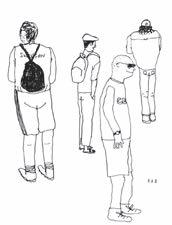
Danielle’s Lip Service, Erotic Phone Chat. 24/7. Must be 21+. Credit/ Debit Cards Accepted. All Fetishes and Fantasies Are Welcomed. Personal, Private and Discrete. 773-935-4995
I’m 58, 6ft 2, live in Palos Hills, Illinois Seeking a relationship with a nice young woman over 21 or 40. I am part black and Puerto Rican hoping someone could be a special. pauly63@ live.com
SWM Bull Seeks Hotwife
Fit SWM, 55, city dweller, seeks to be bull to your hotwife. Cucks are welcome to initiate the conversation. Open to all with the correct mindset. cllpm4u@yahoo.com
MJM SEEKS MATURE FEMALE PLAYMATE
married jewish male 52 seeks mature female weekend playmate likes on going hot oil massages and spanking likes drinks malls flea markets antiques bookstores golf I can host and discreet you can call or text 224-292-9899 em dragonmastercs69@ gmail.com
Submit your Reader Matches ad today at chicagoreader. com/matches for FREE. Matches ads are not guaranteed and will run in print and online on a spaceavailable basis.

52 CHICAGO READER - DECEMBER 23, 2021 ll
JOBS ADMINISTRATIVE SALES & MARKETING GENERAL REAL ESTATE RENTALS FOR SALE NON-RESIDENTIAL PROFESSIONALS & SERVICES CLEANING RESEARCH ADULT SERVICES WANT TO ADD A LISTING TO OUR CLASSIFIEDS? E-mail details to classified-ads@chicagoreader.com














































































DECEMBER 23, 2021 - CHICAGO READER 53 e Chicago Reader is now biweekly More than 50,000 copies will be available at nearly 1,200 locations across the city and suburbs. Find one near you: chicagoreader.com/map Upcoming Issues: Download a free copy of any Reader issue here: chicagoreader.com/chicago/issuearchives Winter Theater/Arts Preview Cannabis Conversations Best of Chicago 2021 Issue WCT Insert Spring Theater/Arts Preview Cannabis Conversations Jan. 6, 2022 Jan. 20, 2022 Feb. 3, 2022 Feb. 17, 2022 Mar. 3, 2022 Mar. 17, 2022 Mar. 31, 2022 Apr. 14, 2022 Visit www.squirt.org today to join the action Where ALL GUYS come together Where ALL GUYS come together





























54 CHICAGO READER - DECEMBER 23, 2021 ll Outside Noise Reduction Keeps Bugs & Spiders Out Reduce or Eliminate Fog & Water Noise from Outside? Visit stormsnaps.com or noisewindows.com sales@stormsnaps.com Alpina Manufacturing, Chicago, IL 1-800-915-2828 Soundproofing Window Inserts the platform The Chicago Reader Guide to Business and Professional Services To advertise, e-mail ads@chicagoreader.com home improvement legal books Fun, Clean, Picture Frame assembly JOB $18/hour Tired or bored of clicking away on a keyboard working at home? Keep your hands and mind busy with a fun, safe, clean assembly job. You’d have your own large assembly zone, at least 15-20 feet away from others, so we’re really safe here. Top rated rm Alpina Manufacturing LLC founded in 1992 Beautiful campus in Galewood, near Mars candy, 3 blocks north of Oak Park. We build and sell display framing systems to customers nationwide including Wal-Mart, Verizon, Circle K gas stations, Hospitals. Full time, Part time, Flex hours for working parents or students. We train, no travel, work in Galewood. Open to any backgrounds. Excellent pay, friendly caring management. Stop in anytime between 7am and 4pm M-F ask for Izzy to apply and check us out. Alpina Manufacturing 6460 W Cortland St., Chicago, IL 60707 business consulting entertainment Brigi e Schmidt Bell, P.C. 847-733-0933 lawyers@bsbpc.com Brigi eBell.com Brigi eSchmidtBellPC Considering Divorce? We Can Help. Collaborative | Prenuptual Divorce | Mediation insurance services mental health YOUR AD HERE dance JOIN US! WWW GECHAMBER COM shop local 5301N.ClarkSt.Fl.2 CHICAGODANCESUPPLY.COM 773-728-5344
























DECEMBER 23, 2021 - CHICAGO READER 55 the cannabis platform a Reader resource for the canna curious www.neuromedici.com 312-772-2313 Findouttoday ifmedical cannabisorinfusiontherapyis rightforyou.Telemedavailable! Yourpartnersinhealthandwellness. Serving medical cannabis patients since 2015. To advertise, email ads@chicagoreader.com CBD / cannabis recipes, psychedelic drawings to color, word puzzles to stimulate your brain, growing tips, and more! chicagoreader.com/420book The Budrista platform is a cannabis industry and lifestyle project. Its purpose is to support the healthy and balanced lifestyle of cannabis industry workers. Budrista functions through various outlets such as educational programming and recreational events. By signing up, you’ll have first access to our events and programming! Justice Hill, Alex Collyard & Friends 12 / 29 & 12 / 30 @ Sleeping Village Into It. Over It. w/ Blood Orange 12 / 31 @ The Hideout
CURRENT EXHIBITIONS
AT ILLINOIS HOLOCAUST MUSEUM
SPECIAL EXHIBITION
Explore how the Stonewall Uprising ignited the modern gay rights movement – and its connections to LGBTQ+ pride in Chicago.

ABE & IDA COOPER SURVIVOR STORIES EXPERIENCE
“Meet” an interactive 3D hologram of a Holocaust Survivor. Now showing: Pinchas Gutter, survivor of six concentration camps. What will you ask him?

MAKE A DIFFERENCE! THE HARVEY L. MILLER FAMILY YOUTH EXHIBITION
Featuring fun, hands-on activities, this exhibit empowers young visitors ages 8-13 to use their voices and make choices to stand up for themselves and others.

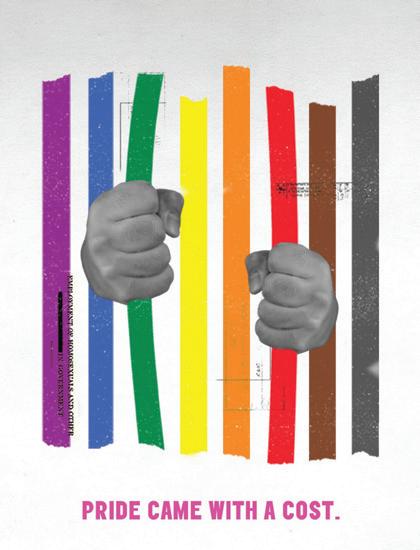
CODE WINTER21 12/23 - 1/2
Abe & Ida Cooper Survivor Stories Experience features Dimensions in Testimony, developed by USC Shoah Foundation in association with Illinois Holocaust Museum.







































































































































 @_KellyGarcia__
@_KellyGarcia__






















































































































































































































































































 By IRENE HSIAO
By IRENE HSIAO














































































 —MONICA KENDRICK
—MONICA KENDRICK
























































































































